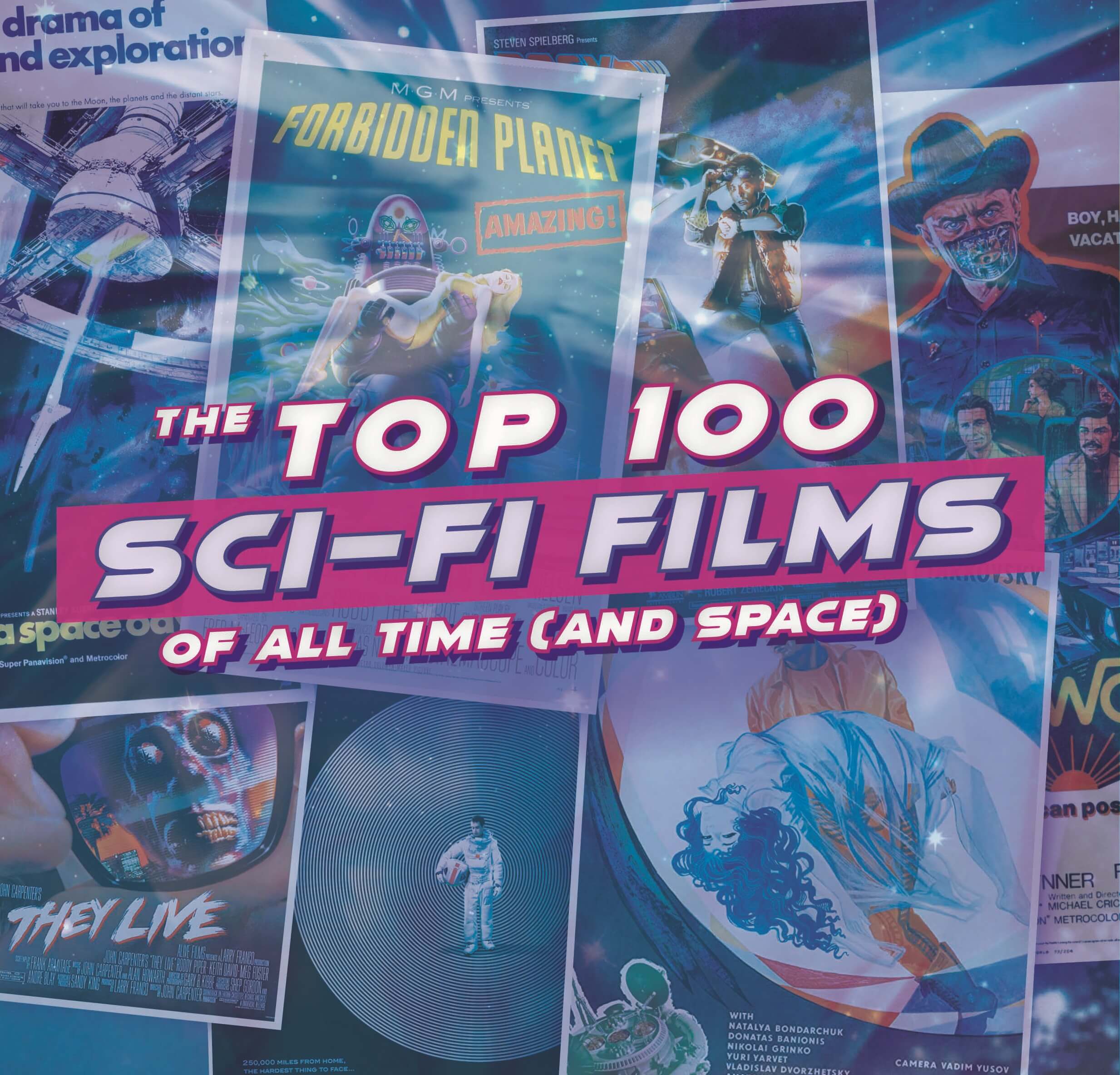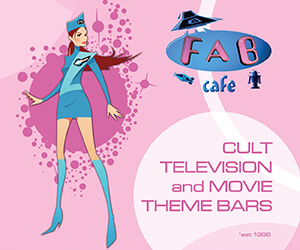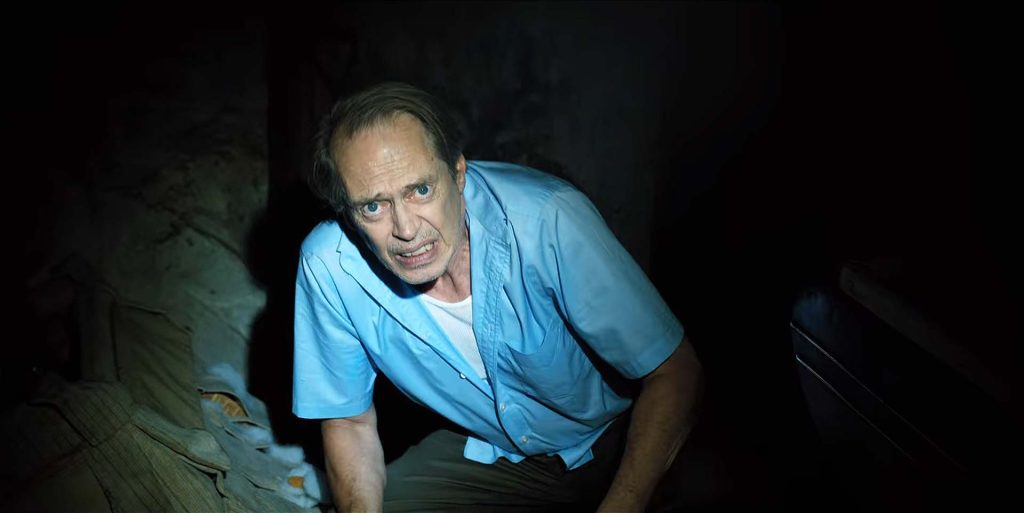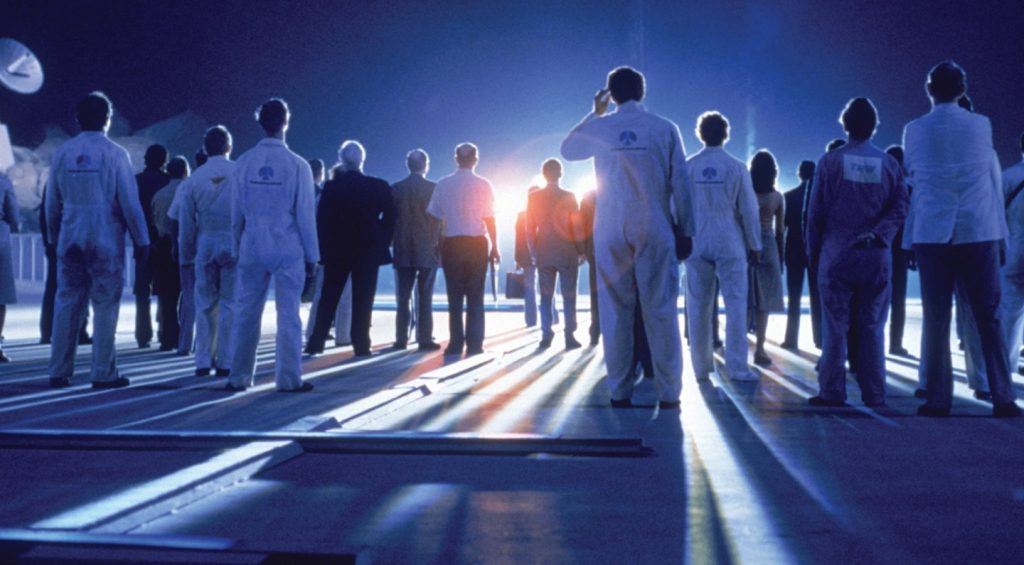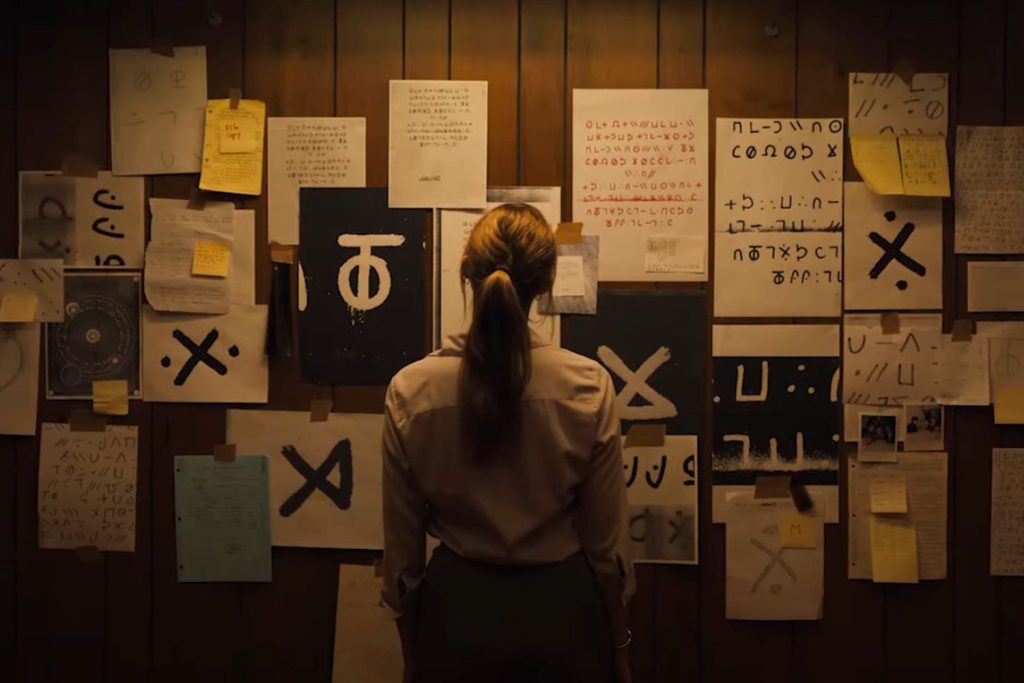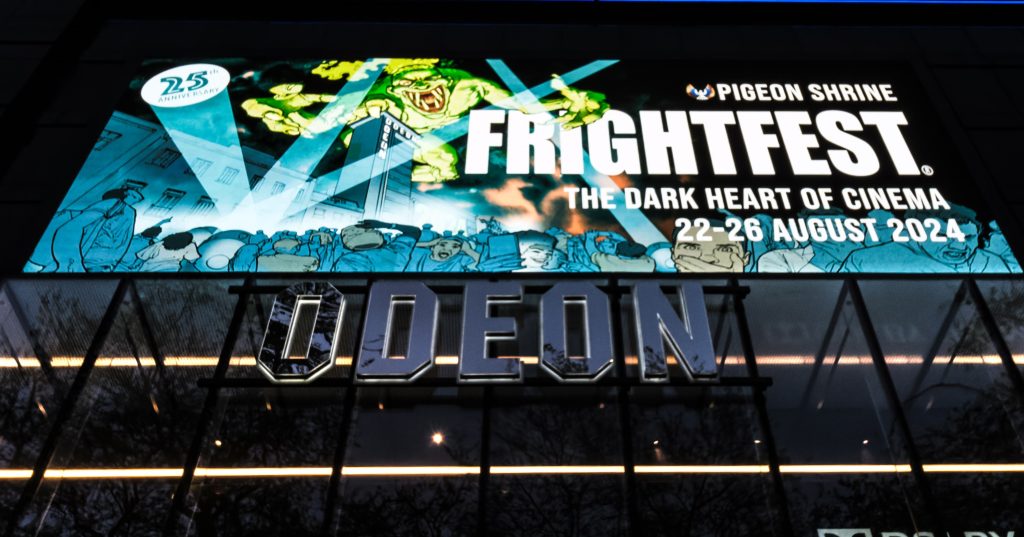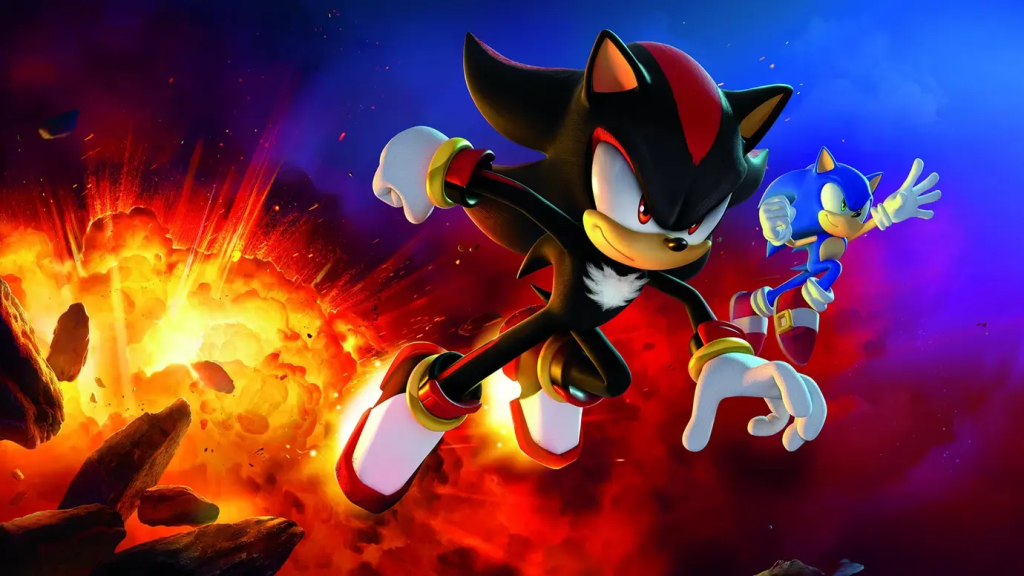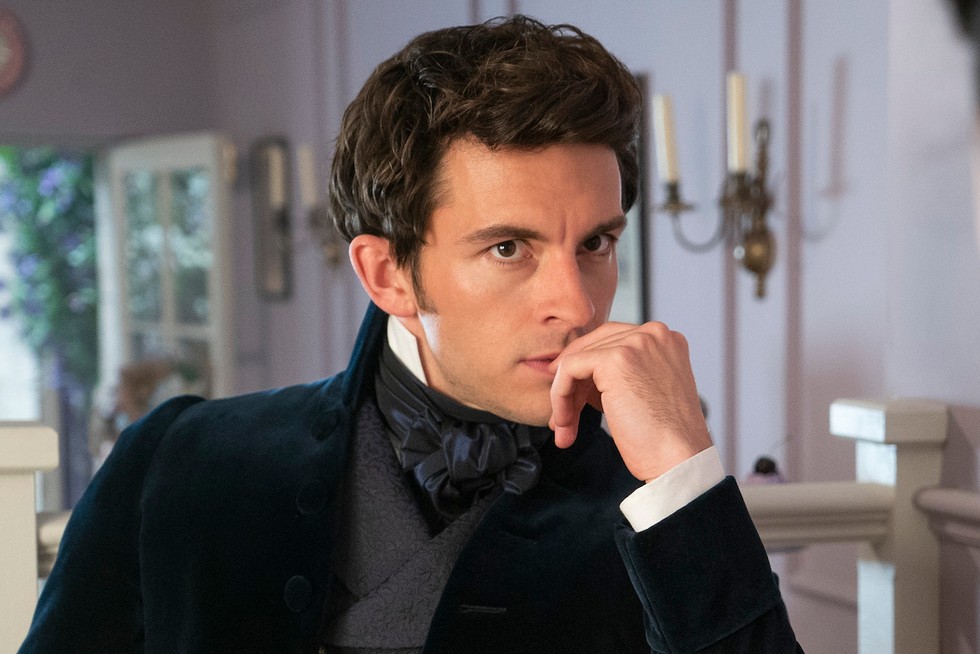To mark our milestone 100th issue as a team earlier in 2020, we made the decision to undertake our most ambitious poll yet, and set about sorting through thousands of titles in order to bring you the definitive countdown of the best science fiction film has to offer! Ever wondered which decade produced the most hits? (It’s the ‘80s.) Curious as to what the greatest Star Trek movie is? (Khan, of course.) Or what filmmaker was instrumental in defining the genre? [Okay, enough with the spoilers! – Ed] Then you’re in for a treat! Take a trip with us, as STARBURST returns to its roots for the ultimate tribute to sci-fi cinema…
100. DALEKS’ INVASION EARTH 2150 A.D. (1966)
This second big-screen adventure based on the TV series sees Peter Cushing return as the inventor ‘Dr Who’, as he and his granddaughter Susan, niece Louise, and passing policeman Tom arrive in a future England devastated by deadly Daleks. More colourful and action-packed than its predecessor Dr. Who and the Daleks in 1965, this ambitious sequel is unassuming, uncomplicated, bright and breezy fun. | PM
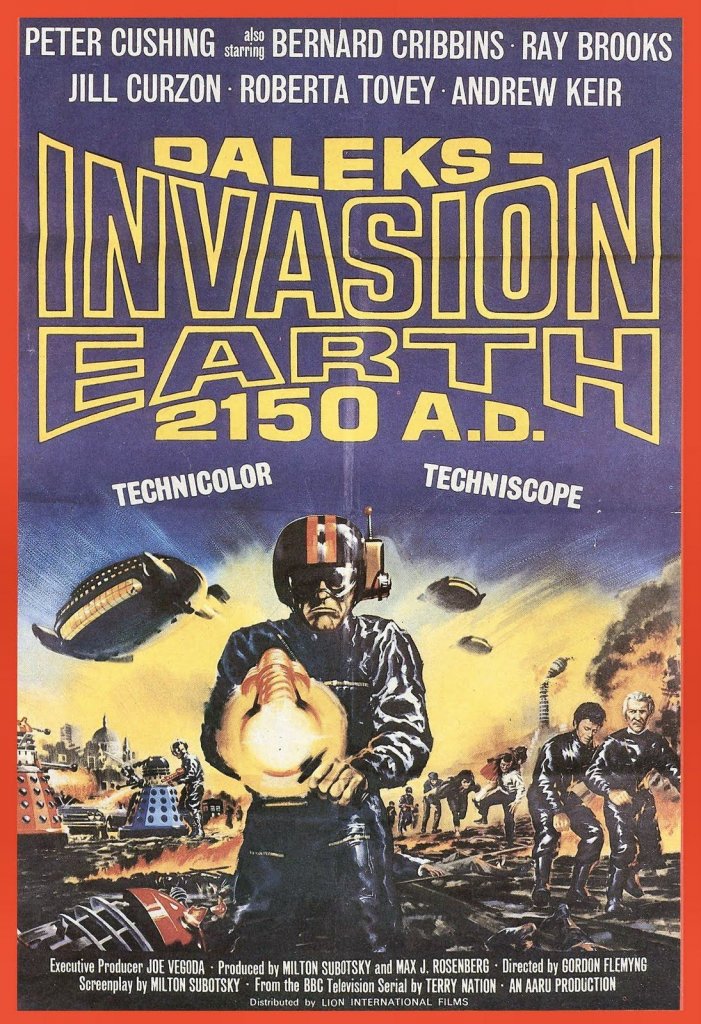
99. GATTACA (1997)
Gattaca was more than just a homage to ‘70s sci-fi, it turned out to be a seminal examination of eugenics and an attempt to answer the thorny question of what makes someone human. A beautiful piece of hard sci-fi that seems to have provided a prescient road map for modern-day America. | JR
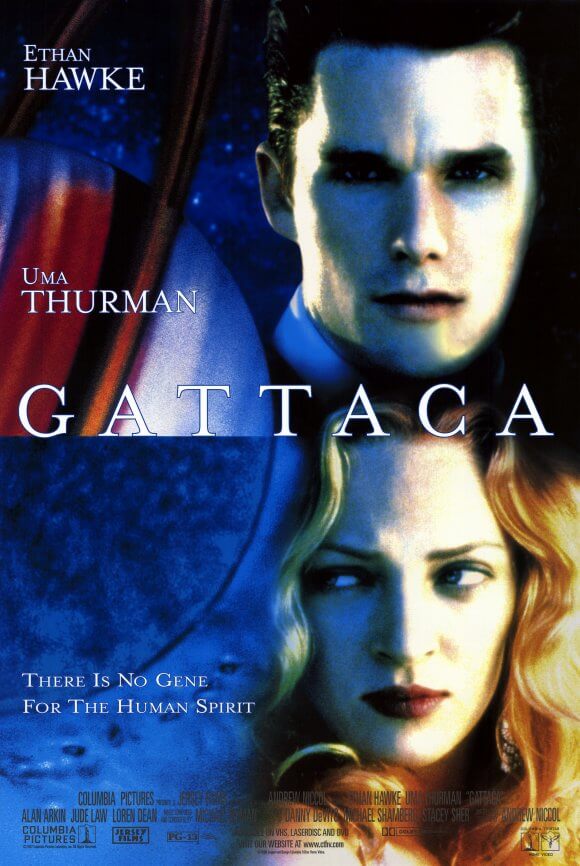
98. THEY LIVE (1988)
Roddy Piper excels as the everyman who sees through the façade put up by our controllers in John Carpenter’s satire on conformity and consumerism, which is just as notable for becoming more relevant the deeper we dive into late-stage capitalism as it is for that fight in the alleyway. | AB
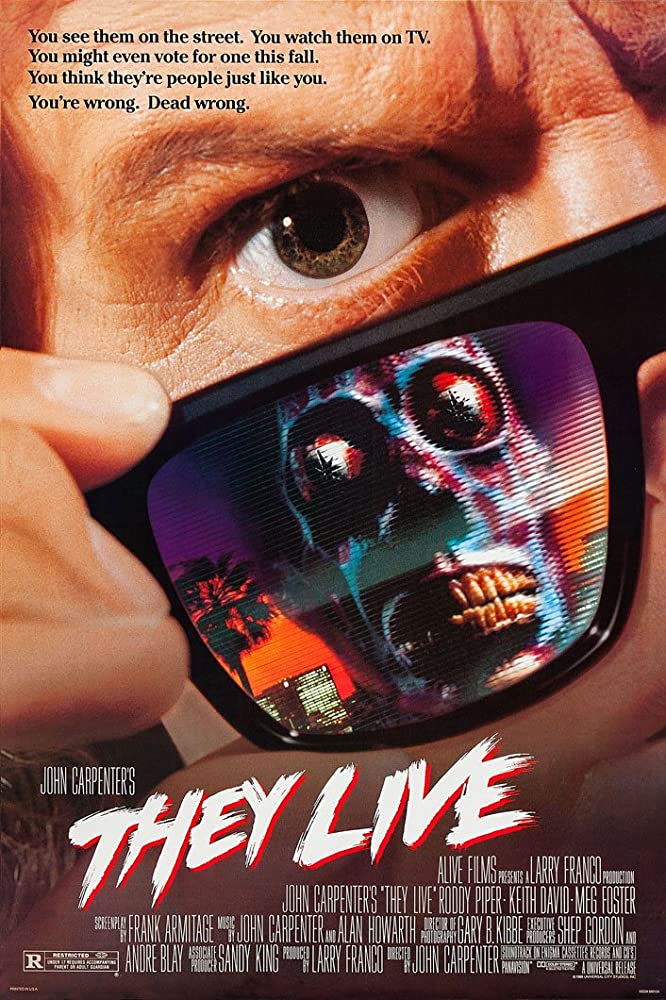
97. EDGE OF TOMORROW (2014)
Trapped in a hellish time-loop on an alien battlefield, the woefully under-trained Major William Cage (Tom Cruise) enlists the help of military legend Rita Vrataski (Emily Blunt) to tirelessly uncover exactly why this has happened. Doug Liman’s adaptation of the novel All You Need is Kill plunges its viewer into satisfying mayhem, while proving that there’s still very much an appetite for well written and forward-thinking sci-fi movies outside of existing franchises. | AD
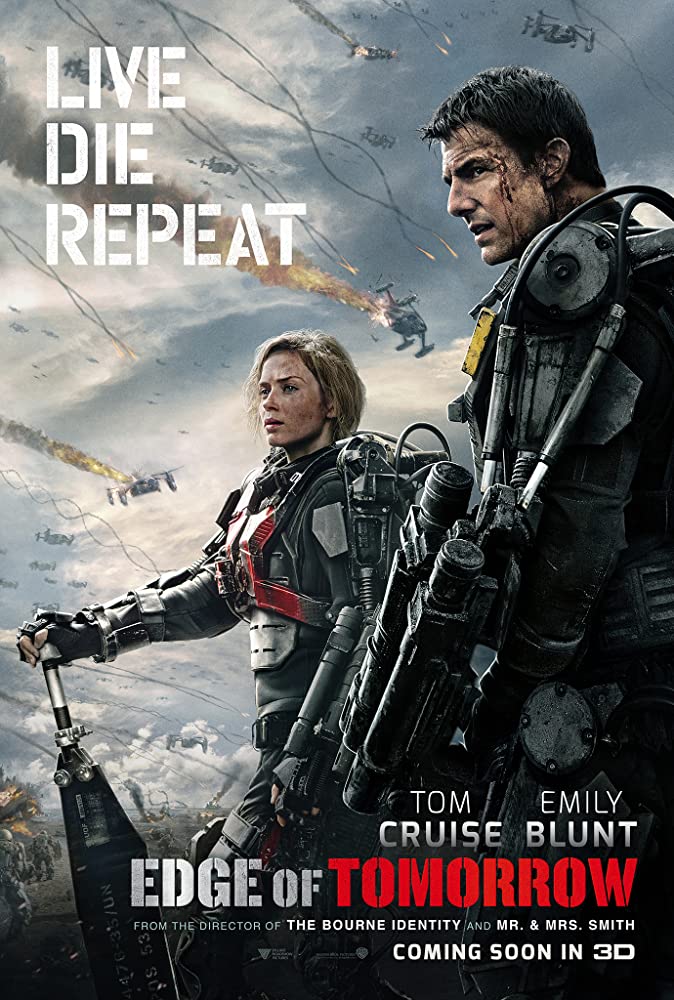
96. DARK CITY (1998)
Rich and elegantly sinister, Alex Proyas’ follow-up feature to The Crow is a dreamscape like no other. It’s The Matrix meets Metropolis in a Gilliam-esque nightmare city, where human lives are ‘tuned’ each night by the Strangers: a powerful dying race of pale, floating, trenchcoated aliens. | RK
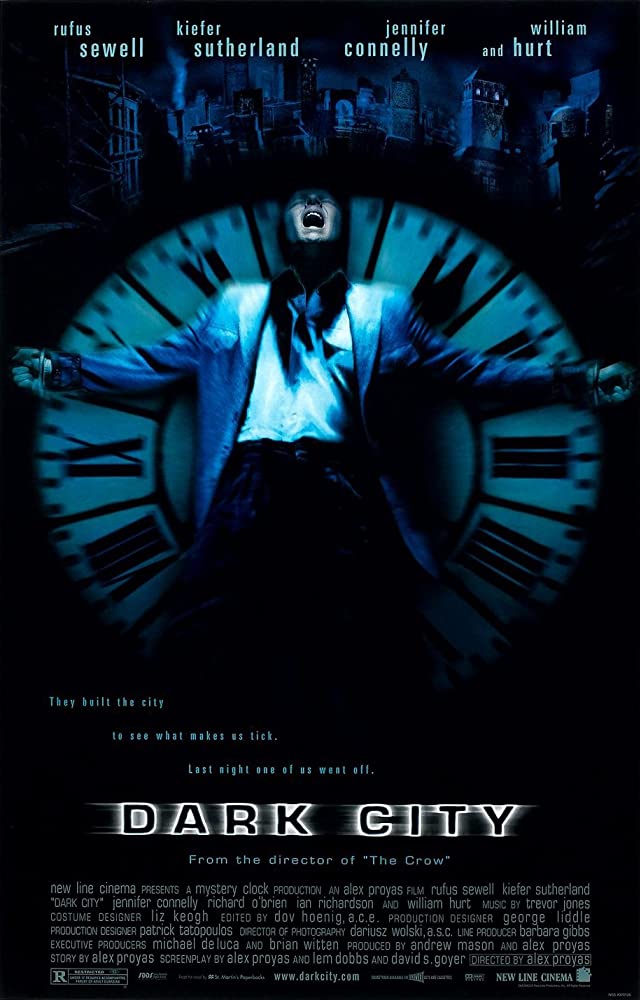
95. STRANGE DAYS (1995)
Strange Days holds the odd honour of being one of Hollywood’s few ‘cyberpunk’ movies that nails the genre, making it a spiritual sequel to Blade Runner. With a banging soundtrack and some dated cultural references, this uncomfortable and gritty tale of technology and the abuse of power is sadly still very relevant today. | EF
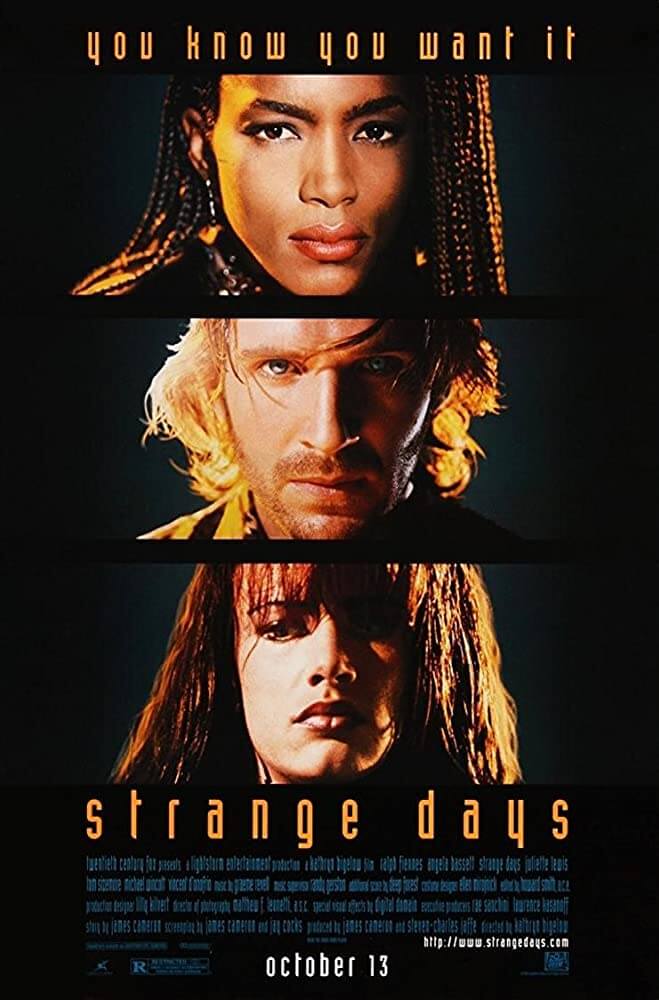
94. THE MAN WHO FELL TO EARTH (1976)
Inspired by documentary footage of David Bowie touring America, looking lost and disconnected from humanity, Nicolas Roeg cast the rock legend as the star of this surreal and sad take on the alien visitor trope; Bowie’s alien, seeking water for his drought-ridden planet, is doomed to succumb to human vices. | KM
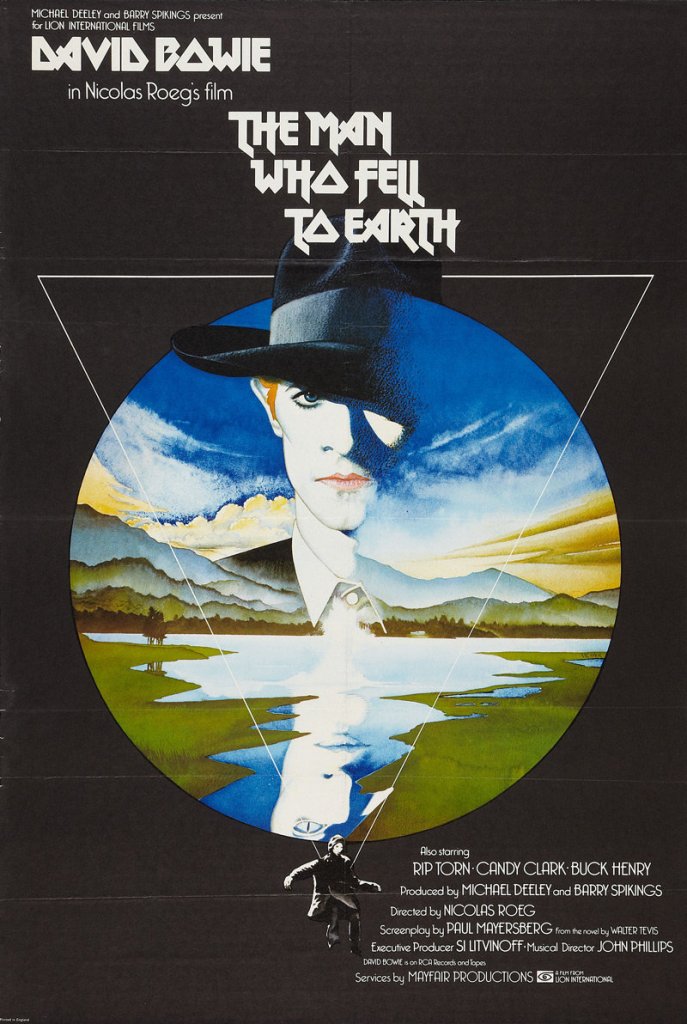
93. CUBE (1997)
A group of strangers traverse a three-dimensional labyrinth of eerily-lit cubic rooms with only a door on each side, having merely the most oblique of clues available to aid them in finding an exit and avoiding the deadly dangers awaiting them. Including the variable trustworthiness of each other… | AM
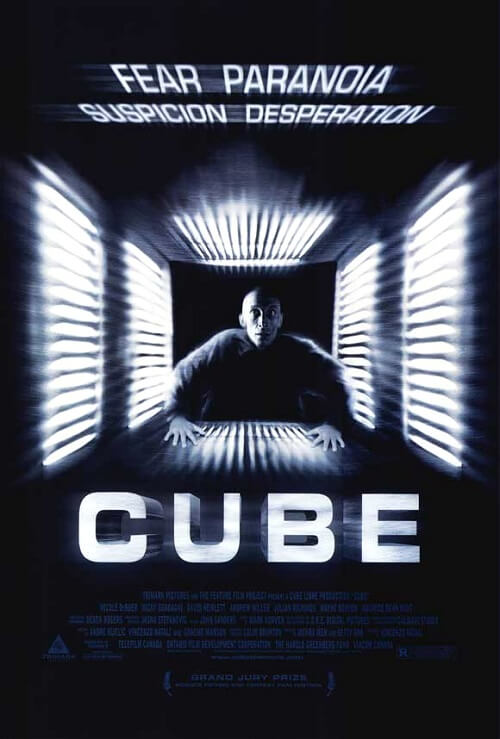
92. TRON (1982)
Steven Lisberger’s computer crusade has grown in the collective consciousness of cinephiles ever since it was released. Ground-breaking for its contribution to the development of visual effects in movies and influential among many filmmaking greats to come, Tron is the ultimate celebration of what certain films can accomplish and inspire. | JB
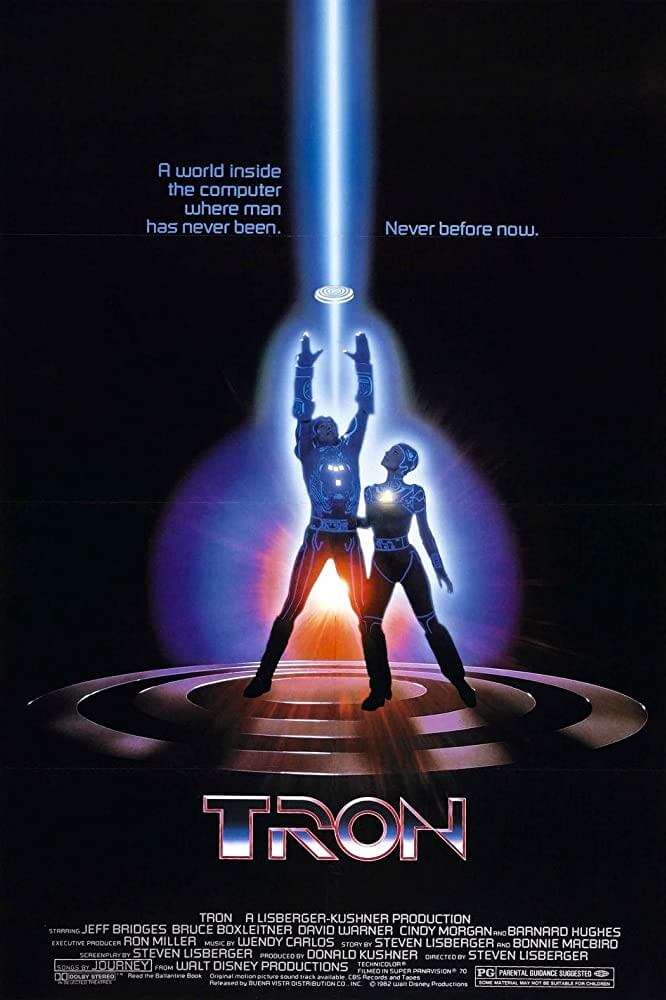
91. THOR: RAGNAROK (2017)
Taika Waititi’s debut outing for the Marvel Cinematic Universe split the loyalists down the middle. For some it’s too light, too concerned with being funny, but for others it’s a colourful interpretation of one of Marvel’s classic stories, twisted to include Asgard and set up Infinity War. We’re the latter, obv. | AB
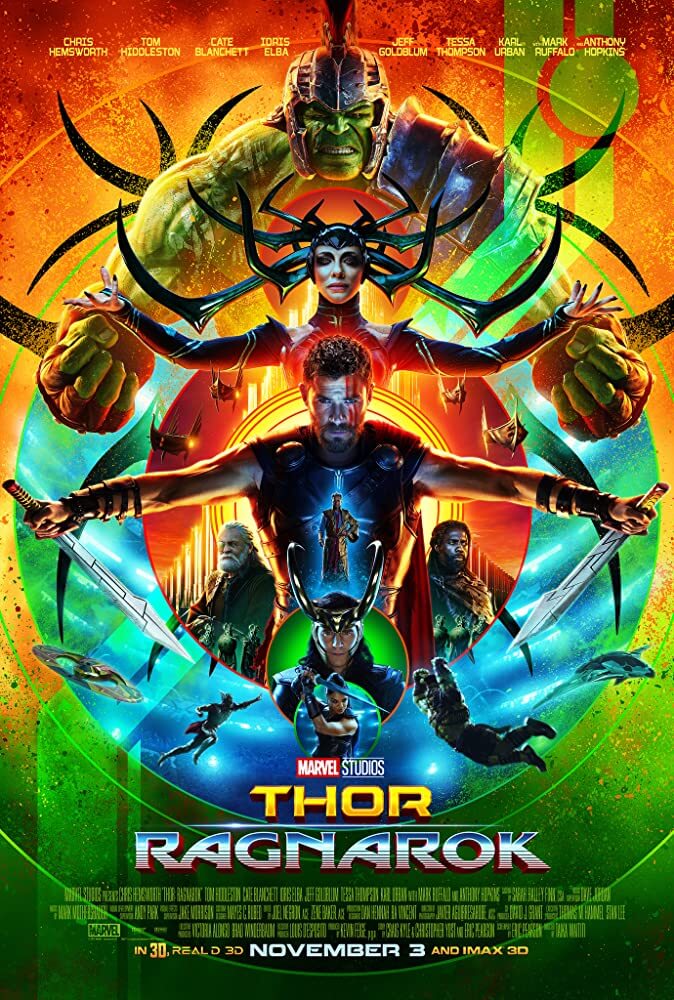
90. THE DAY THE EARTH CAUGHT FIRE (1961)
Miscommunication causes two simultaneous nuclear tests to tilt the Earth off its normal orbit, spinning toward the sun. As the world burns and civilisation crumbles, will the proposed plan of correcting with more nuclear blasts save us? Extensive filming at the Daily Express offices adds authenticity to this downbeat classic. | RP
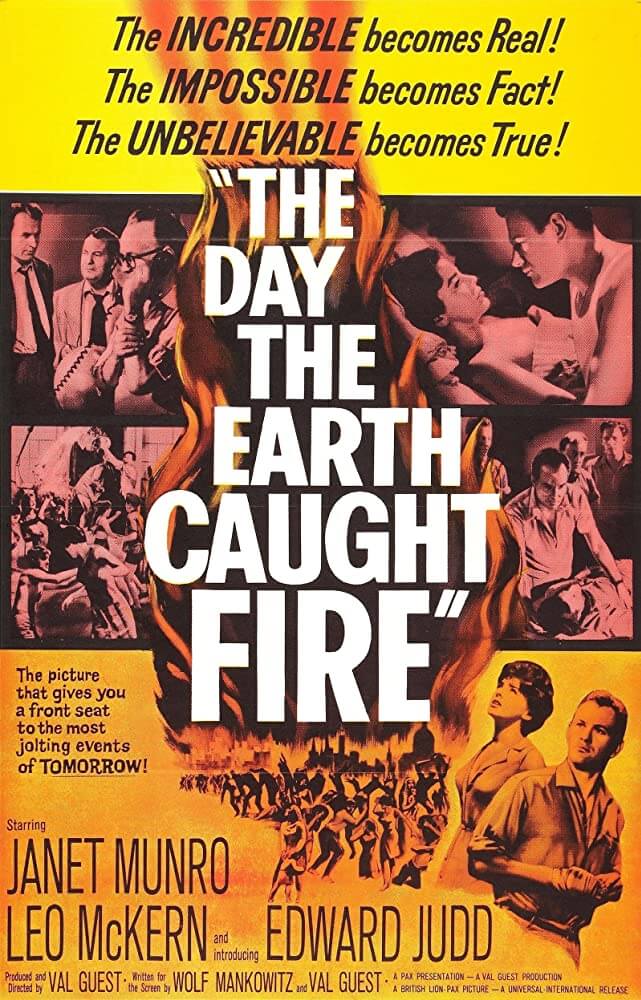
89. EVENT HORIZON (1997)
The idea that hyperspace drives on spaceships could open a portal to hell is not a terribly new one, but Event Horizon nails it perfectly. Sam Neill is always perfect as the reasonable-sounding madman, and he’s brilliantly cast in this. Terrifying and mesmerising, this is both a horror and sci-fi classic. | EF
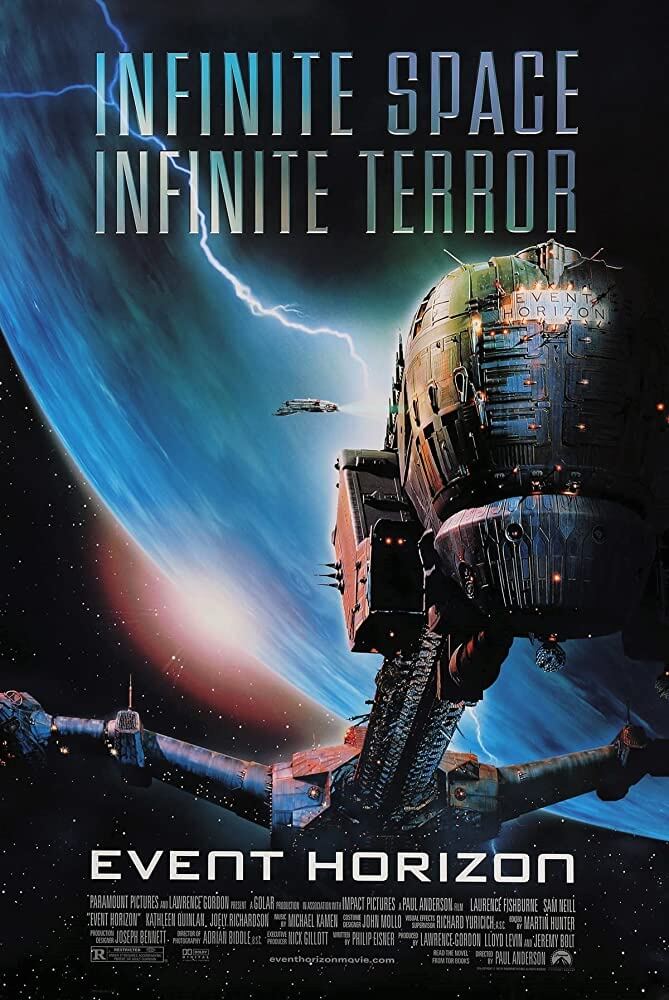
88. CAPRICORN ONE (1977)
Playing on both the hoaxed Moon landings theory and the emerging truth that governments don’t always act in the best interests of their people, Peter Hyams’ tight thriller was a rare hit from ITC Entertainment’s ill-fated foray into movie production. Elliott Gould is compelling as a journalist determined to discover the truth. | AB
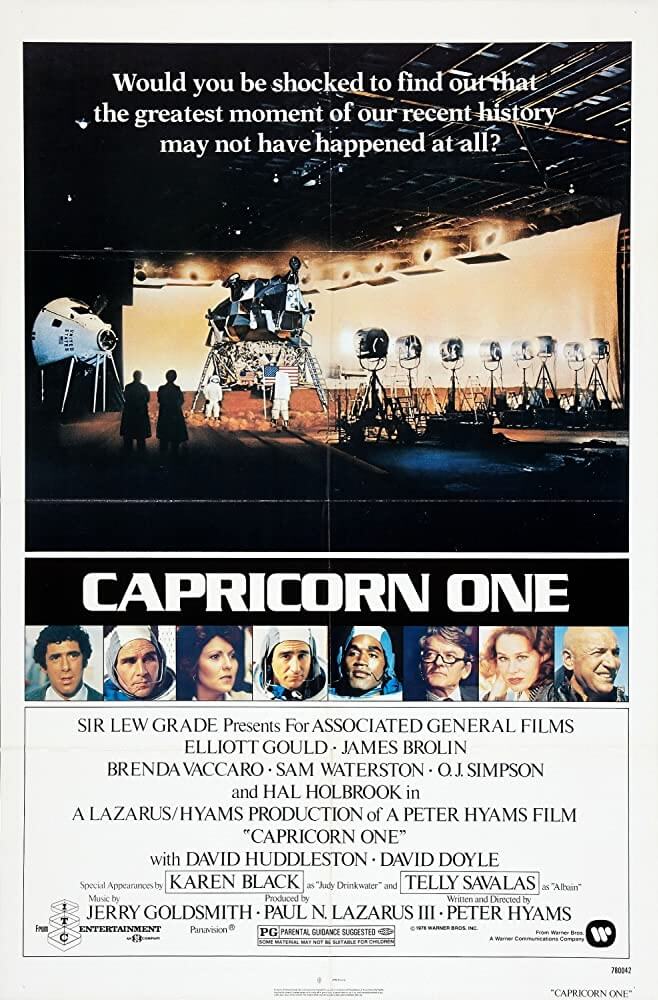
87. STAR TREK: FIRST CONTACT (1996)
Star Trek movies learned the hard way that they need to be short, high-budget blends of everything the fans crave. First Contact nails it: Picard quoting literary classics, Ryker being heroic, Worf punching stuff, Data chewing the scenery and, of course, The Borg. Sprinkle in time travel for taste. Delicious. | EF
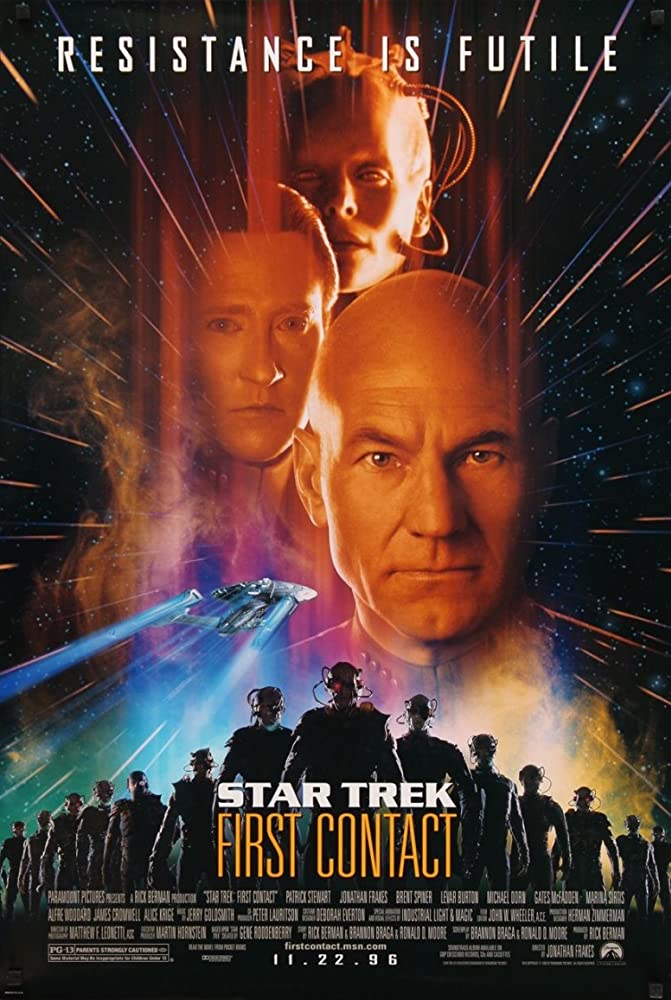
86. THE FLY (1958)
Based on a short story published just a year earlier, The Fly sees screen legend Vincent Price star as scientist François Delambre, who undergoes a horrifying transformation when a common house fly enters a molecular transporter he’s experimenting on. Help meeee! | SP
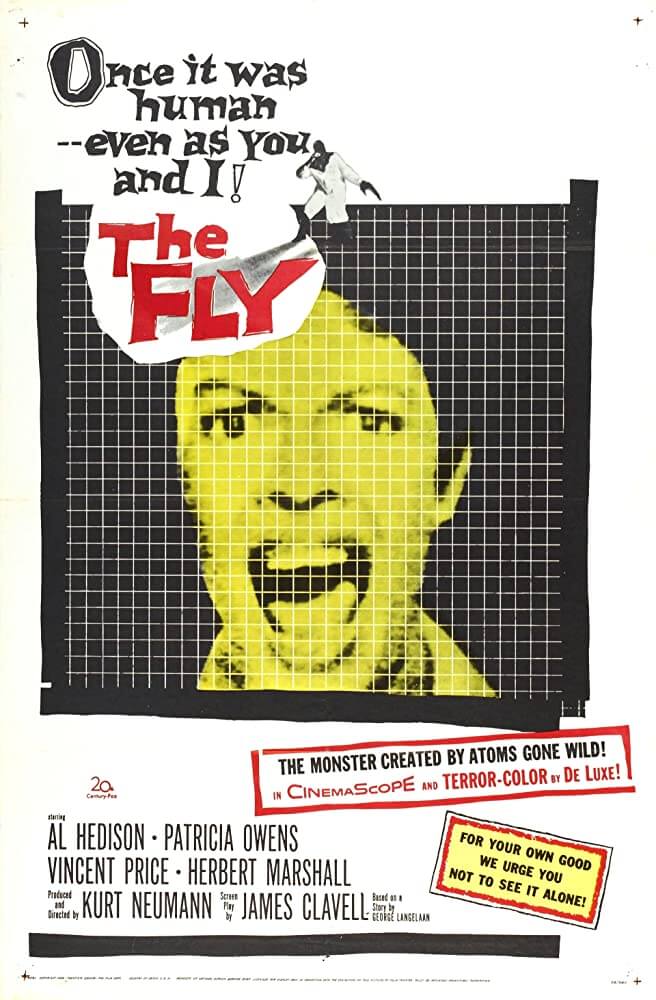
85. SUPERMAN (1978)
We believed a man could fly, but more importantly we believed a Superman could be more human than the rest of us in Richard Donner’s picture-perfect tale. Christopher Reeve set a high bar as both Kal-El and his human alter-ego, and both Krypton and Metropolis never looked so real. | AB
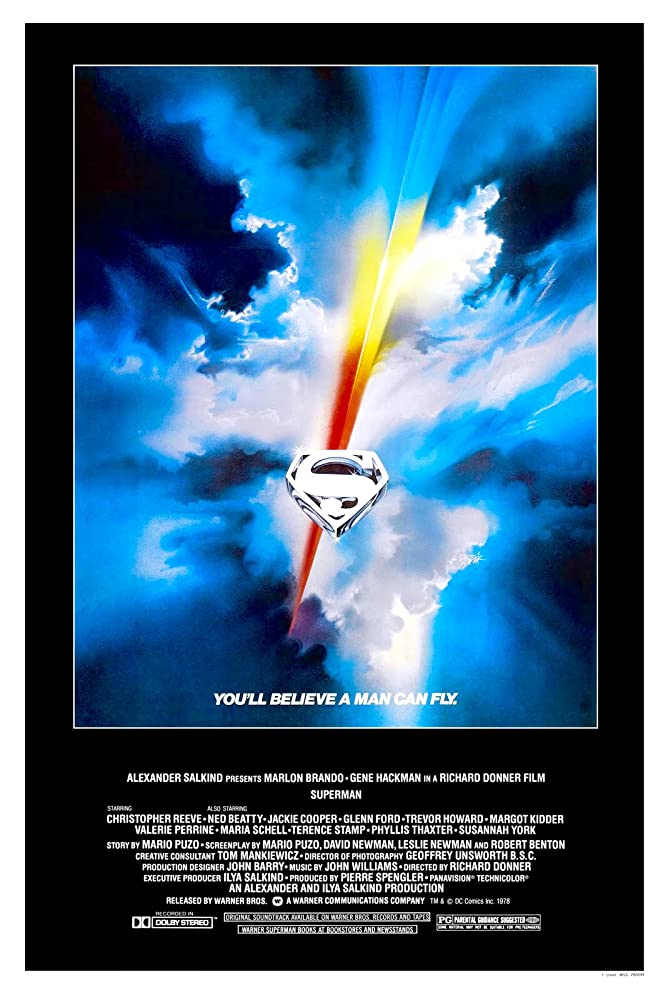
84. GODZILLA (1954)
The Godzilla movies may have leaned more heavily into their sci-fi elements as the franchise became weirder and more adventurous, but sci-fi has always been about exploring human psyches and capabilities. With that in mind, the original Gojira is right up there as a classic of the genre. | JH
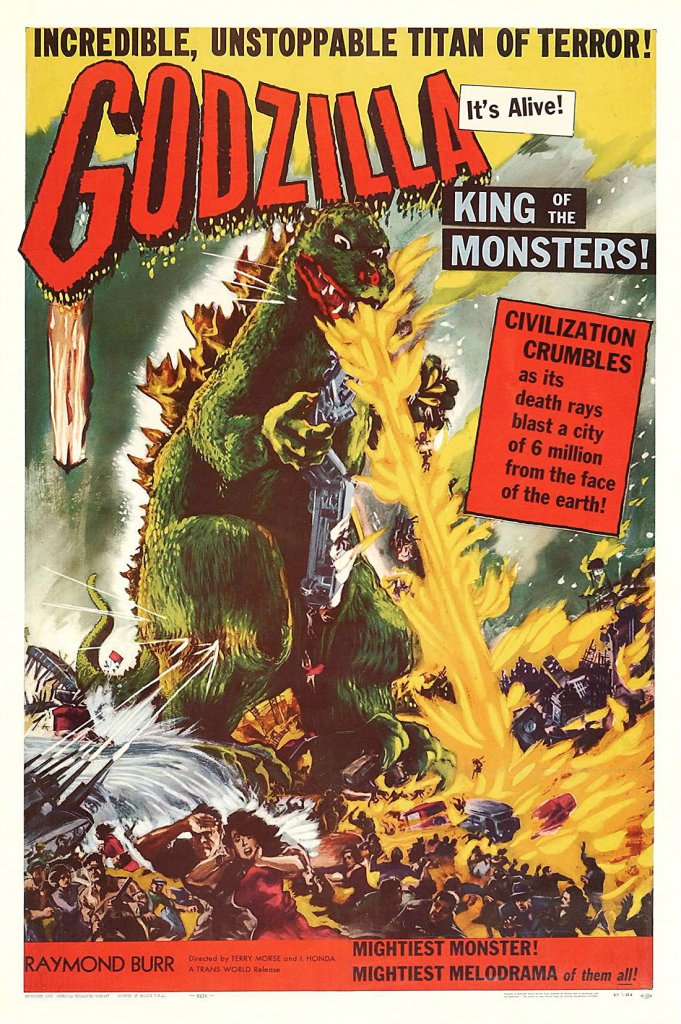
83. SUNSHINE (2007)
A rare box office misfire from Danny Boyle, this ambitious sci-fi adventure sends Cillian Murphy, Chris Evans, and a sturdy crew of astronauts out into space on a mission to reignite the dying Sun. A descent into slasher movie territory scuppers the last act somewhat, but this is generally a big, bold space movie. | PM
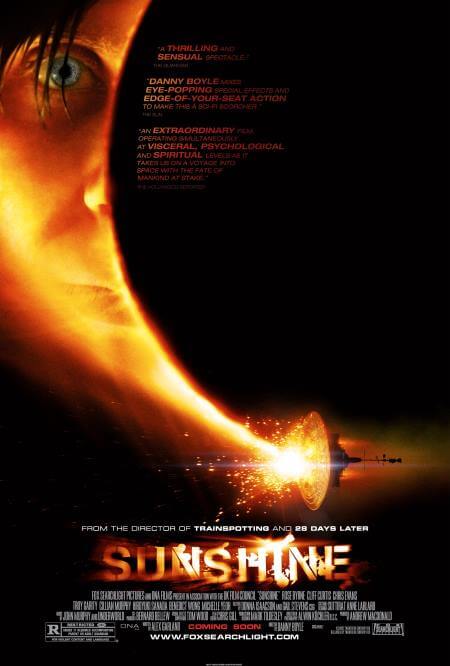
82. WESTWORLD (1973)
The original Westworld is a blend of western and sci-fi written and directed by a pre-Jurassic Park Michael Crichton. Three men (amongst them James Brolin) live out their machismo fantasies in a futuristic western theme park. However, their fantasy becomes grim reality as they are stalked by malfunctioning android (Yul Brynner). This film would later inspire sequel Futureworld, 1981’s long-forgotten Beyond Westworld TV series, as well as HBO’s acclaimed show of the same name. | NB
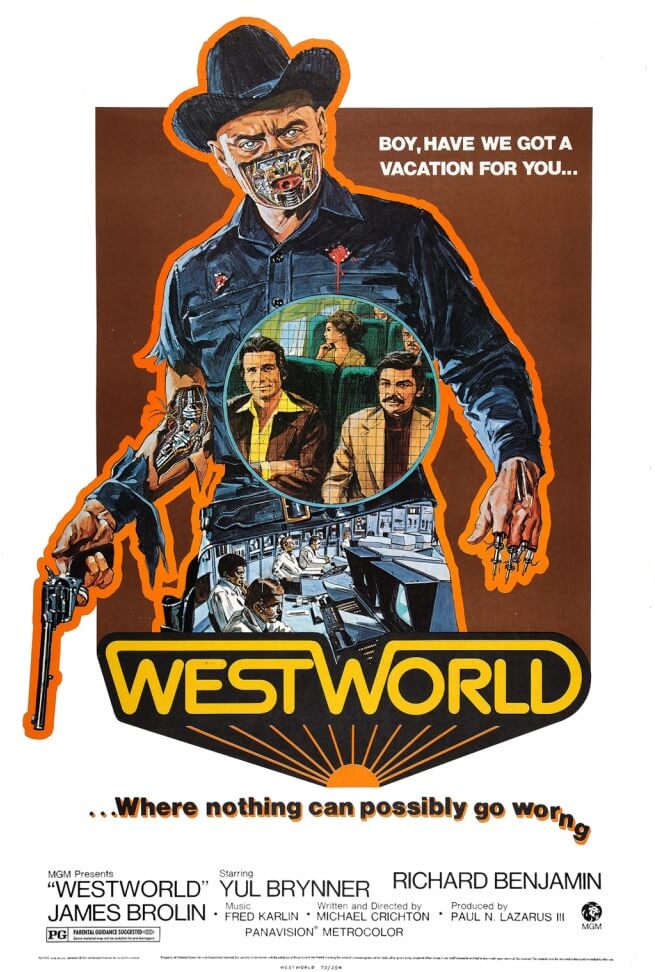
81. THE TIME MACHINE (1960)
Rod Taylor stars as George, a Victorian scientist who travels across time into the far future where humanity has devolved into the passive Eloi and the degenerate, cannibalistic Morlocks in George Pal’s colourful, visually arresting adaptation of the H.G. Wells classic. Still essential viewing fifty years on. | PM
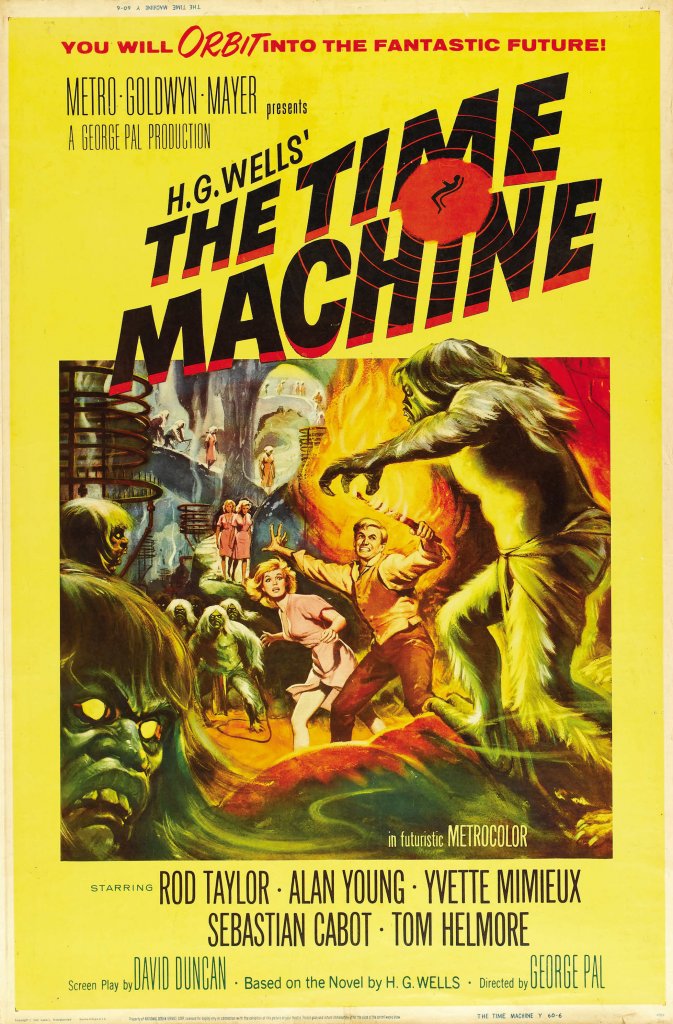
80. THINGS TO COME (1936)
From a time when sci-fi meant futurism rather than today’s world but a bit shitter, this H.G. Wells adaptation nevertheless makes some bold predictions about modern life that turned out to be prescient. William Cameron Menzies was one of cinema’s first true artists, and this film is his magnum opus. | AB
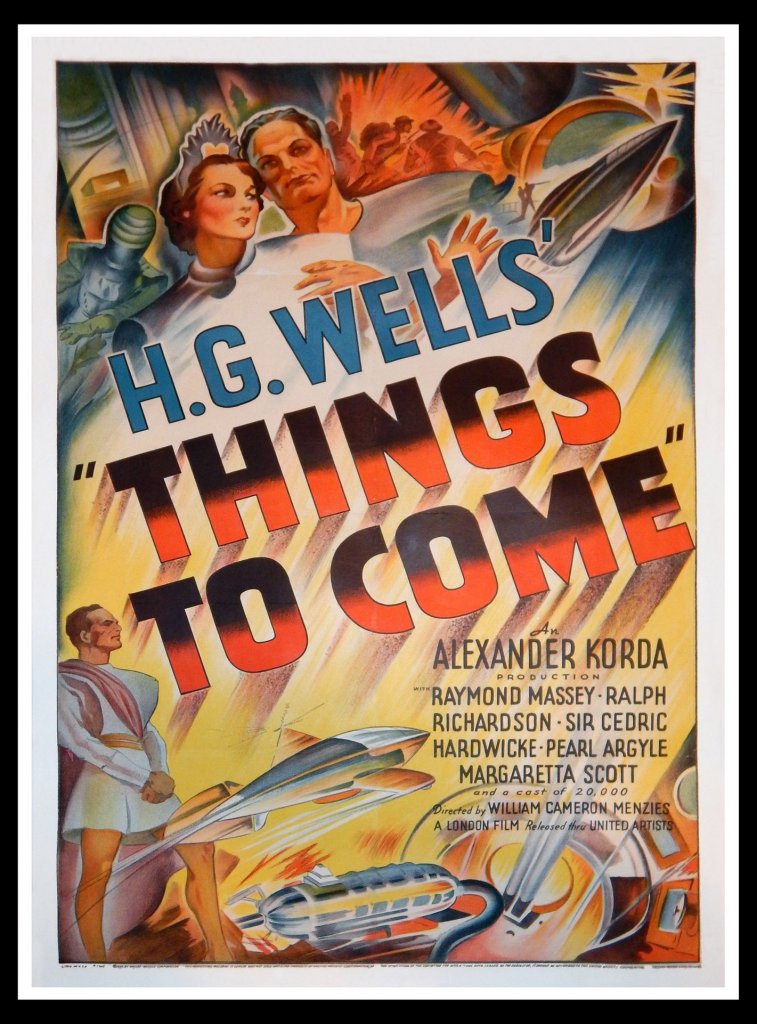
79. MAD MAX 2 (1982)
A thrill ride featuring one of the best car chases ever, Mad Max 2 sees George Miller perfect his post-apocalyptic hybrid of the western genre. A lucid and violent adventure slams its foot to the floor relentlessly. Only with Fury Road has Miller topped this phenomenal effort. | JH
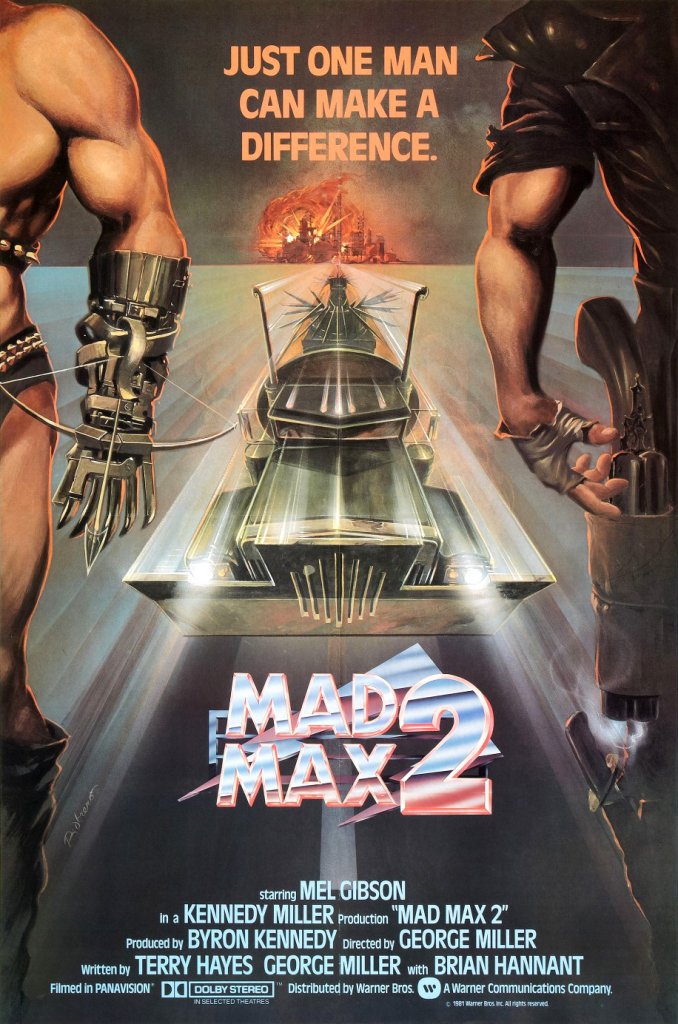
78. BRAZIL (1985)
In the world of Brazil, even calling out a plumber is an act of rebellion. Indeed, Robert De Niro plays the renegade repairman. Brazil is easily one of Terry Gilliam’s odder films. Set in a highly bureaucratic dystopian world filled with delicate and decaying things, Jonathan Pryce plays the doomed dreamer at the centre of the story. | EF
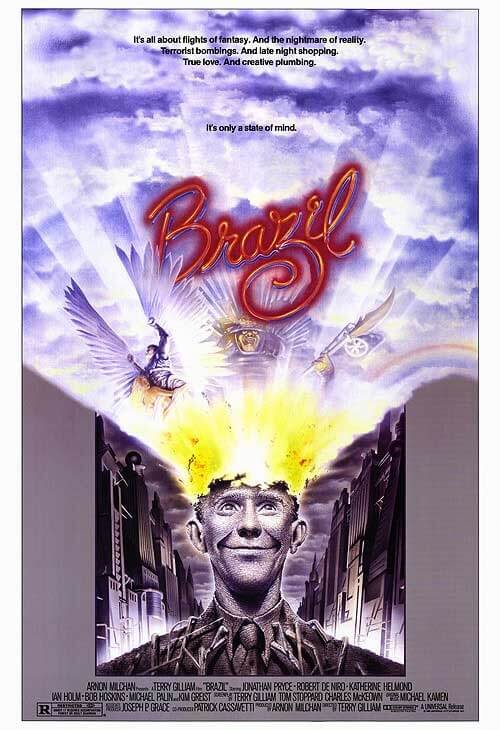
77. STARSHIP TROOPERS (1997)
Still director Paul Verhoeven’s most accomplished feature, Starship Troopers is a crackling combination of sci-fi spectacle, gruesome body horror, and subtle social commentary. Robert Heinlein’s 1959 novel hits the screen in an astonishing headrush of battle action and blood-letting, and the screeching alien ‘bugs’ are sci-fi cinema’s most relentless and hideous killing machines. | PM
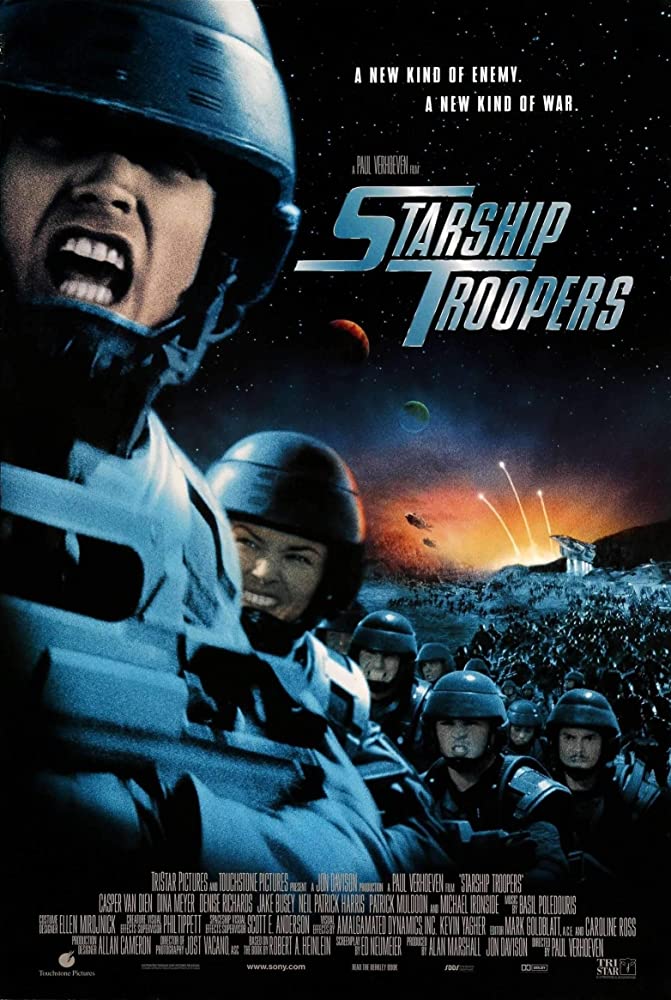
76. THE FLY (1986)
David Cronenberg’s incredible take on The Fly saw the legendary filmmaker bring body horror shocks and heart-wrenching heft to this tragic tale of science gone horribly wrong. Starring a sensational Jeff Goldblum, The Fly has much to say about the inevitability of fate and the rampancy of disease. | JB
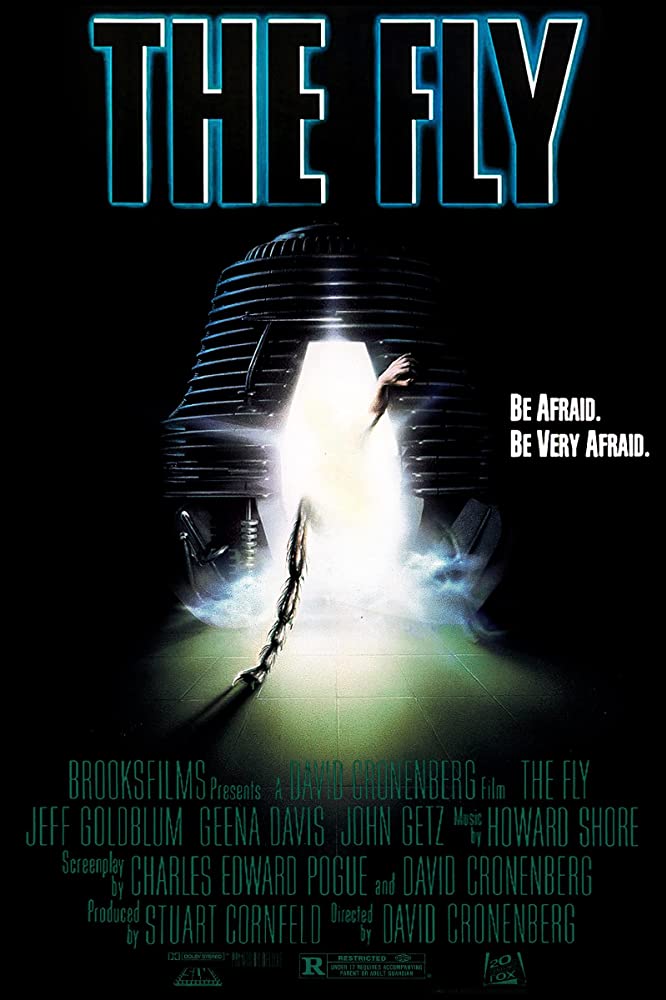
75. CONQUEST OF THE PLANET OF THE APES (1972)
Eighteen years after the heart-stopping events depicted in Escape, a worldwide pandemic (sounds familiar) has wiped out all domestic pets, and apes have taken their place and been forced into slave labour. Caesar (Roddy McDowall) leads an ape uprising in this surprisingly brutal and powerful entry into the series, which at least attempts to return to the allegorical spirit of the original. | PM
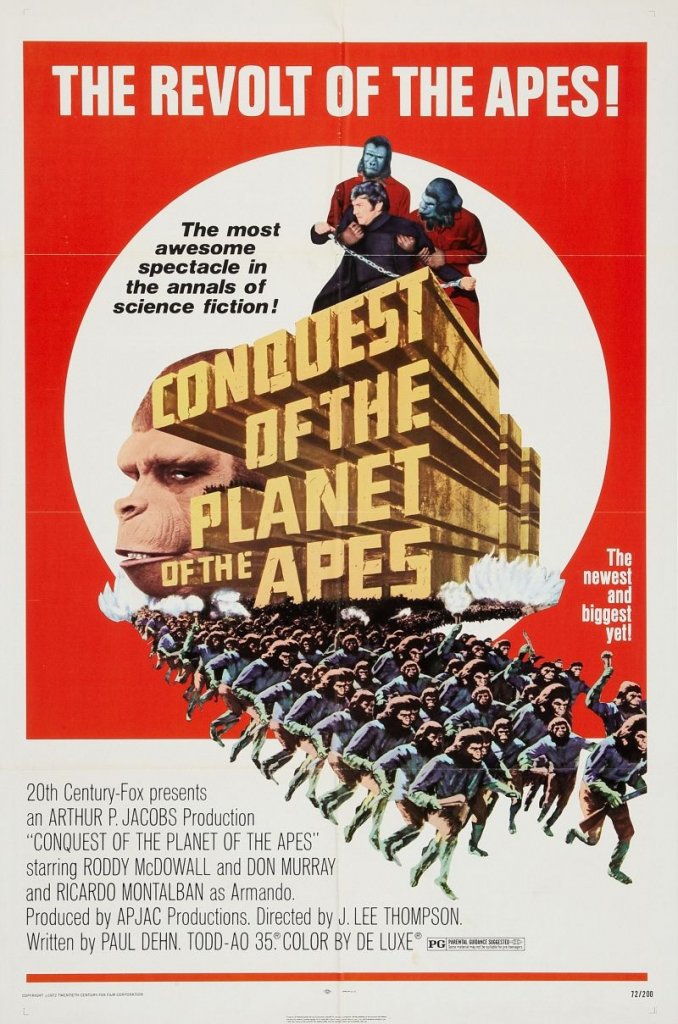
74. AVENGERS: INFINITY WAR (2018)
The Marvel Cinematic Universe delivered everything its fans could have hoped for – and so much more – in this extraordinary action-packed jamboree, which brought together virtually every superhero Marvel had carefully curated to the screen over the past decade to battle the unstoppable space tyrant, Thanos. Textbook superhero cinema with a genuine “What just happened!” cliffhanger finale. | PM
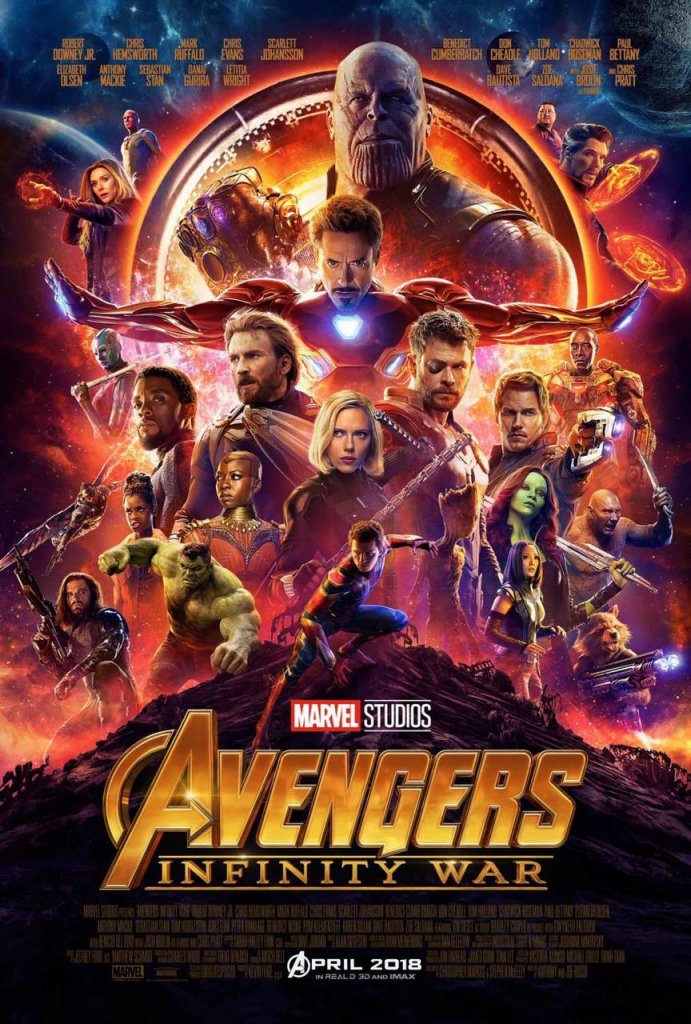
73. SHORT CIRCUIT (1986)
Long before WALL-E, Johnny 5 was alive! This army robot on a mission to get input and avoid being disassembled (after accidentally becoming sentient) is still an ‘80s kids’ classic, with Steve Guttenberg and Ally Sheedy starring alongside the main remote-controlled character. Anyone for some delicious nun soup? | JG
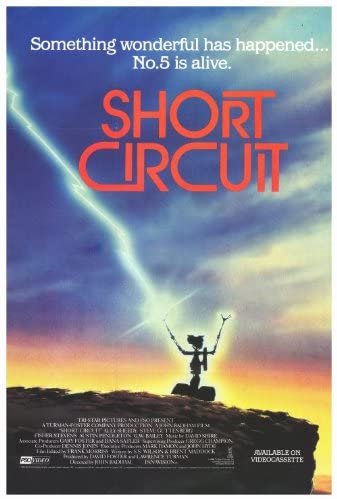
72. STAR TREK V: THE FINAL FRONTIER (1989)
Sometimes Star Trek likes to remind us that despite its message of universal fellowship, it’s still very much an American show, hence this tale about the search for the planet God lives on. This story features Captain Kirk getting all the best lines… due to it being directed by Shatner himself. | EF
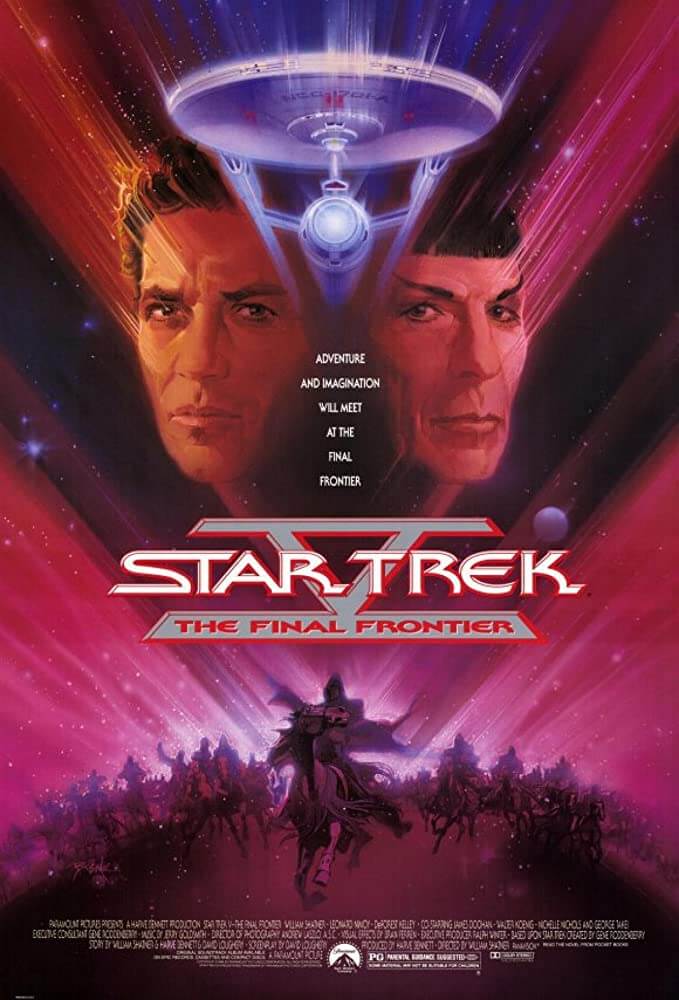
71. THE RUNNING MAN (1987)
Loosely based on a Stephen King novel, The Running Man may be pure camp, but it features an eerily prescient warning. Its dystopian take on 2017 is sadly incredibly accurate, highlighting a widening class divide and an ever-growing obsession with sensational, violent television. It’s well-worth a second viewing if you haven’t seen this gem in a while. | VB
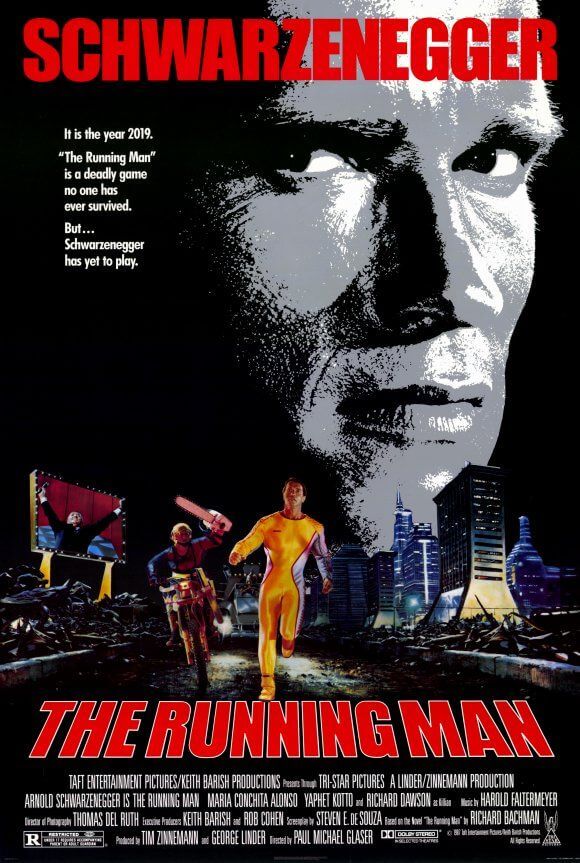
70. THE OMEGA MAN (1971)
Charlton Heston is at the height of his alpha-male cinematic powers in this second (and best yet) reworking of Richard Matheson’s classic post-plague dystopia I Am Legend. Heston is a brooding, self-regarding anti-hero, under siege by countless infected night-creatures. Reflecting numerous seventies’ cultural touchstones, this is brash, bombastic and brilliant. | RC
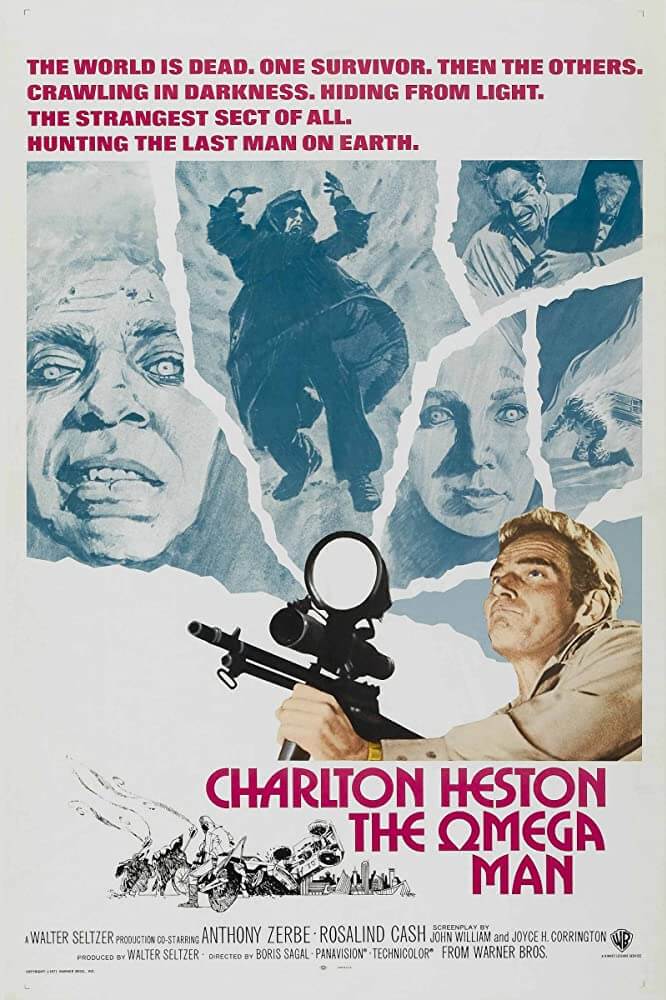
69. GALAXY QUEST (1999)
Galaxy Quest is easily the best Star Trek movie that Star Trek never made. This sci-fi parable about actors trapped in their roles is unforgettably good. You can’t make a parody this funny without feeling very strongly about the source material you’re satirising, and as such, this is a love letter to Star Trek and its fandom that has never been equalled in terms of scope and fun. Its casting is perfect, the effects are very strong, and plot, though now well-trodden, is still hilarious. | EF
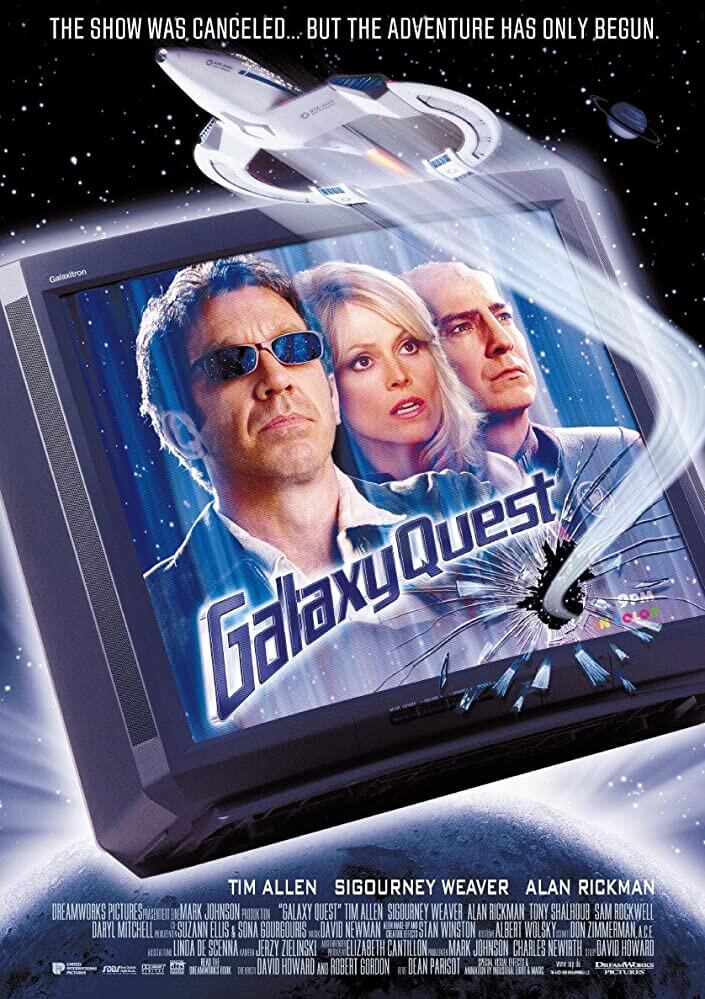
68. DONNIE DARKO (2001)
Richard Kelly’s cult classic meshes time travel, mystery, and comedy into something dreamlike and mesmerising. Imagine John Hughes having an existential crisis, and you might come close to this ‘80s set-film following troubled teen Donnie as he has dark visions of giant rabbits and the end of the world. | JA
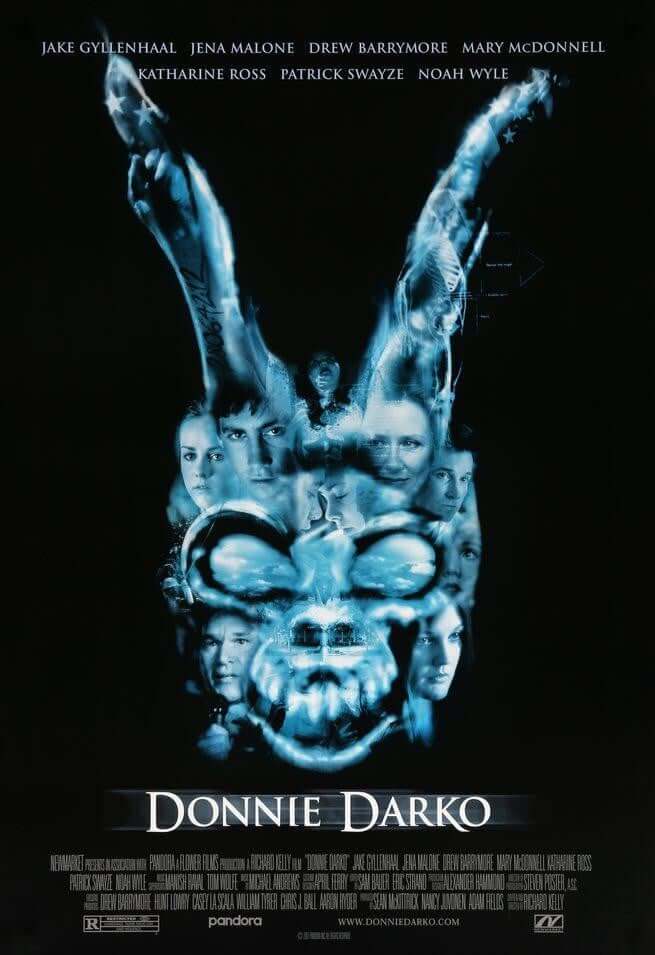
67. GRAVITY (2013)
Alfonso Cuarón’s Gravity is a spectacular technical motion picture achievement but also a soulful story of not just survival in the harshest possible atmosphere, but escaping the grasp of depression and being reborn, as Sandra Bullock shines as astronaut Ryan Stone. One of the best films about space ever made. | JB
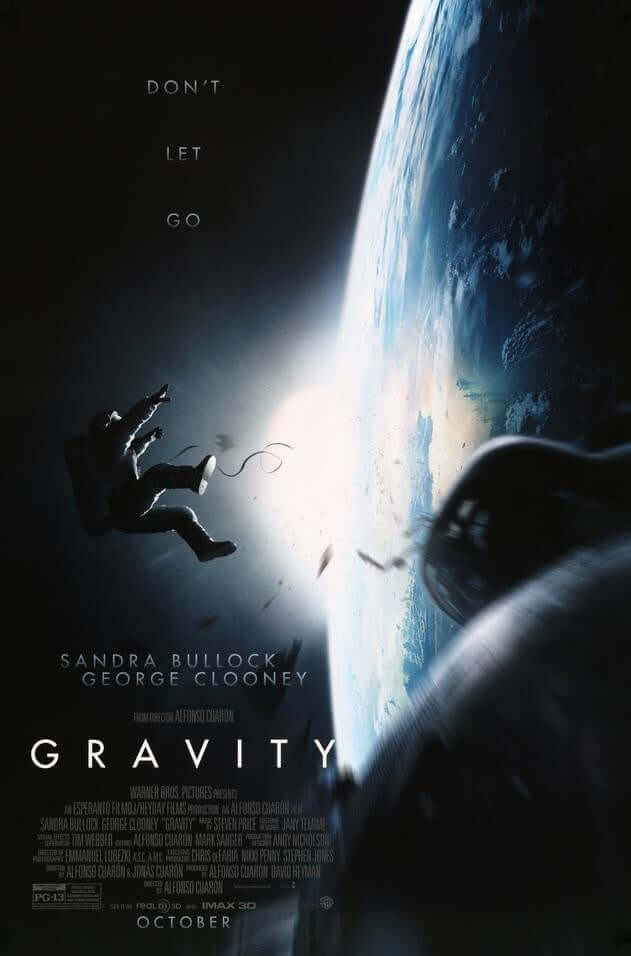
66. IT CAME FROM OUTER SPACE (1953)
Based on a story by the legendary Ray Bradbury, this story of aliens landing on the outskirts of a small desert community, replacing some of the townspeople with vacant, zombie-like duplicates, might seem like a paranoid ‘red under the bed’ fantasy, typical of its time. But there’s more going on… The aliens didn’t even want to be here – their craft broke down, and they want to repair it so they can be on their way. They know we’re not ready to meet them. The missing people are helping them fix their ship. | RP
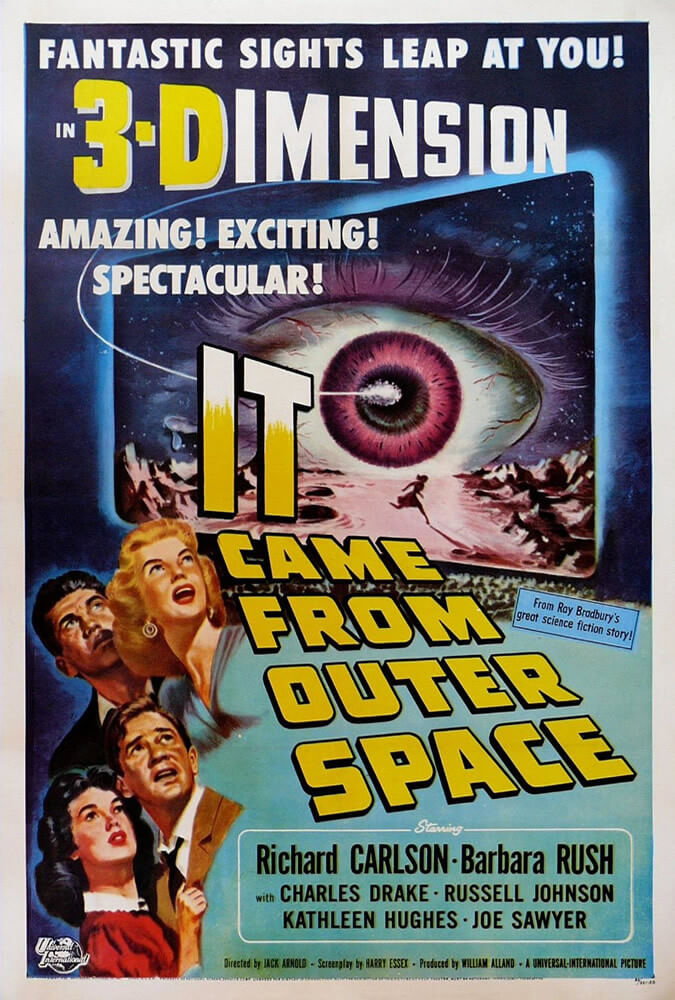
65. STAR TREK IV: THE VOYAGE HOME (1986)
In an alternate timeline somewhere, Star Trek: The Voyage Home stars Eddie Murphy as a wise-cracking Marine biologist. Luckily for us, this ridiculous tale of Captain Kirk and his crew going back in time to rescue slash abduct a whale still works very well without the SNL A-lister. Quotable, funny, and wry. A classic. | EF
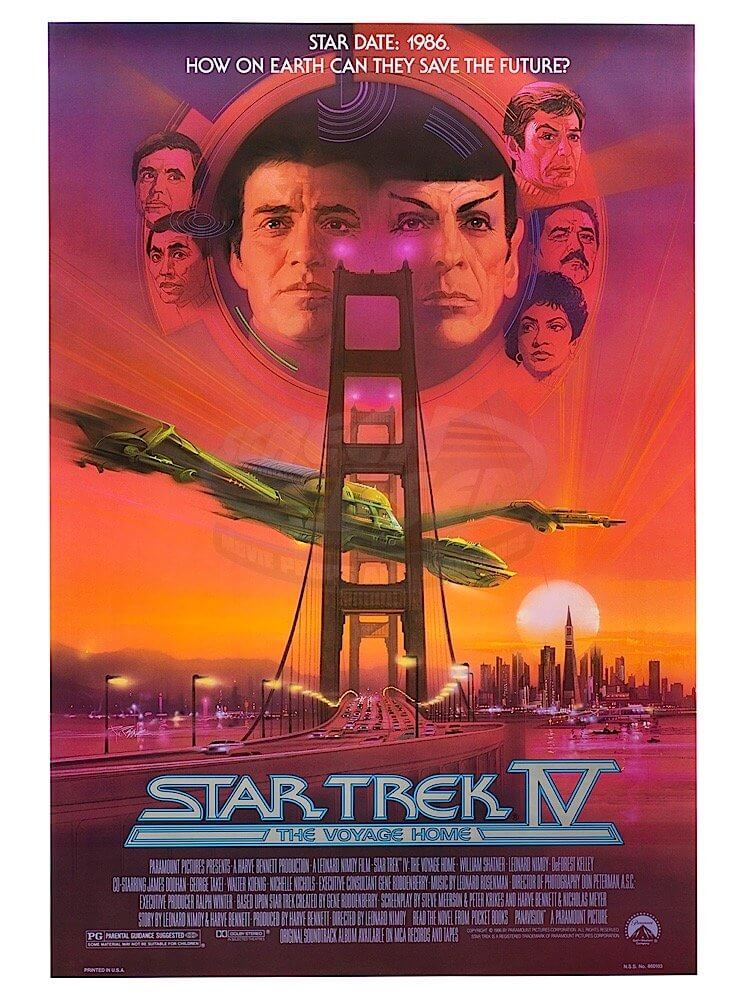
64. STAR WARS: EPISODE VII – THE FORCE AWAKENS (2015)
The most anticipated film in decades, The Force Awakens re-united characters from the original trilogy and placed them in a story with new faces that kicked off the wildly divisive Disney era of Star Wars cinema. Exciting, nostalgic, and sweeping, this was co-written by director J.J. Abrams, Michael Arndt, and the mighty Lawrence Kasdan, who retraced some old steps as they harnessed our love of the past to progress to the future. | JB
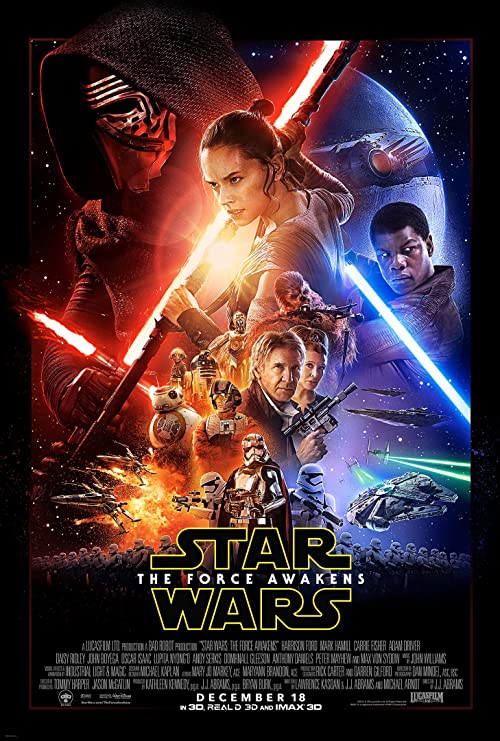
63. SOLARIS (1972)
Stanisław Lem’s novel Solaris is a meditation on how humanity could never hope to understand a truly extra-terrestrial intelligence and as such is impossible to film. That hasn’t stopped them trying three times, four if you count a recently recorded stage version. The original movie is the source of a whole subgenre, specifically ‘haunted’ space stations that draw upon science and human condition rather than the supernatural as its source. The result is always mesmerising. | EF
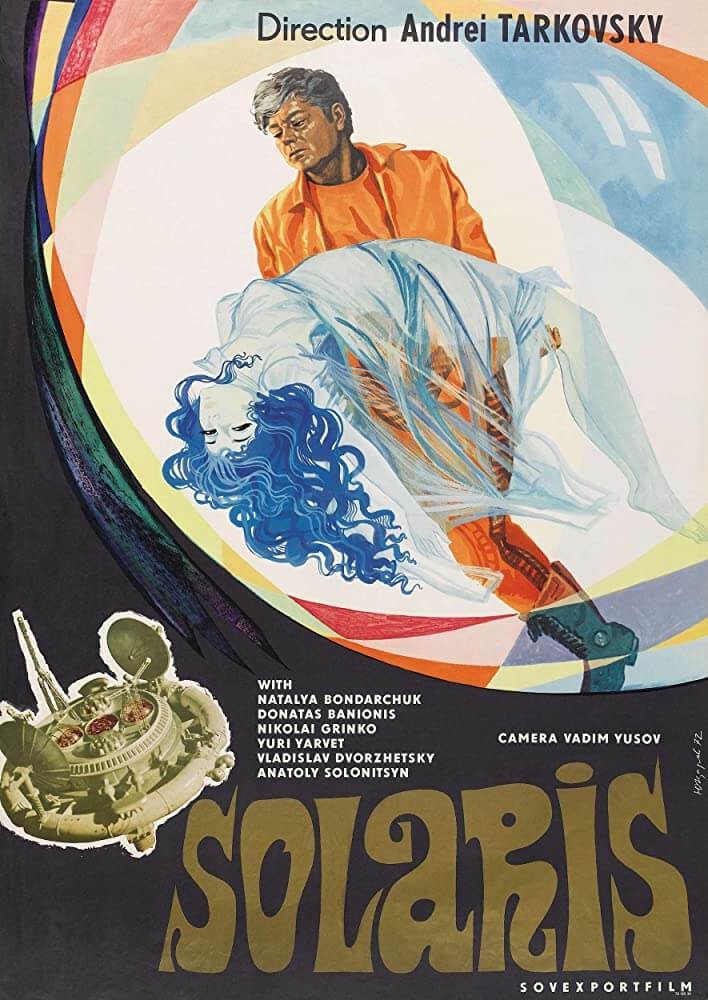
62. TRANSFORMERS: THE MOVIE (1986)
For those of us of a certain vintage, a present-day re-watch of Transformers: The Movie still never fails to bring a tear to the eye. Brimming with sleek, groundbreaking animation, a fist-pumping soundtrack, carnage the likes of which a ’kids’ movie’ had never before seen, and shocking moments that shook the future of the IP to its very core, iconic doesn’t even come close to cutting it for Nelson Shin’s masterpiece of a movie. | AP
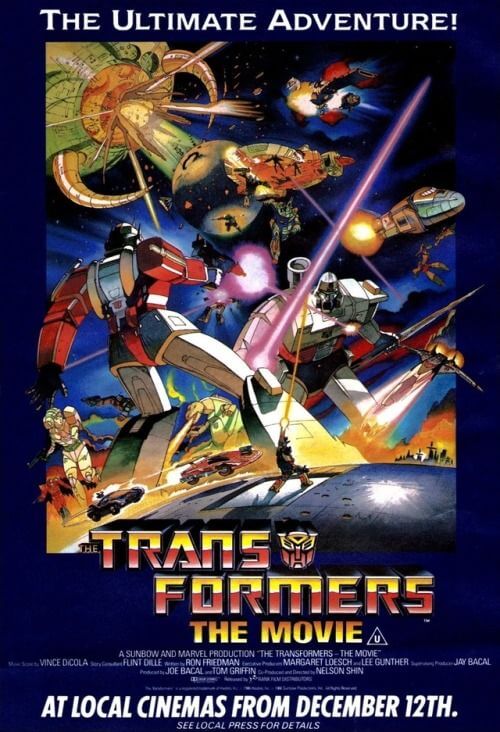
61. STAR TREK III: THE SEARCH FOR SPOCK (1984)
This isn’t the best Star Trek movie, but it’s worth watching for Christopher Lloyd’s performance alone, the actor playing a power-mad Klingon keen to steal the Genesis device from the previous film. Though the stakes are huge, it’s a pleasingly small-scale movie, with only about ten Klingons for the heroes to defeat. The film’s highlights include a brutal fight between a Klingon and Kirk’s son David, and finally seeing the restored Spock back among his friends. | SV
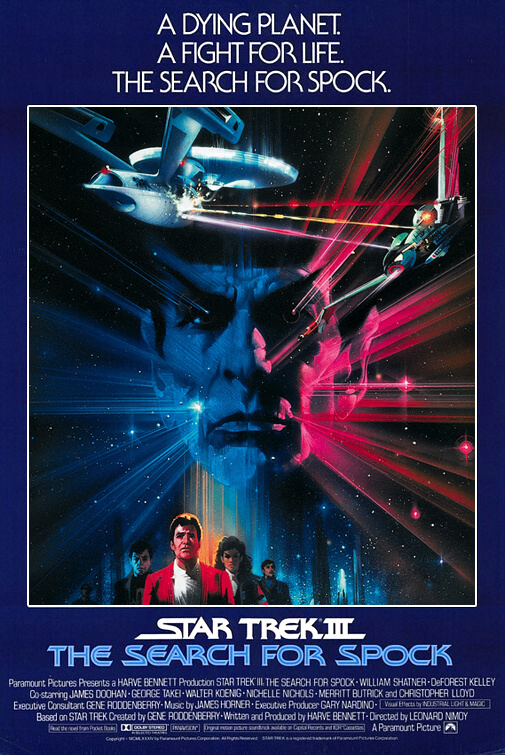
60. ESCAPE FROM THE PLANET OF THE APES (1971)
With the Earth blown up at the end of Beneath, this third entry into the popular simian series sees a capsule containing three articulate chimpanzees from the future arriving in 1970s Los Angeles. Here they attract the attention of a curious media and a suspicious public and when they explain about their own culture where humans are mute slaves routinely experimented upon, and that the Earth is ultimately destroyed by human folly, the surviving chimps are forced to go on the run. A welcome change of pace that sets up a new arc for the final two entries in the series. | PM
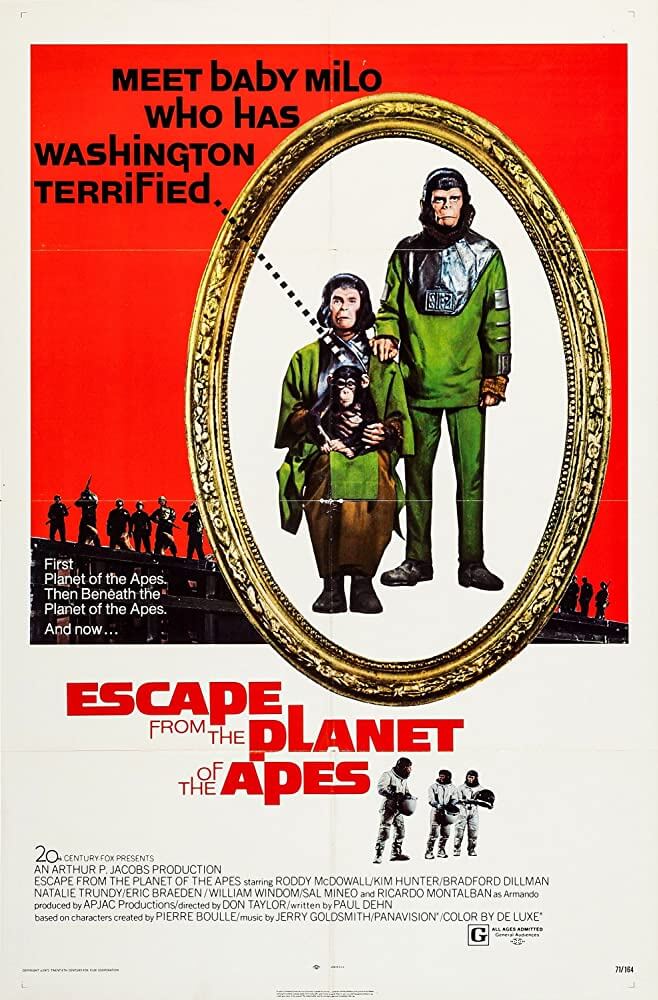
59. GUARDIANS OF THE GALAXY (2014)
It seems unlikely that Dan Abnett’s comic book version of The Guardians of the Galaxy would become a blockbuster, but here we are. James Gunn’s high-energy and frenetic space opera proved the point that ‘Superhero Movie’ is a meaningless label by delivering this high-camp sci-fi fantasy classic that redefined a genre. | EF
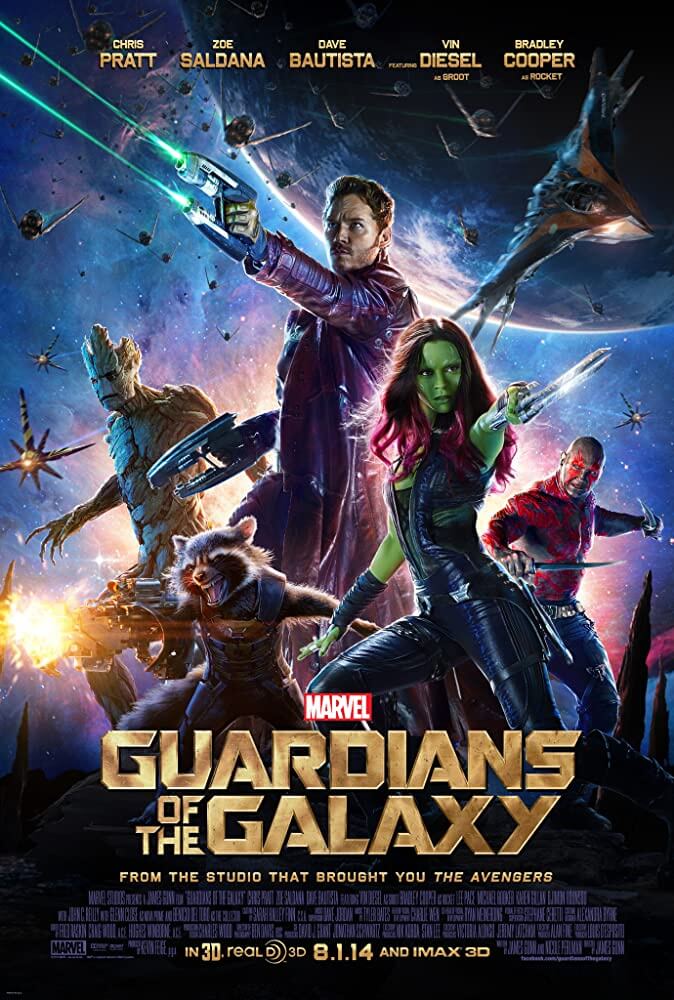
58. PREDATOR (1987)
An alien goes hunting for human prey in the heart of a South American jungle. Meanwhile, Arnie and his troop are undertaking a rescue mission under false pretences. Inevitably, they both clash, leading to a showdown between leading man and “one ugly muthafucker”, before an atomic finale. Infinitely quotable, lots of fun, still a classic today, and one of Arnie’s best. | JG
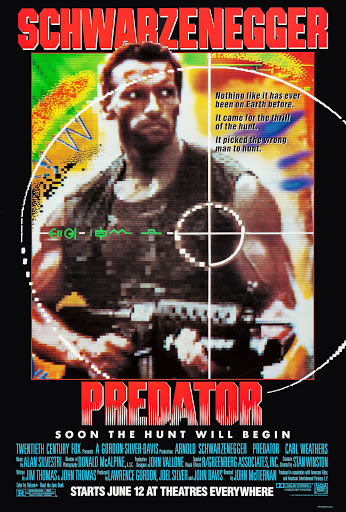
57. ANNIHILATION (2018)
Alex Garland’s second directorial feature proves as clever and thought-provoking as one can expect from the maker of Ex Machina. As a deeply philosophical film with fantastic performances by Natalie Portman and Gina Rodriguez, it also features enough visual horror to keep the story from stagnating or feeling overstuffed. There’s something refreshingly uncompromising about Annihilation, in that it never compromises its smarts for accessibility – instead, it leaves its audience to contemplate what they’ve seen long after the screen goes dark. | LP
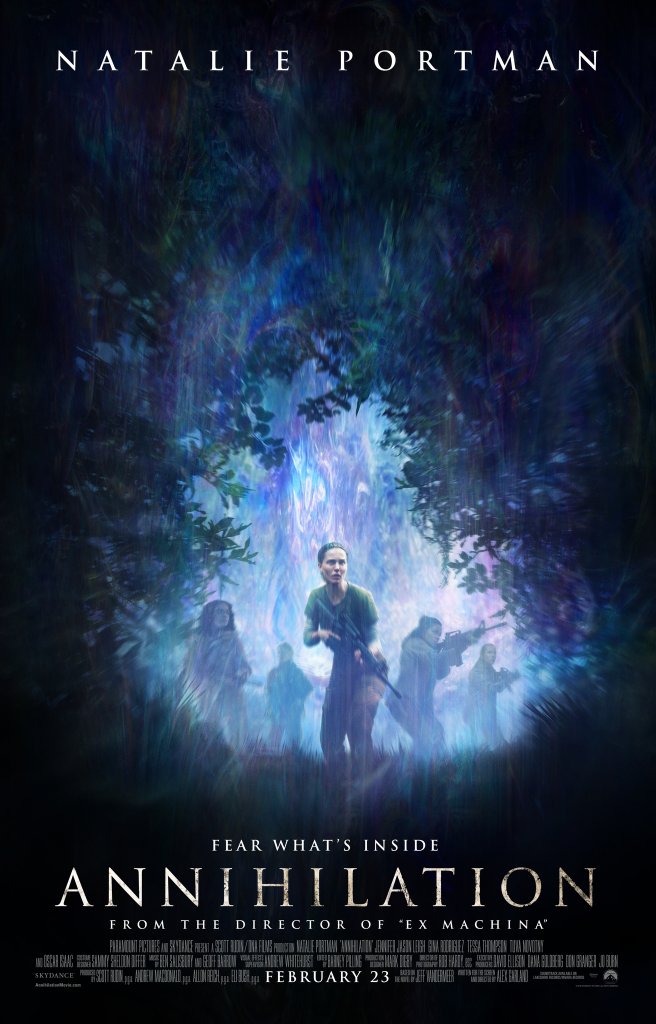
56. CONTACT (1997)
One of the most intelligent sci-fi films of the nineties was based on a story by Carl Sagan and follows the quest of SETI scientist Ellie Arroway to establish contact with extra-terrestrials who have hidden a code in a signal originating from a system 25 light-years away. Robert Zemeckis’ movie is both visually and emotionally stunning as Arroway finds herself manipulated by politicians and religious leaders who need to quash the truth to maintain their power. | RP
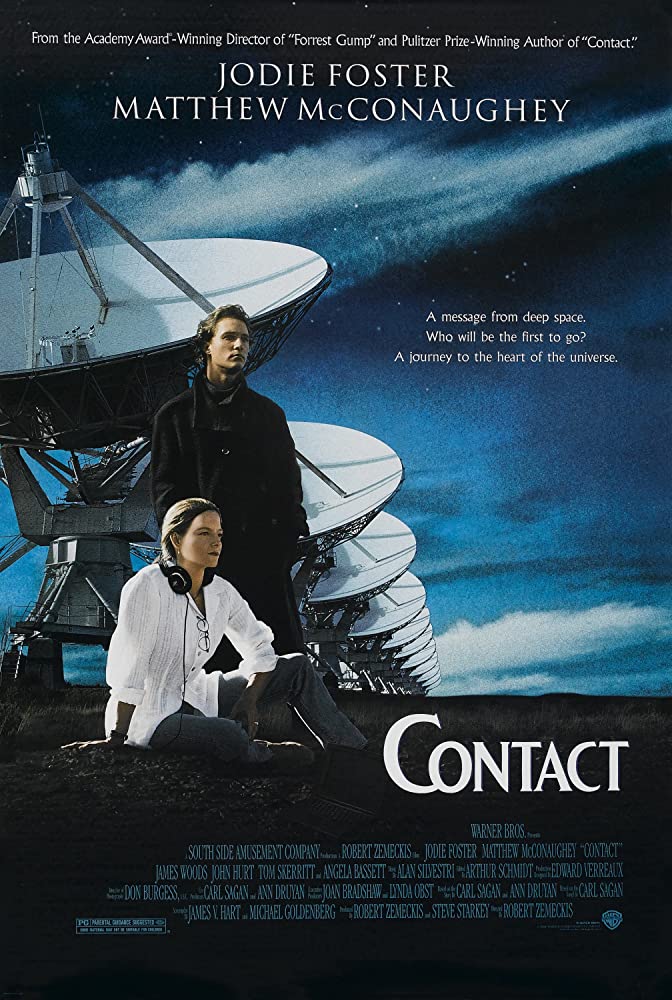
55. DREDD (2012)
Judge Dredd has not had the easiest transition to celluloid – thank you, Sly – but this gritty depiction of the lawman hit all the right nails squarely on the head. Alongside Judge Anderson, Dredd has to battle through a whole apartment block of bad guys to get to Ma-Ma at the top. Played deadpan (with helmet on) by Karl Urban, this is the best live-action Dredd yet! [Hardly difficult. – Ed] | JG
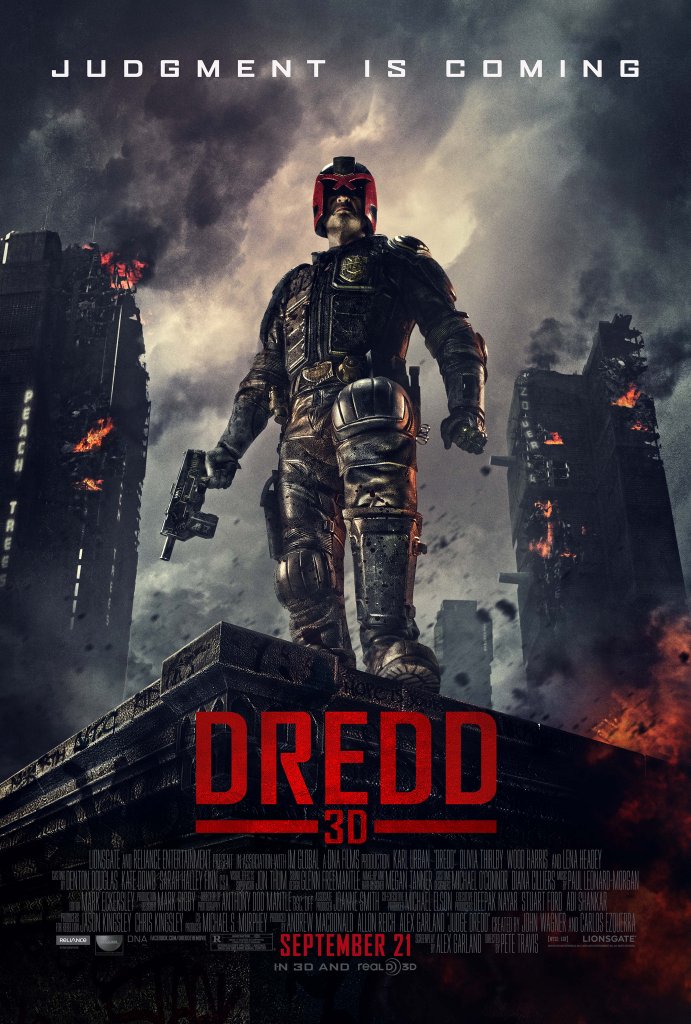
54. SNOWPIERCER (2013)
Snowpiercer launched the now renowned Bong Joon-Ho into western cinema, despite being buried upon release by the Weinstein company. Dark, stylish, and unapologetically bizarre, this apocalyptic allegory uses the train’s geography to both propel the action forward at great speed and to ponder ideas of class warfare and systemic inequality. It’s also surprisingly brutal and features one of Chris Evans’ best performances to date as a dark Captain America. | LP
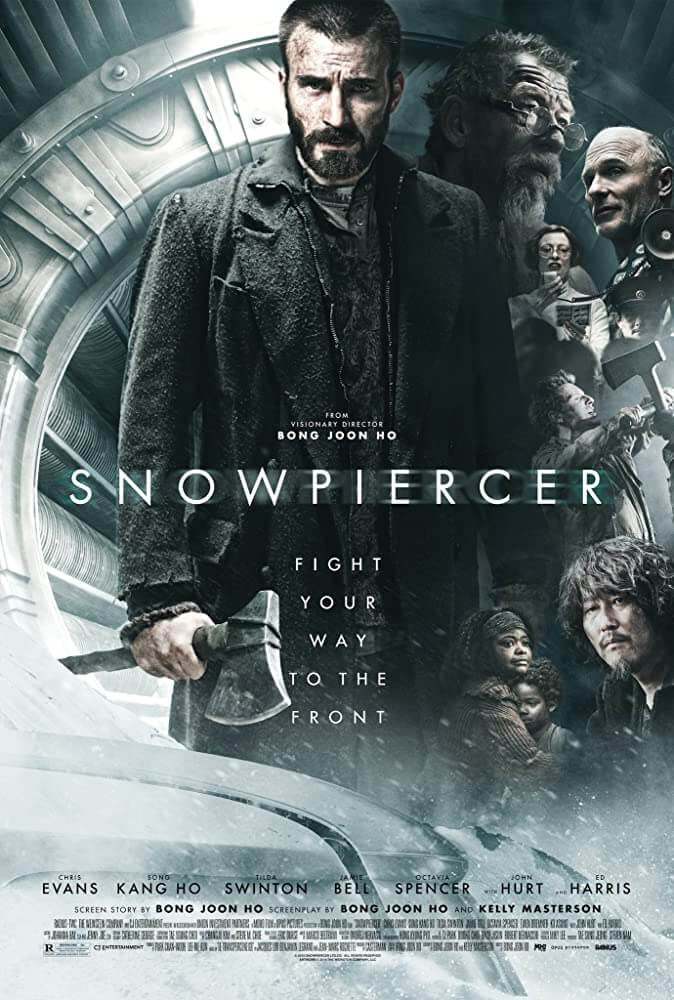
53. THE IRON GIANT (1999)
The Iron Giant is Vin Diesel’s greatest work that most people don’t realise he’s in. Director Brad Bird tapped Diesel to voice the titular character, believing he was perfect given his ability to sound both strong and gentle – often at the same time. The result is a poignant, thought-provoking film about a deadly weapon choosing to save lives rather than end them. Its message, “You are who you choose to be,” continues to resonate to this day. | VB
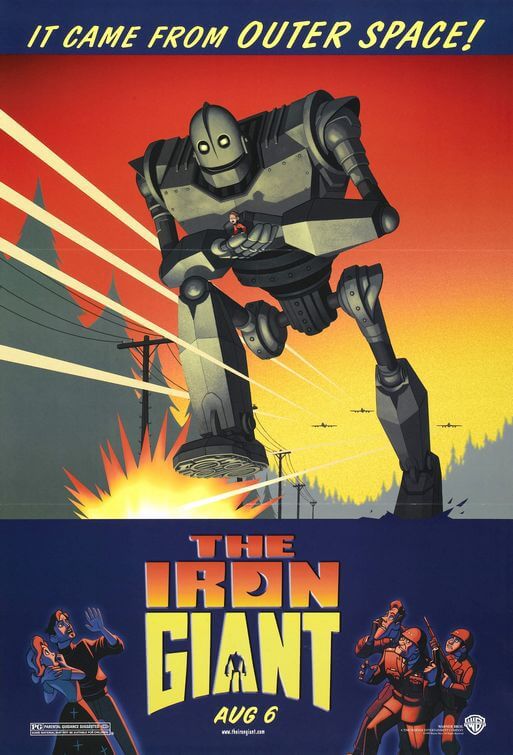
52. THE ABYSS (1989)
James Cameron knows how to make a compelling sci-fi movie. He’s also obsessed with the sea and what lies beneath. Despite being way too long, The Abyss is an incredible tale of alien life lurking at the bottom of the ocean, one that somehow doesn’t go for the usual clichés of squid monsters or unknowable horrors. It’s the quintessential James Cameron movie, bundling all of that director’s obsessions into one technically brilliant and breathtaking feature. | EF
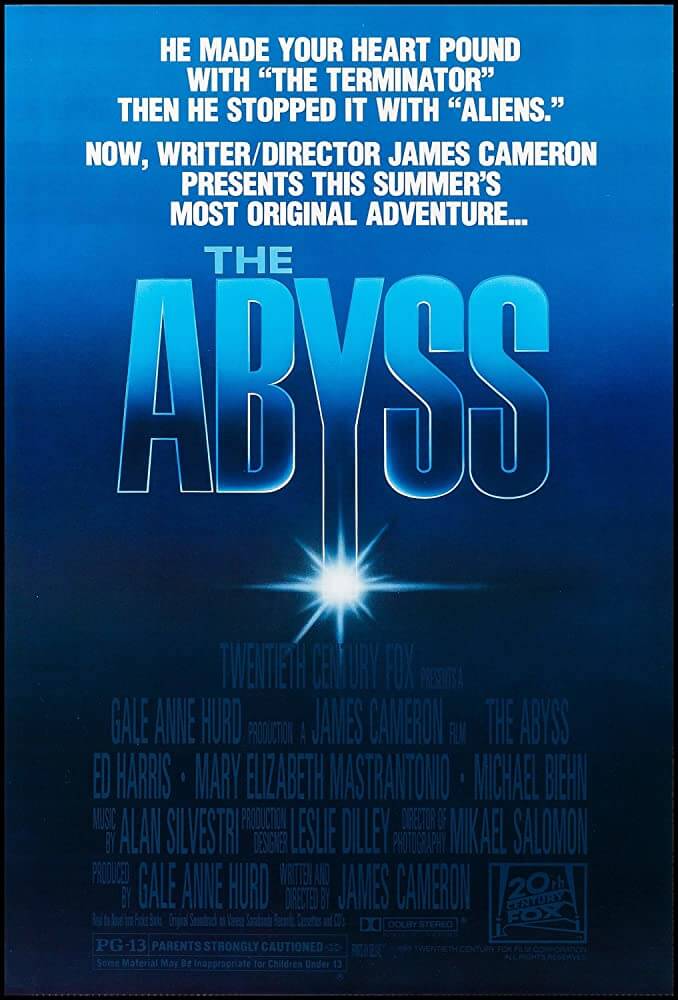
51. SERENITY (2015)
A good old-fashioned space-western brimming with starship chases, gunfights, and outlaws. Joss Whedon brings his beloved TV show Firefly back from the dead for a delightfully rough-around-the-edges movie outing, aptly named after Mal’s beloved ship Serenity. It’s the closest thing to Star Wars’ spirit since the original trilogy, blending witty humour and badass action scenes with its meditations on order versus chaos and its quiet, underlying nostalgia. | LP
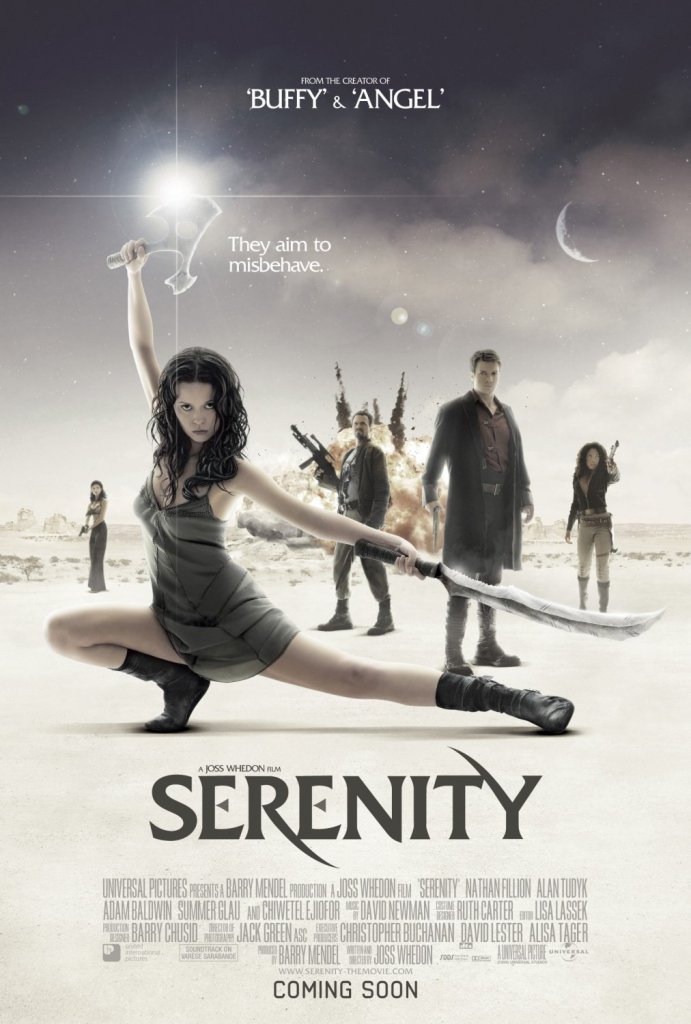
50. LOGAN’S RUN (1976)
In addition to being the film that gave us a very scantily clad Michael York and Jenny Agutter, Logan’s Run is also a movie that always seems topical, despite being made in 1976. It’s set in a distant future where humanity has hidden itself away in a sealed city and lives in a near-perfect, hedonistic paradise. Except for one small problem… as soon as you get to the age of 30, they kill you in an elaborate (and extremely psychedelic) ritual. The all too relatable, nightmarish notion that one could live a life, achieve little, and have it cut short has made this feature timeless. | EF
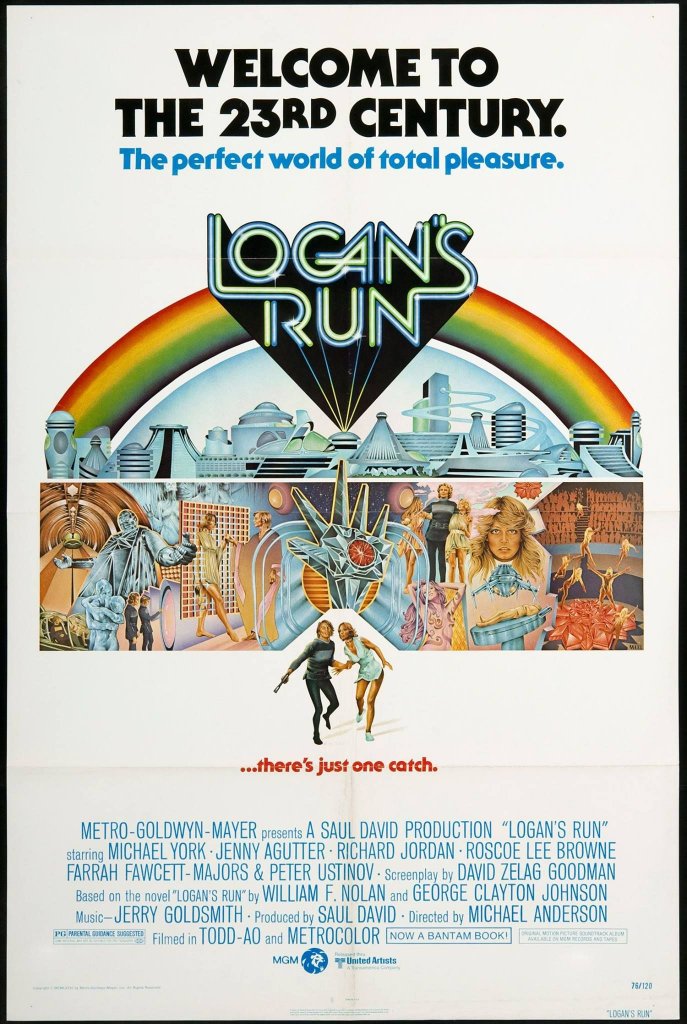
49. THIS ISLAND EARTH (1955)
Not every alien in the fifties was out to invade, some were just here to recruit help in resolving issues on their own planet. Such was the case when a couple of scouts from Metaluna recruit a pair of Earth scientists to repair the planetary shield protecting their home planet from the Zahgons. As if their suspiciously high foreheads aren’t enough of a clue, the aliens even have a spaceship on hand to whisk the likely candidates off to Metaluna for on-site repairs. Sadly, it’s a bit too late, and the planet is destroyed practically as soon as they arrive. | RP
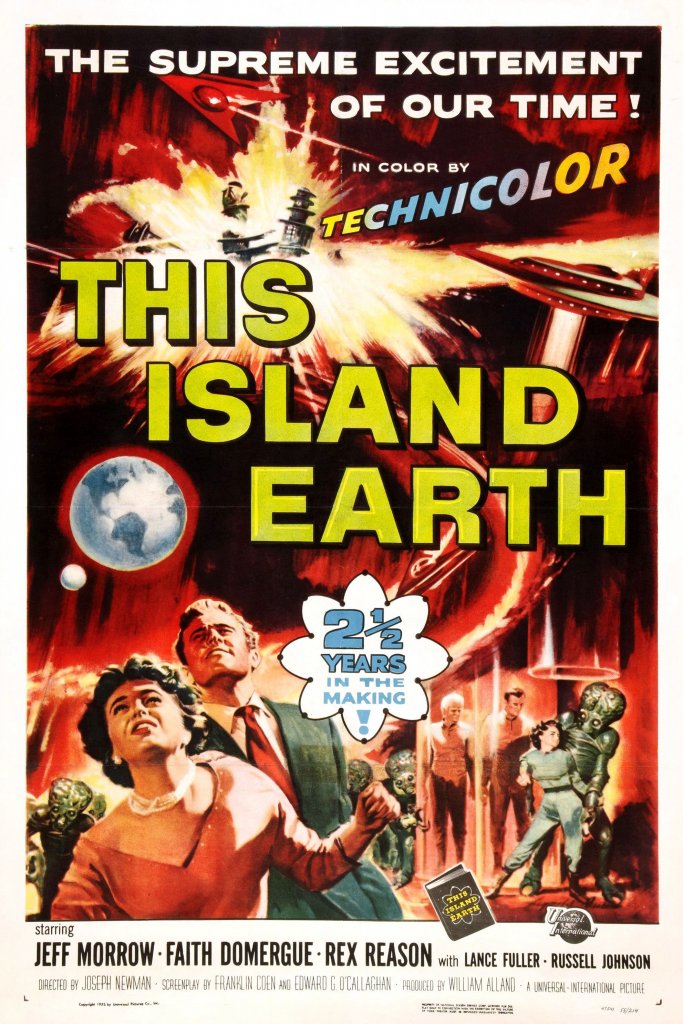
48. 12 MONKEYS (1995)
Terry Gilliam’s feature-length homage to La Jetée features a ‘90s renaissance Bruce Willis travelling through time to try and stop a deadly virus that wipes out most of humanity. An intelligent script, Brad Pitt proving he can act, and a subplot question mark over the protagonist’s sanity make for an enthralling sci-fi classic that stays inside your head long after the credits roll. | JA
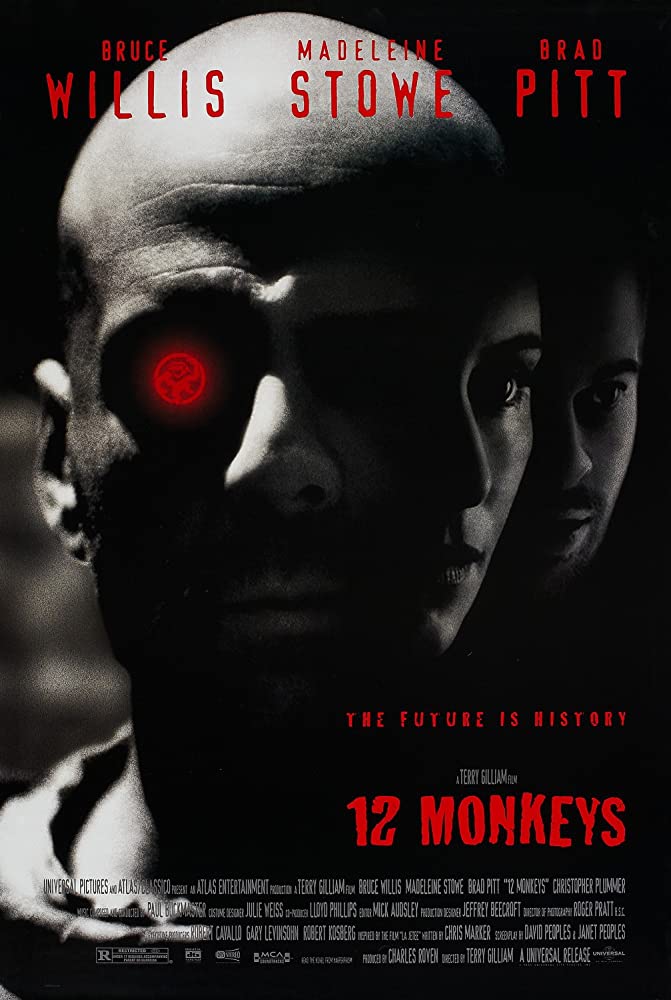
47. AVENGERS: ENDGAME (2019)
Less surprising and inventive than its Infinity War predecessor, perhaps, Avengers: Endgame still had some tricks up its sleeve as it disposed of uber-bad guy Thanos in the first reel and then concentrated on Tony Stark and co.’s convoluted scheme to undo the devastating effects of his fatal finger-snap. Endgame delivers all the spectacle and action we’ve come to expect from the Marvel Cinematic Universe by indulging in ingenious time-travel shenanigans before bringing down the final curtain on several of the series’ most popular and beloved characters. An exhilarating, heartbreaking, and unforgettable assemblage of superhero star power. | PM
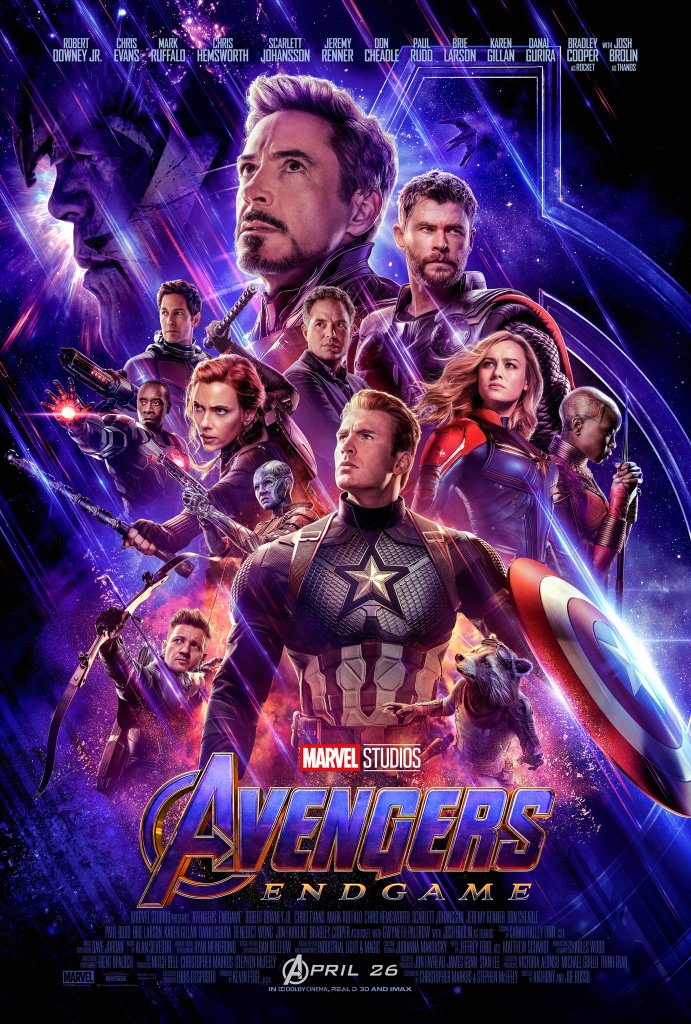
46. THE WAR OF THE WORLDS (1953)
Despite relocating Wells’ late Victorian English setting to contemporary Southern California and dropping the Imperialistic overtone of the source material, George Pal’s vividly colourful adaptation of the Martian invasion is an irresistible and bombastic slice of fifties sci-fi. The Martians, envious of our planet’s fertility, lay waste to Earth’s greatest monuments. They’re impervious to even the atom bomb, but are undone by a common cold. Who could ever forget the cobra-like head of the manta ray-styled war machine disintegrating three hapless townsfolk with their makeshift white flag, or the poor soldier momentarily turned transparent in a blast of green ray! | RP
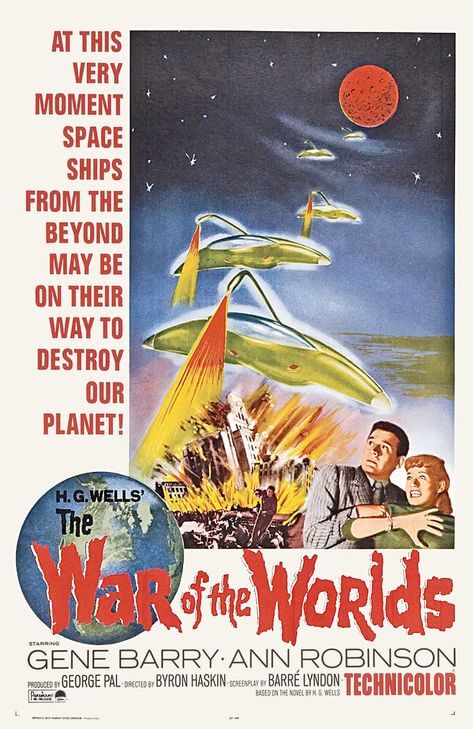
45. STAR WARS: EPISODE VI – RETURN OF THE JEDI (1983)
The original trilogy comes to a close in director Richard Marquand’s rather underrated Return of the Jedi. From the Jabba’s palace opening to the all-out battle of Endor, this film has heartbreaking developments as well as rousing action, and some truly wild edges. Evil is vanquished here, not by violence but by hope and trust, and it brings things to a satisfying close (at least at the time!) for the Skywalker saga, with Anakin redeemed by the love of his family, finally escaping the horror of being Vader. | JB
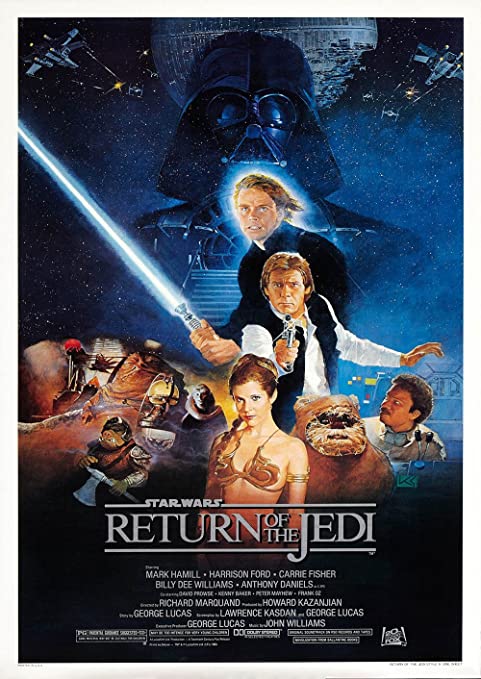
44. THE MARTIAN (2015)
A rare example of a film adaptation of a popular novel doing justice to its source material, Ridley Scott vividly brought to life Andy Weir’s terrific tale of Matt Damon’s ingenious and surprisingly good-humoured astronaut stranded on the hostile surface of the red planet. Scott deftly slices away some of the book’s fascinating flab and focuses on Damon’s determination to overcome his terrible circumstances and the apparently hopeless rescue missions being mounted from Earth. Thrilling and spectacular, The Martian reaffirmed Scott’s reputation as a director of style and vision and reminded us of Damon’s effortlessly likeable everyman movie persona. | PM
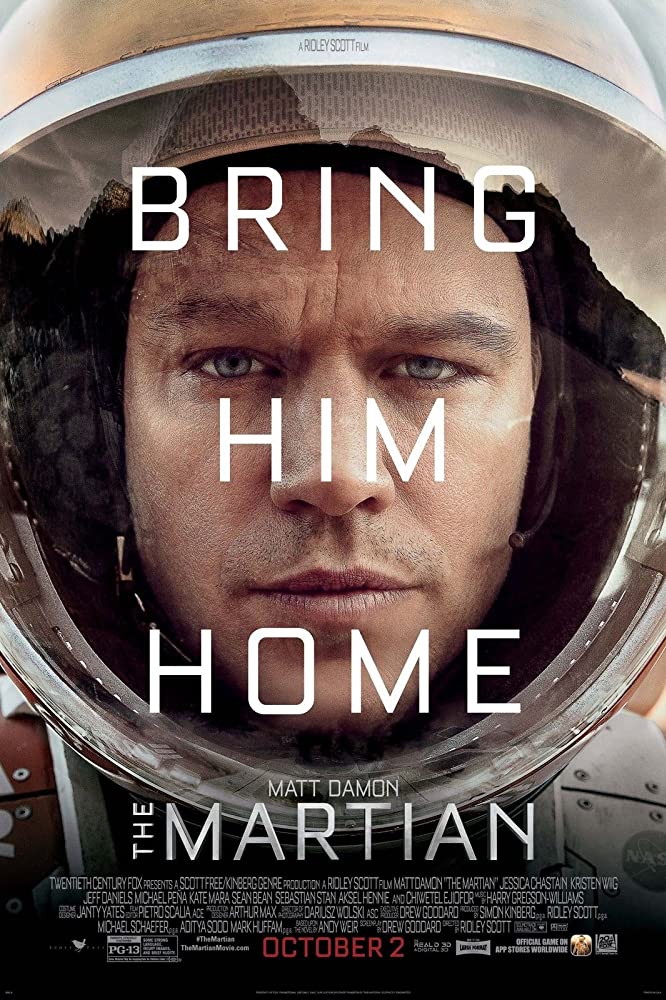
43. THE THING FROM ANOTHER WORLD (1951)
Reputedly, Howard Hawks had an uncredited hand in directing this paranoia-laden tale of the accidental discovery and thawing of a hostile alien in an Arctic military base, cut off from all contact with the outside world. We don’t know where the Thing is from or why he’s here – he could be an advance scout – but he’s certainly not here to make friends. He begins to pick off the base personnel at will, barely seen but always lethal, before being cooked like the “intellectual carrot” he actually is. As they say in the film, “keep watching the skies”. Sage advice. | RP
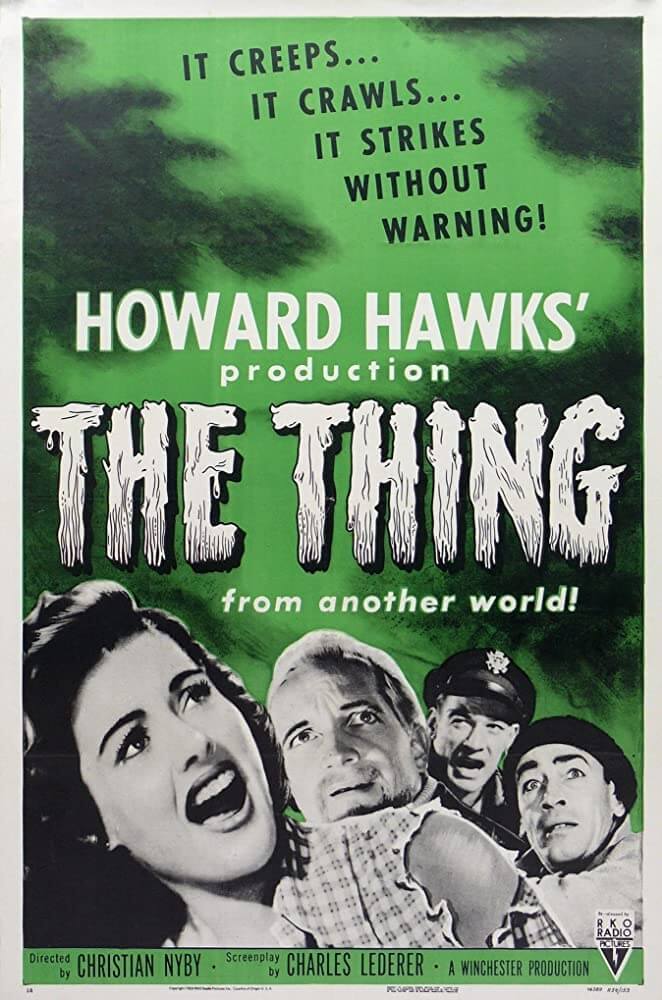
42. INVASION OF THE BODY SNATCHERS (1956)
What if someone you know intimately wasn’t… well, themselves? Oh, they have the mannerisms of that person, and the memories, but something just isn’t right about them. Check that there isn’t a giant seedpod under your bed tonight, or you too might end up being replaced by a pod person. Don Siegel’s Invasion of the Body Snatchers, based on Jack Finney’s 1955 novel The Body Snatchers, has been described as an attack on both McCarthyism and Communism. Star of the film, the late, great Kevin McCarthy and Finney both denied this, saying it was just a thriller. Director Siegel, however, thought differently. However you view the film, it raises an interesting dilemma. Is a world without anger, hatred, and war worth giving up what it is that makes us human? Kevin McCarthy would later reprise the film’s final scene in Philip Kaufman’s excellent 1979 remake. “You fools! They’re coming for you! They’re here already! You’re next!” | CJ
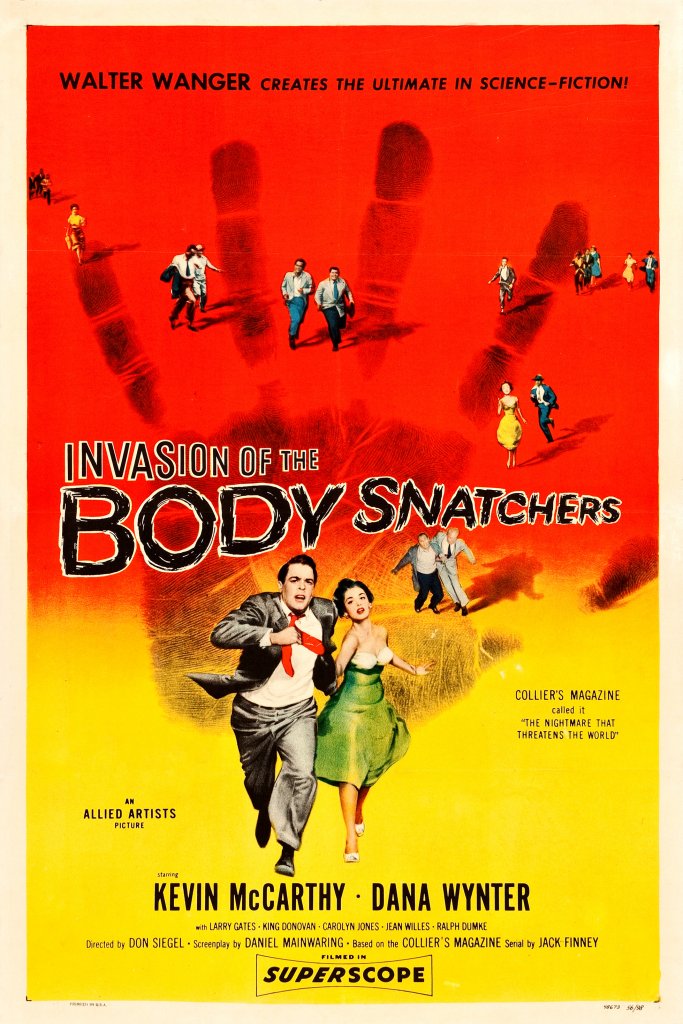
41. STAR TREK VI: THE UNDISCOVERED COUNTRY (1991)
Klingons quoting Shakespeare. Captain Kirk fighting his own doppelgänger. David Warner chewing all the scenery as a Klingon Ambassador. This tale of a peace conference with the Klingons is an admittedly messy but immensely fun story. It’s also about as close to topical as Star Trek is ever going to get; the story was inspired by the Cold War, with the Klingons as the Russians. At the time it also looked like it might be the last Star Trek movie and they went all out with the performances and production. The special effects and sound are memorable too, both receiving Oscar nominations. | EF
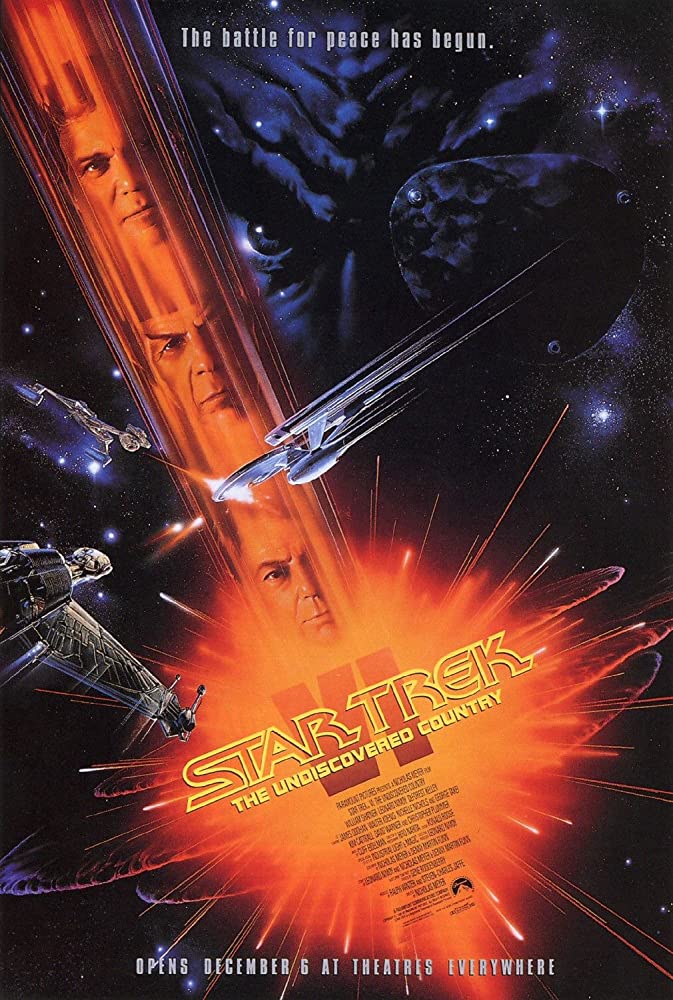
40. WALL-E (2008)
Wall-E, particularly in its first half, is an animated masterpiece. Towering landscapes of rubbish fill the horizon, nature utterly decimated, and the planet abandoned except for one lonely robot, who is learning about humanity and love by sifting through its accumulated garbage. As a haunting, completely stunning sci-fi, it delivers one of the saddest critiques of consumerist capitalism and yet, through the eyes of a trash-compacting robot, also offers up a heart-warming message of hope and perseverance. | LP
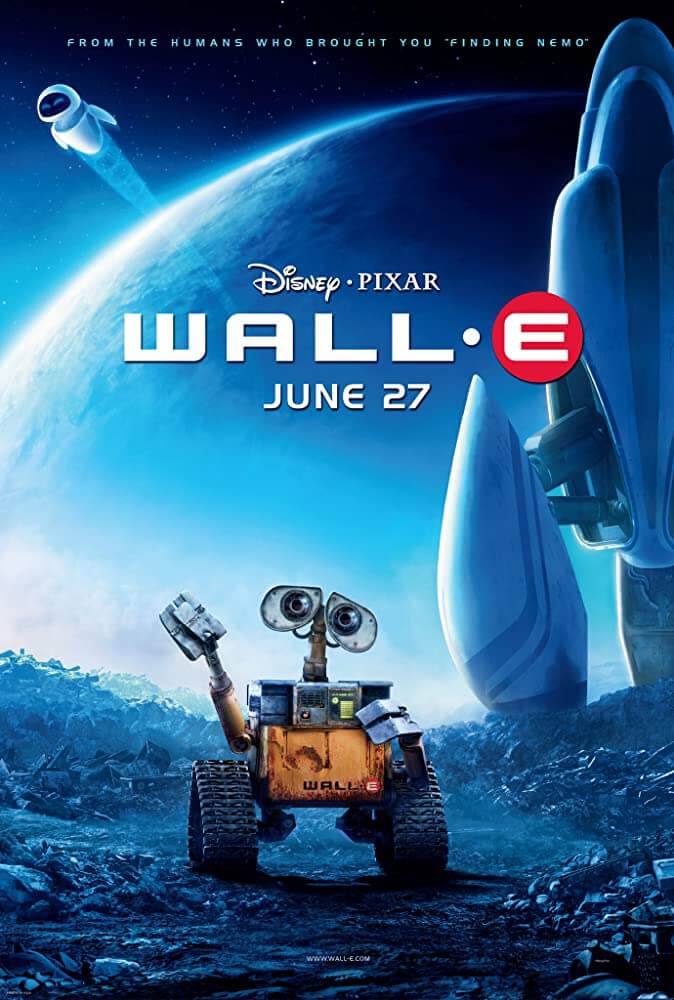
39. STAR WARS: EPISODE VIII – THE LAST JEDI (2017)
After The Force Awakens’ whistle-stop tour of beloved Star Wars tropes reignited the franchise’s spark, Rian Johnson’s Episode VIII takes that Star Wars charm and pushes it in exciting new directions. As with The Empire Strikes Back, the sequel trilogy’s central act is also its darkest, as the First Order close in and Luke Skywalker isn’t the hero everyone expected. But it’s not all so cynical; Luke single-handedly holds off an army, and a new hope for the galaxy emerges. It’s also the most thoughtful instalment, probing into the hearts of characters old and new, not to forget the most visually stunning. | KM
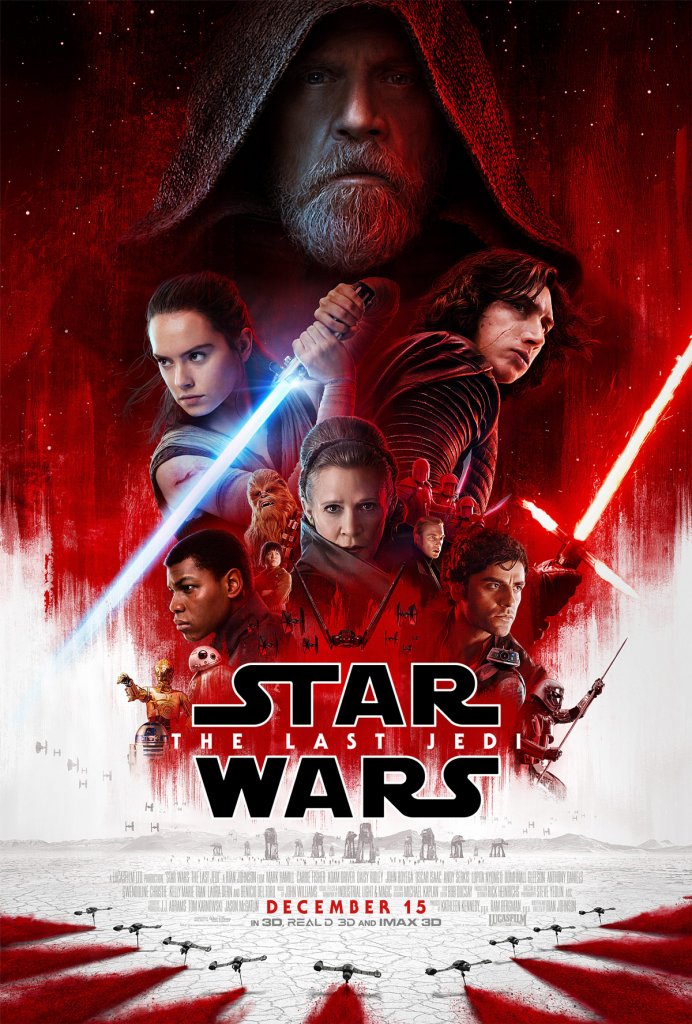
38. AVATAR (2009)
Avatar permanently changed cinematic history. Audiences were profoundly moved, and a new era in entertainment was born. This film uses tried and true storytelling devices to celebrate an alien world where beings live in harmony with their environment. Avatar also focuses on important issues such as disability, identity, and good stewardship of relations with other peoples. Many new cinematic techniques were invented for the movie, and it brought about the advent of modern 3D cinema, and changed the world of theme parks forever. It has even affected the world of religion and philosophy. With Avatar, we can look towards the stars, conscious of the world around us, and say “Oel Ngati Kameie”. | AF
![]()
37. EX MACHINA (2014)
Billed as a psychological thriller, Alex Garland’s directorial debut Ex Machina is as absorbing as it is terrifying. Expertly crafted, it unsettles its audience from the very beginning, adding discomfort throughout. Much of this comes from the performances of Domhnall Gleeson, Alicia Vikander, and Oscar Isaac, who to varying degrees demand empathy and abhorrence – and for Gleeson sympathy (or is it pity?) – as the true motivations of each character are slowly revealed. As a parable on the dangers of artificial intelligence, Ex Machina argues a strong enough case to make you never want to touch a computer again. | JT
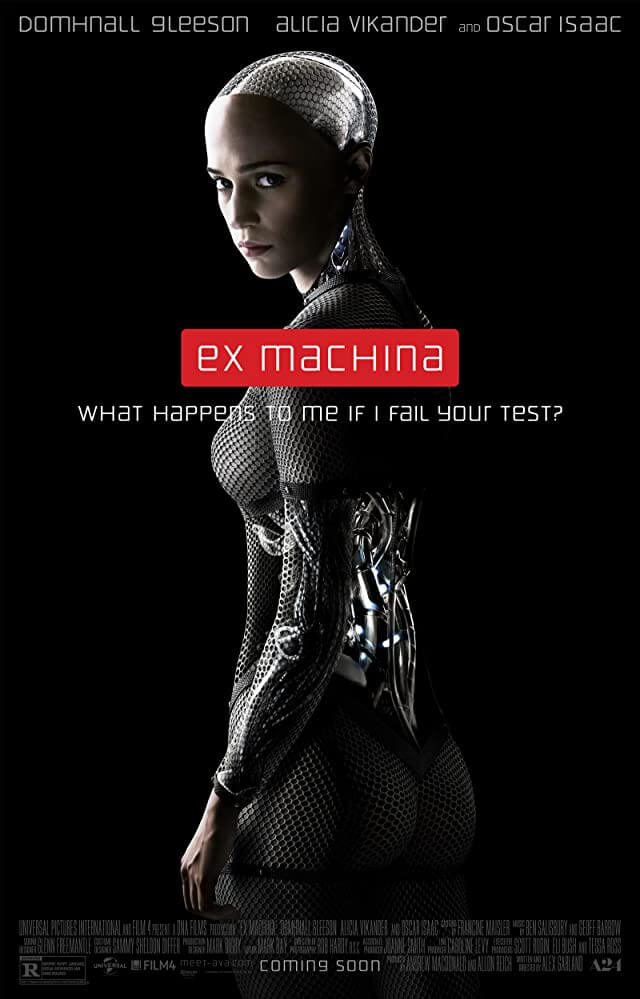
36. THE FIFTH ELEMENT (1997)
Sci-fi fans seem to either love or hate The Fifth Element, there is no in-between. Even the stars are divided – while Bruce Willis, Milla Jovovich, and Chris Tucker have all reflected favourably on their roles, co-star Gary Oldman once said he “can’t bear” to watch himself. Luc Besson’s film about love and war in a dystopian future also divided audiences and critics when it premiered in 1997. Featuring spectacular, BAFTA award-winning visual effects by Mark Mangini and unforgettable costumes designed by the legendary Jean-Paul Gaultier, there’s no denying it remains one of the most visually striking films of all time. | VB
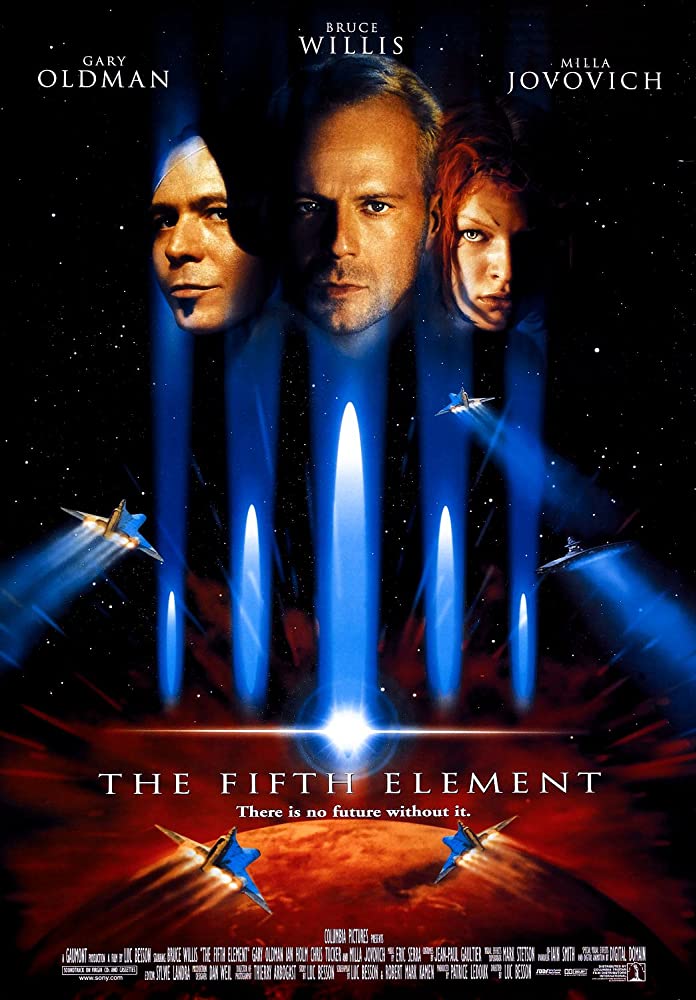
35. METROPOLIS (1927)
One of the first sci-fi movies, the influence of Metropolis can be seen across the past century of the genre; Blade Runner’s dystopian cityscape and Star Wars’ droids both trace their designs back to the 1927 film. But don’t just appreciate it for what it inspired, as the film itself more than holds up today. As you watch hordes of extras toil away at massive machines on the extravagant set that is the eponymous city’s underbelly, you can’t not be amazed. The scale and ambition of Fritz Lang’s filmmaking is breathtaking; it’s pure sci-fi parable, as full of political punch as it is visual grandeur. | KM
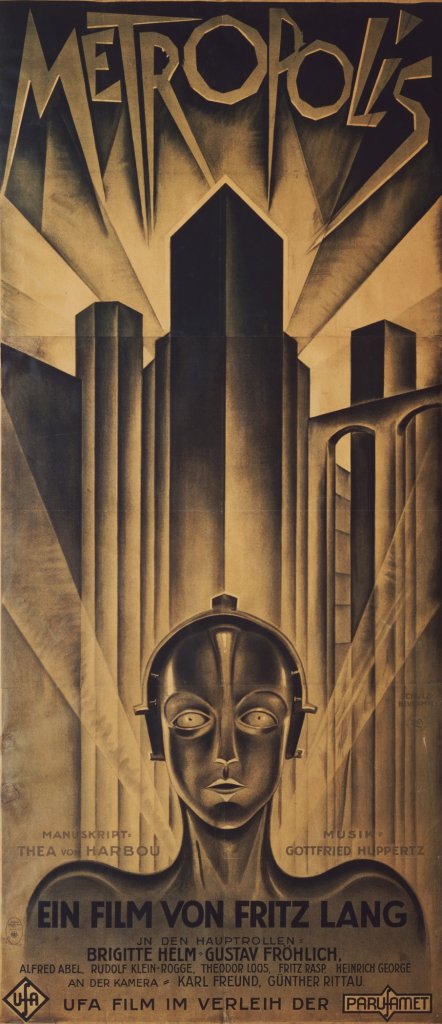
34. BLADE RUNNER 2049 (2017)
A sequel to Blade Runner? It can’t be done. Impossible. No way. But Denis Villeneuve proved us all wrong. 2049 picks up 30 years after the original, as Ryan Gosling’s detective K searches for a child supposedly born to a replicant mother. It’s clear from every element of 2049 – story, worldbuilding, visuals, sound – that this is a sequel crafted with the perfect balance of reverence for the original and a desire to expand upon it. As well as the world, it develops the original’s themes, asking even deeper questions about human identity – all while managing not to definitely state whether Deckard’s a replicant. | KM
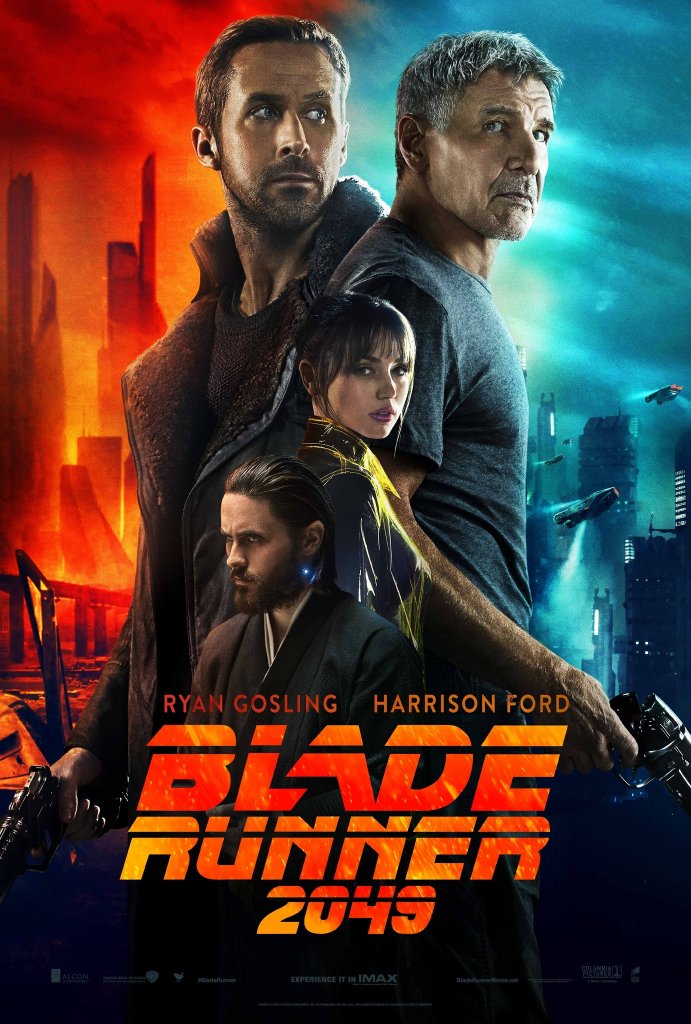
33. MOON (2009)
The surface of the moon has been well-mined by sci-fi moviemakers over the years. But the sublime, thoughtful character study at the heart of Nathan Parker and Duncan Jones’ Moon presents an entirely different perspective on that celestial body. Built around an extraordinary performance by Sam Rockwell, the film tells the story of solitary mining supervisor Sam Bell, who only has an AI named GERTY for company. Bell discovers the shocking hidden truth of the company’s treatment of their employees and, outraged and in disbelief, seeks to expose their crimes. Insightful and heart-rending, this is high-concept indie sci-fi at its finest. | RC
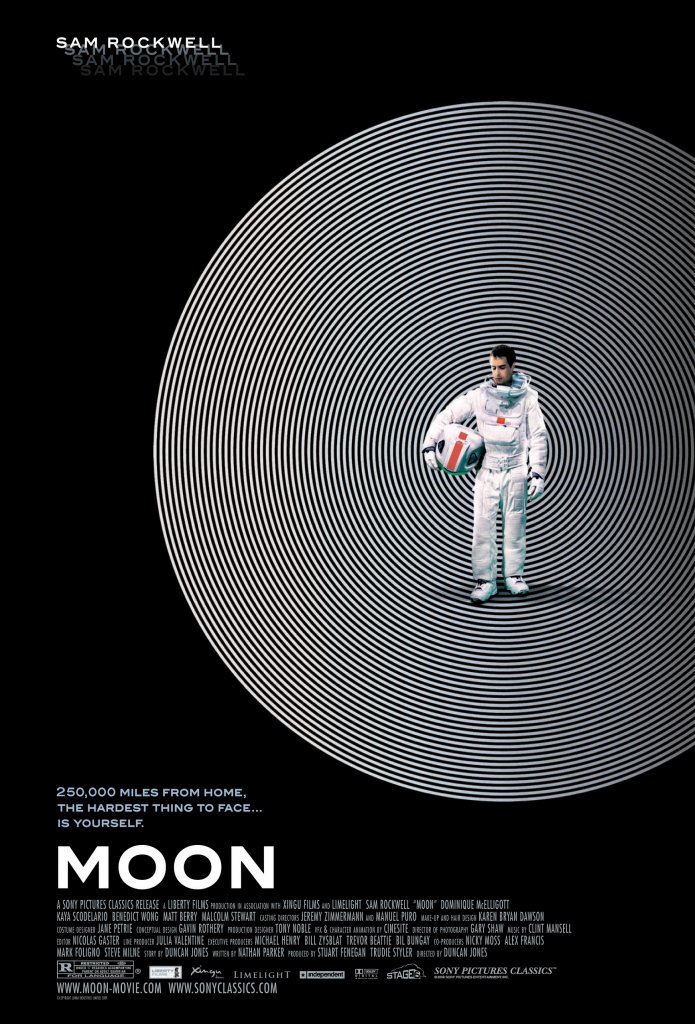
32. FLIGHT OF THE NAVIGATOR (1986)
Flight of the Navigator is one of the very best family-friendly sci-fi films. Sure, the special effects (which were considered groundbreaking at the time) may not hold up to a more discerning, modern eye, but nevertheless, it remains one of those rare gems that perfectly nails the combination of fantasy and adventure while delivering important messages about the value of family and the strength of friendship. Ultimately, this isn’t a movie about time travelling with an alien spaceship hilariously voiced by Paul Reubens – it’s about a family that realises just how much they love and need each other. | VB
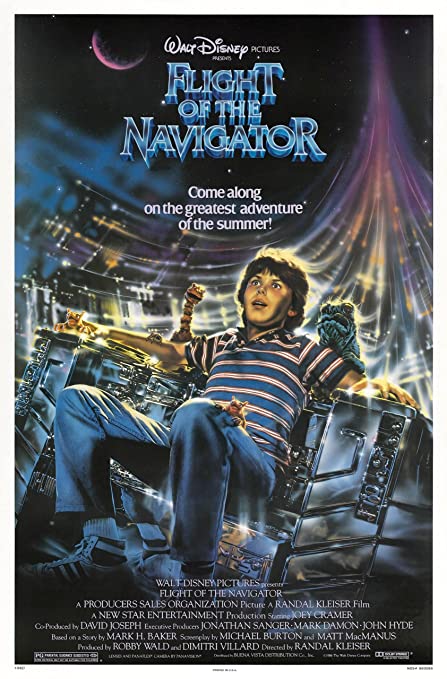
31. FLASH GORDON (1980)
We have no idea how this film might have turned out if George Lucas had made it (as he wanted to pre-Star Wars), but what we ended up with was a colourful, camp, and consistently fun experience. With amazing performances from a star-studded cast (especially the late Max von Sydow as Ming the Merciless) and an incredible soundtrack supplied by Queen, the movie perfectly captures the spirit of the old Flash Gordon serials and comics that inspired it. | SV
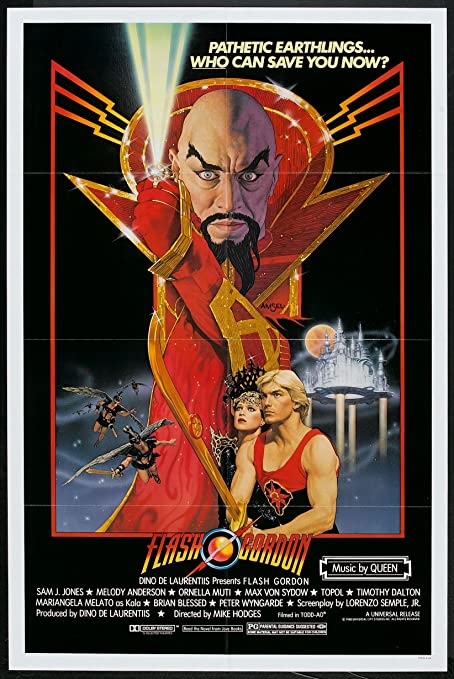
30. DISTRICT 9 (2009)
It isn’t unfounded to call District 9 one of the most original sci-fi films of the 21st century so far. Shunning the atypical American setting, Neill Blomkamp’s best work to date is a metaphor for the systematic discrimination that has historically plagued South Africa, the backbone of an electric story told through a mixture of traditional and mockumentary-style camerawork. In Wikus van de Merwe, you find one of the most successfully pulled off character transformations – both inside and out – that you will likely ever see. District 9 is a politically-charged explosion of a film that stays with you for a very long time. | JH
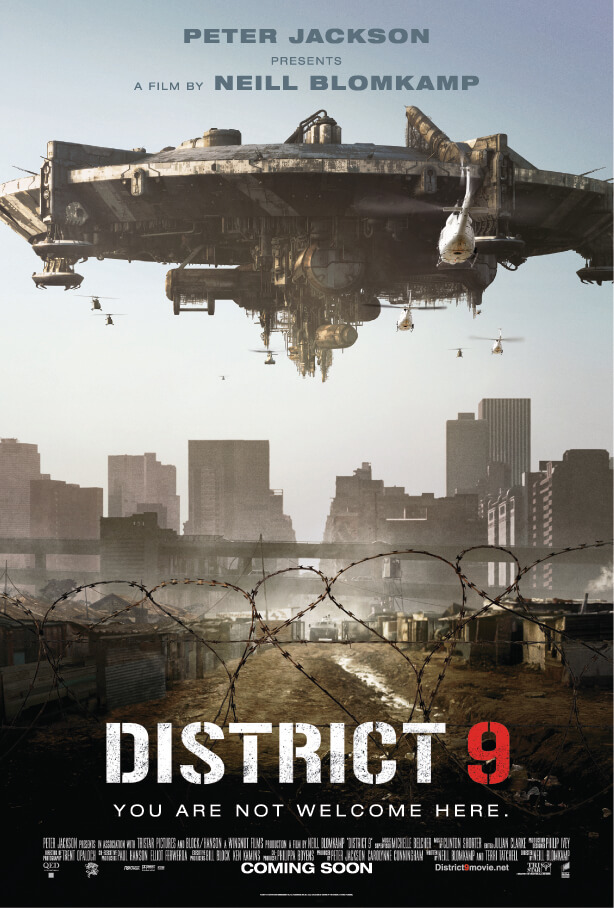
29. INTERSTELLAR (2014)
Interstellar stands firmly as one of the greatest space epics of all time. Christopher Nolan builds a work of art colossal in both its physical beauty and in the depth of its philosophical ideas. It would be easy for this film to be cold, beautiful in an untouchable way, so otherworldly that the audience becomes lost in it. Yet for all its grand ideas and set designs, Interstellar is firmly rooted in a very earthly idea: the relationship between a father and daughter. As a journey through space and time, it’s time whose impact is most heart-wrenching; time as experienced by parents, who watch their children grow up at speeds far greater than how they experience the rest of the world. | LP
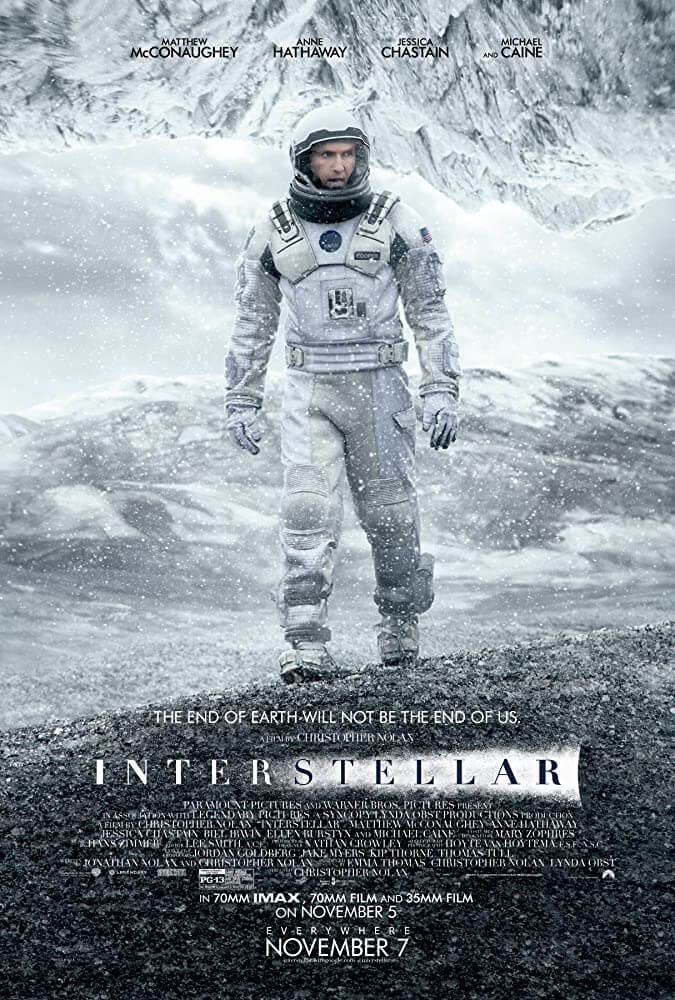
28. STAR WARS EPISODE III: REVENGE OF THE SITH (2005)
Revenge of the Sith is not only the best of George Lucas’ prequel trilogy but one of the best Star Wars movies ever made. Often under-appreciated, this spectacle was a space opera on the grandest possible scale. Lucas used pioneering special effects technology (that still looks great even 15 years on) to help tell the spectacular story of Anakin Skywalker’s descent into the Dark Side, Palpatine’s ascension to power, and the downfall of the Jedi Order. Chock full of action, emotion, and some of John Williams’ most incredible scoring, this was epic blockbuster entertainment in every sense of the word. | JB
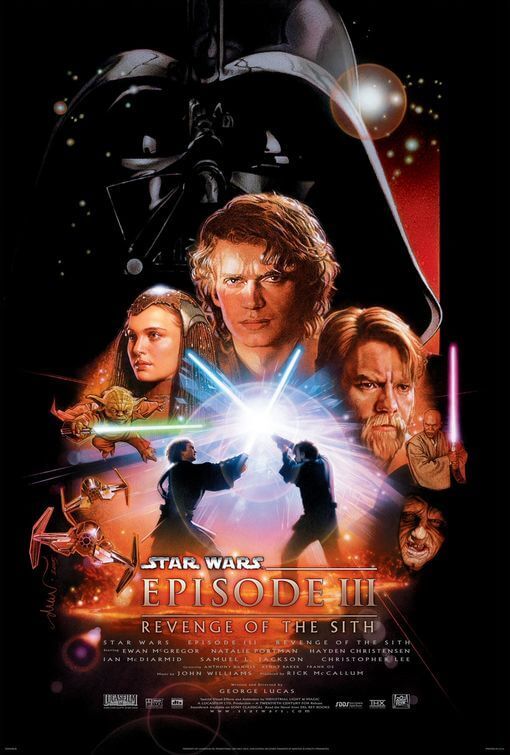
27. INCEPTION (2010)
Director Christopher Nolan’s towering, subconscious-tunnelling, modern classic is often called a benchmark for what blockbusters can accomplish, both in scale and intelligent storytelling. Leonardo DiCaprio heads up an impressive ensemble cast, in this tale of corporate espionage through dream infiltration. The set pieces are breathtaking, the acting is roundly incredible, and the perplexing scale is unmatched, as Hans Zimmer’s spellbinding score further transplants your undivided attention into this exciting and thematically rich cinematic Rubik’s Cube. Inception asks many thoroughly engaging questions but none more important than, what is real and whether it matters in the pursuit of happiness? | JB
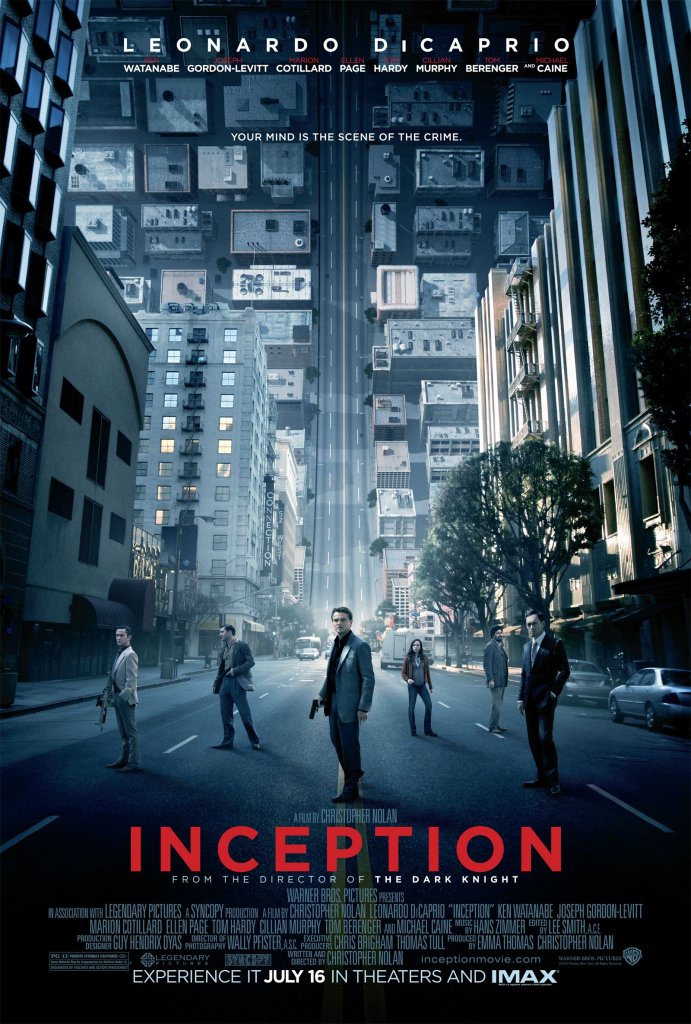
26. SILENT RUNNING (1972)
Douglas Trumbull’s directorial debut has endured as a revered and influential piece of science fiction among many, that is as lingeringly powerful as it is disciplined in its approach. Considering a future where all plant life on Earth is extinct, Silent Running stars Bruce Dern as astronaut botanist Freeman Lowell, who increasingly questions and rebels against controversial orders his crew has received to jettison their animal/plant life that was to be used to replenish and reforest the planet. A story about isolation and the ineluctable reality of our past and future, this is a sci-fi that has possibly even grown in its relevance, and remains a thought-provoking exploration of a number of issues both environmental and human in nature. | JB
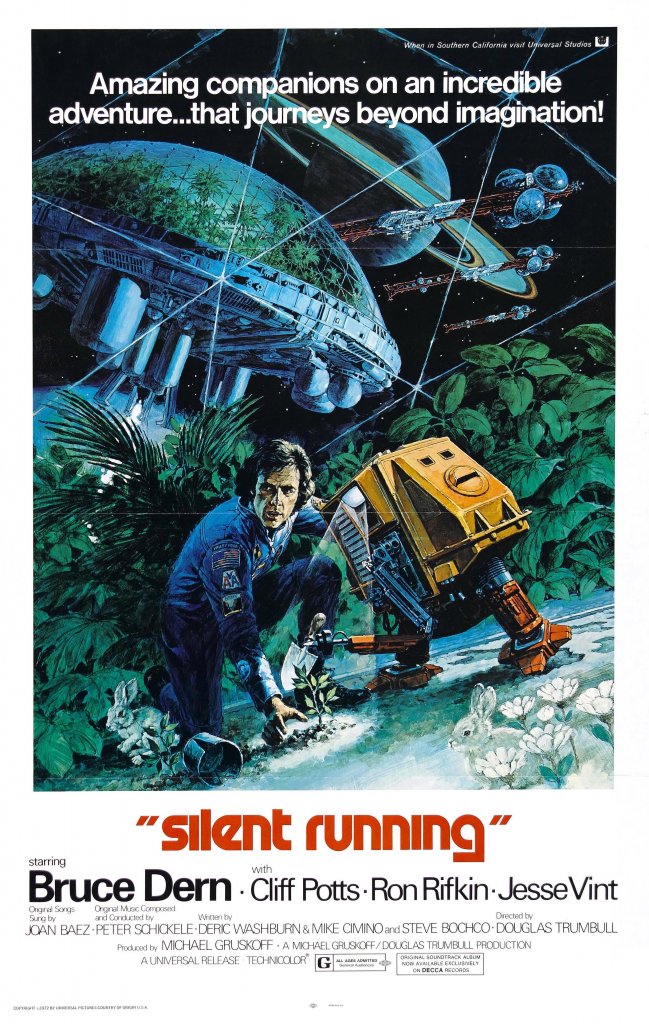
25. UNDER THE SKIN (2013)
Under the Skin is the tale of a weird alien infiltrator who takes the form of a beautiful woman (Scarlett Johansson) in order to prey on men. Director Jonathan Glazer took this cheesy concept and turned it into a superb and tense piece of sci-fi horror, one that stays with the viewer long after the end credits roll. | EF
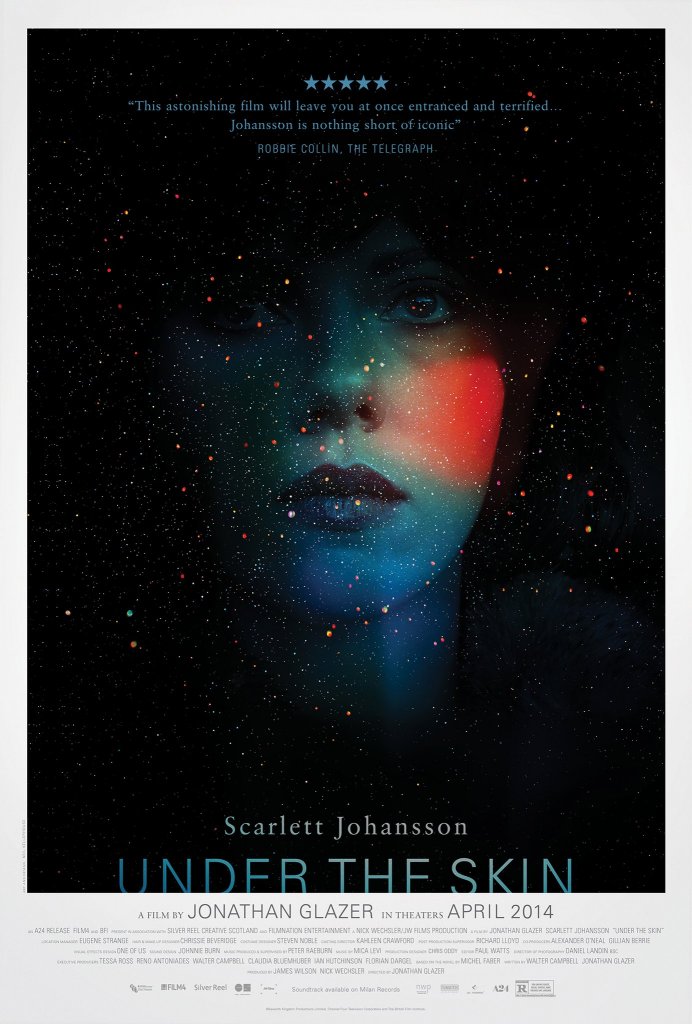
24. STAR TREK II: THE WRATH OF KHAN (1982)
This sequel arguably marked the birth of the modern Star Trek franchise, embracing its high fidelity, dramatic feel. This is a work of art, a classic tale of retribution, in the same vein as the quoted Moby Dick. It contains a smart link to the original series in the character of Khan Noonien Singh, Ricardo Montalbán’s genetically engineered madman, seeking vengeance upon our favourite Captain, James T. Kirk. Wrath of Khan also contains smart lessons about ageing, legacy, and life and death. | AF
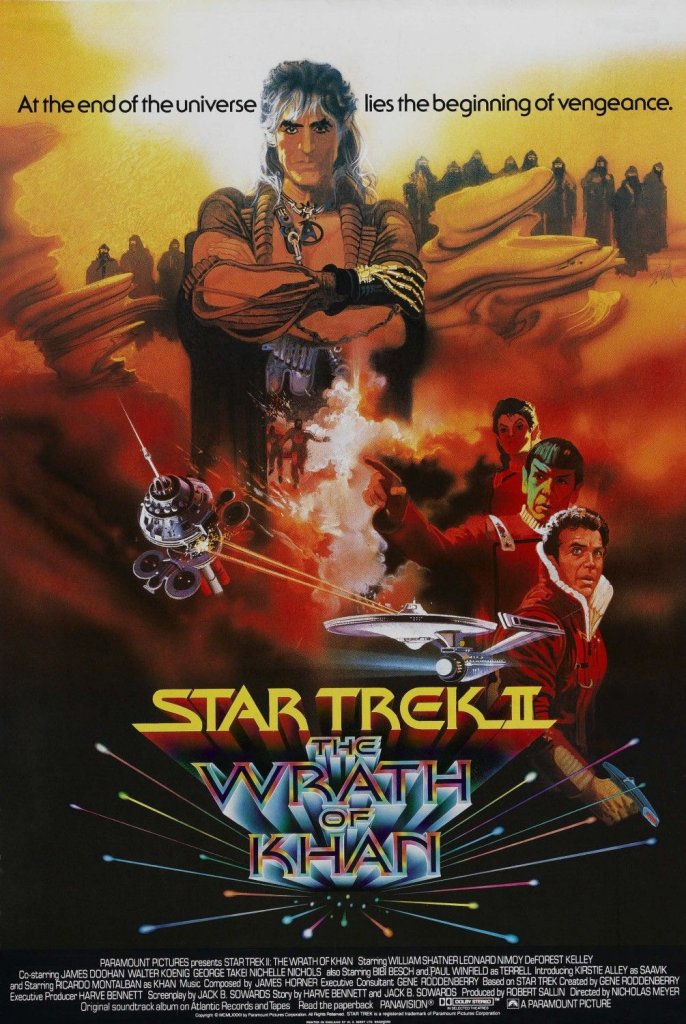
23. AKIRA (1988)
Akira is a pretty weird movie. For a start, it’s named after a common Japanese name, and ‘Akira’ isn’t even a central character. Imagine if The Terminator was called ‘Peter’ instead. This animated cyberpunk feature is filled with cool motorcycles, strange technology, psychic powers, and even weirder characters. It’s also the movie that properly introduced Japanese animation into popular culture for western audiences. Before Akira, anime in the west belonged mostly to the hardcore fans. Set in the hyper-violent, futuristic Neo-Tokyo, Akira is about a chap called Tetsuo Shima, who begins to turn into a powerful mutant with wild psychic powers. His best friend Shōtarō Kaneda tries to deal with the inevitable fall-out. Combined with an incredible soundtrack, gorgeous animation, and incredibly violent set pieces, this odd film conquered the world. | EF
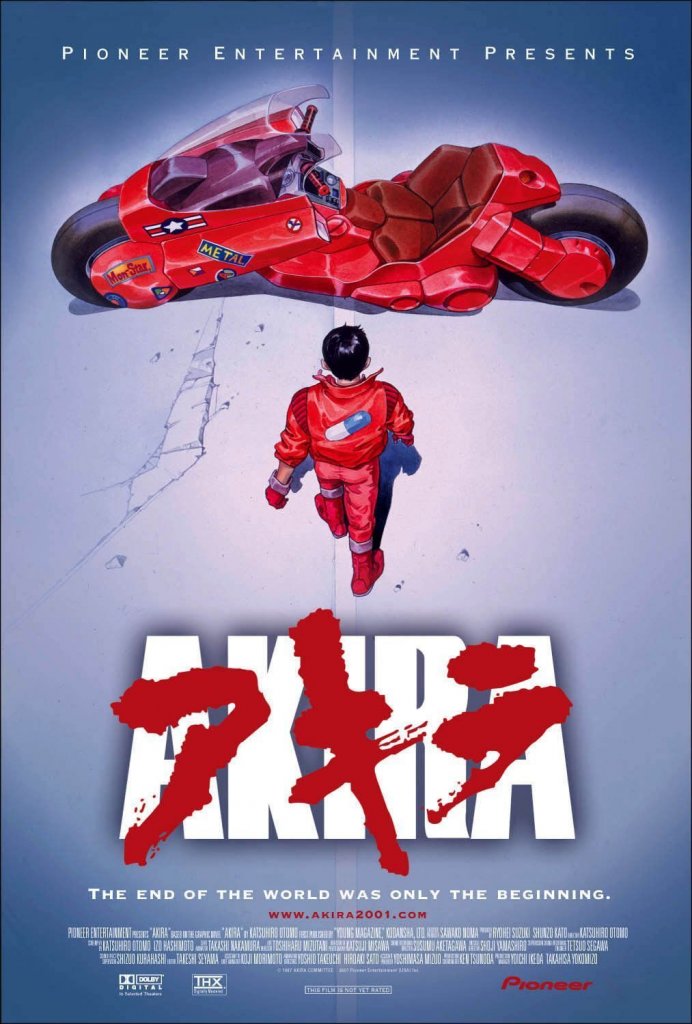
22. ROGUE ONE: A STAR WARS STORY (2016)
Director Gareth Edwards doubled down on the ‘War’ in Star Wars, telling the tale of the Rebels whose ‘no guts, no glory’ exploits will eventually lead to the destruction of the Death Star in A New Hope. Rogue One neatly tied in, but also enriched, aspects of the franchise, with a throwback quality to it that felt just right, depicting the grittiness of conflict and its costs. The action sequences are superb, especially in the final third, and it creates more new successful Star Wars characters, while tipping its hat to a few legends (in staggering technological advancement and fun cameos – Vader is scary again!). Commendably tragic yet inspiringly hopeful, Rogue One captures the true spirit of rebellion. It also has maybe the greatest closing sequence in Star Wars history. | JB
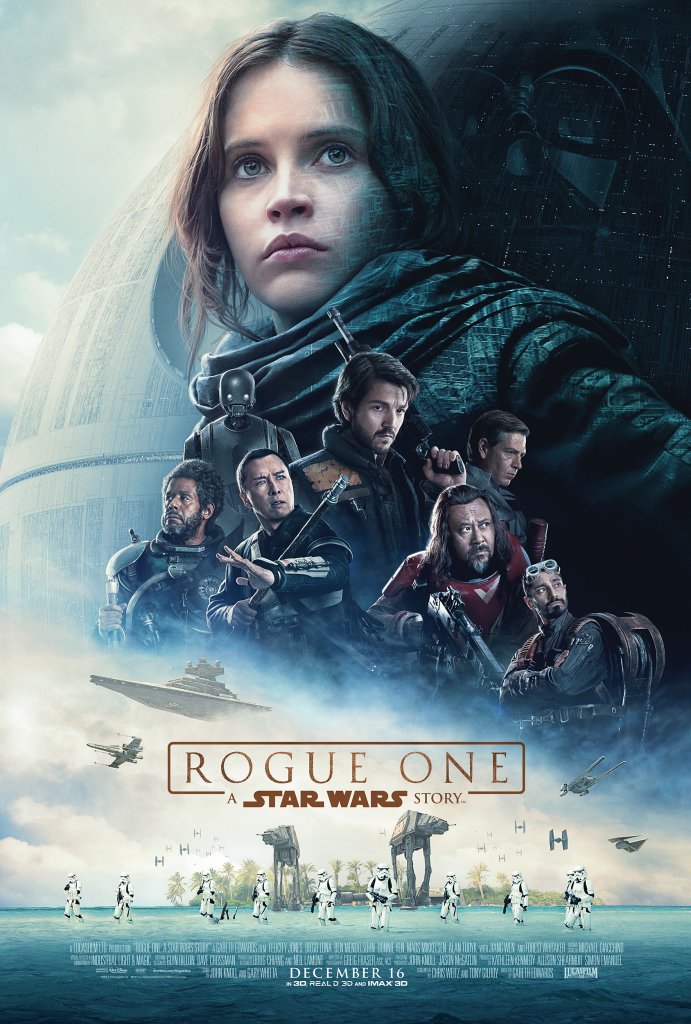
21. TOTAL RECALL (1990)
“Get ready for a surprise!” Another sci-fi classic that features that Austrian bloke, Total Recall is an adaptation of Philip K. Dick’s strange identity crisis short We Can Remember It for You Wholesale. Like all of Dick’s adaptations, the movie barely resembles the source material. The change in tone from ‘paranoid fantasy thriller with added Martians’ to ‘Raiders of the Lost Ark Goes to Mars’ made the movie very memorable. This means we get Arnold Schwarzenegger wise-cracking his way to Mars, attempting to seduce beautiful women, and bumping into utterly weird mutants. If you stripped away any of the sci-fi elements, we’d simply have another Arnie action movie about spies and betrayal. Instead, we get so much more, and an awful lot of incredibly memorable special effects. | EF
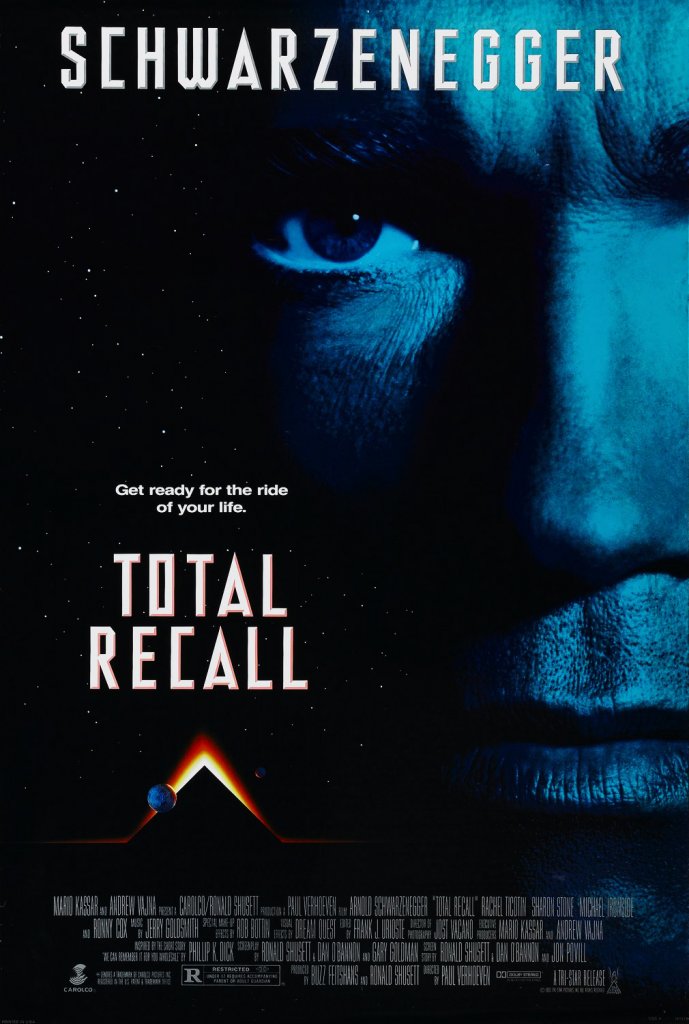
20. FORBIDDEN PLANET (1956)
This loose and updated version of Shakespeare’s The Tempest is one of the most innovative films of the fifties. Cruiser C-57D is on a mission to seek survivors of an earlier expedition to Altair IV, but they find only Morbius, a scientist who lives with his daughter Altaira, and Robby, a robot manservant. Morbius has discovered the technology of the Krell, the extinct inhabitants of the planet, whose intellects were superior to ours, but in using technology to boost their brainpower, they released their own subconscious demons. And now it’s happening again, as Altaira shows a romantic interest in the captain of the cruiser. Morbius’ jealousy releases his id monster, vividly brought to life by Disney animators, to kill and destroy. | RP
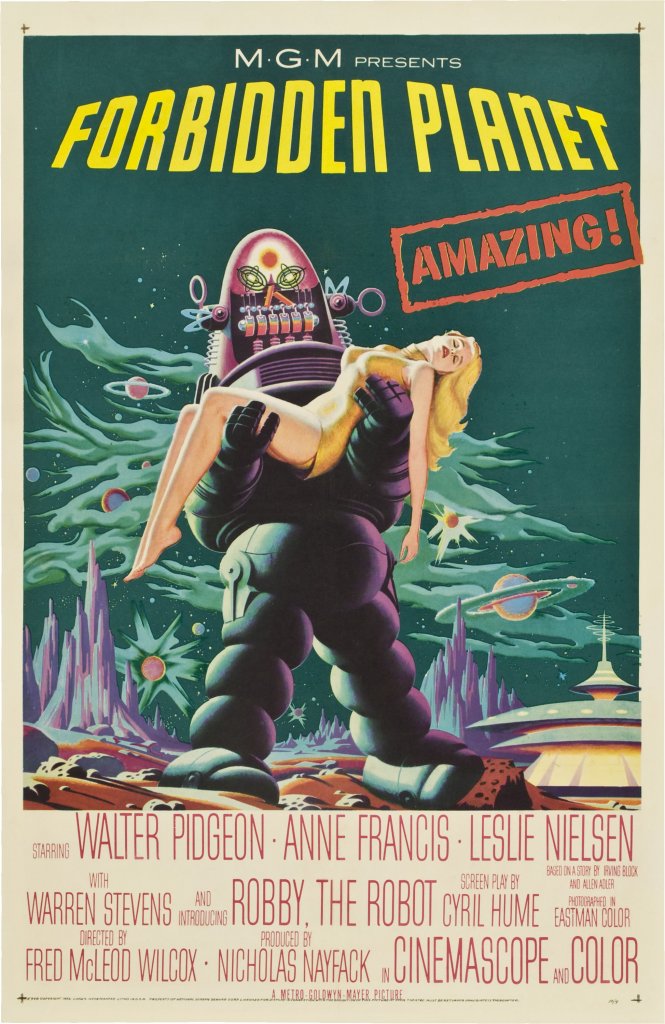
19. JURASSIC PARK (1993)
Clawing its way into cinemas back in the early nineties, no one could have foreseen the influential bite that Jurassic Park would go on to grasp. For those fortunate enough to have seen this theme park trip through time on the big screen upon its release, then this was an unforgettable experience to say the least. Directed by the master of the blockbuster Steven Spielberg and featuring an all-star cast including Sam Neill, Laura Dern, Jeff Goldblum, and Samuel L. Jackson to name just a few, the edge of your seat plot was backed up with a stunning score from John Williams (you’re singing the theme tune right now, aren’t you?). From the second a stunned Grant and Ellie look into the distance and see Brachiosauruses going about their day, you just know that you’re in for something very, very special. | AD
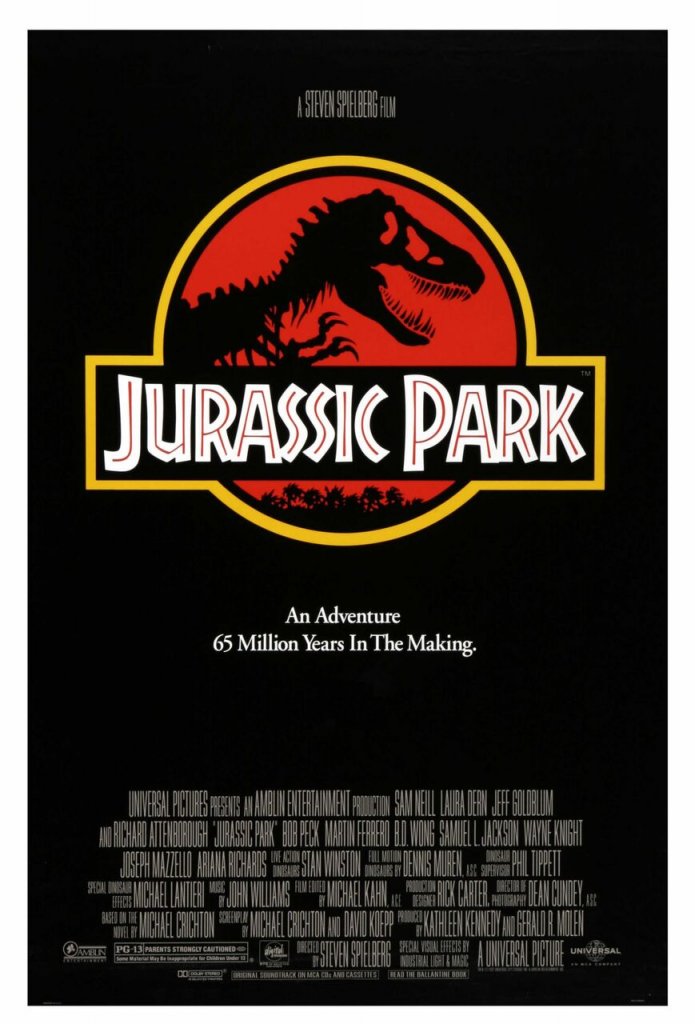
18. THE TERMINATOR (1984)
Skynet has sent back a Terminator from the future to kill the mother of the leader of the Resistance. In response, the Resistance has sent back Kyle Reese to protect her. A noir proto-slasher thinly veiled within a sci-fi storyline, this is the film that truly propelled Arnie into the stars. Most of the special effects still hold up pretty well today, and the chase element throughout absolutely does not let up, barely allowing you to catch your breath as the killer and prey lurch from one set-piece to another. Enjoy the ride and try not to think too hard about the time travel loopholes. | JG
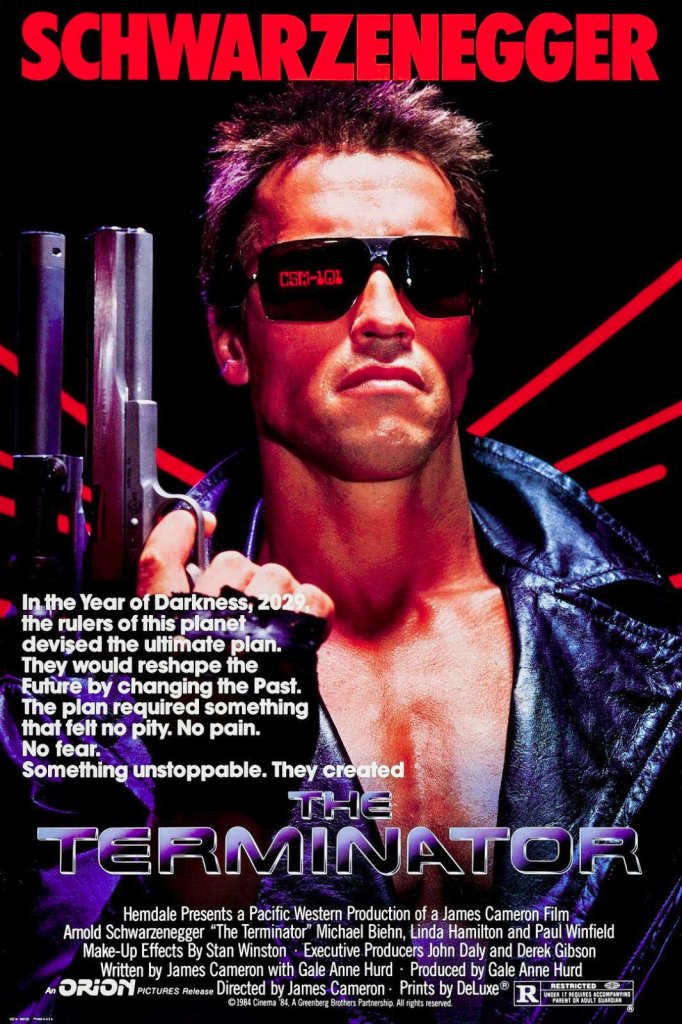
17. PLANET OF THE APES (1968)
One of the great science fiction movie classics, 1968’s Planet of the Apes was directed by Franklin J. Schaffner and based on Pierre Boulle’s witty, allegorical 1963 novel often known as Monkey Planet. Charlton Heston plays Taylor, leader of a trio of astronauts whose ship crash-lands on a strange and savage planet in the year 3978. The planet is ruled by talking apes in a strict caste system, and the humanoid species are mute, primitive slaves. Taylor is befriended by two chimpanzee scientists (Roddy McDowall and Kim Hunter), and when they discover that Taylor can talk, they begin to question everything they know about their society. Intelligent and thought-provoking, and with a final sequence that still resonates and shocks, Planet of the Apes launched a five-film franchise that would run until 1973 and return as a thrilling new trilogy in the 21st century. | PM
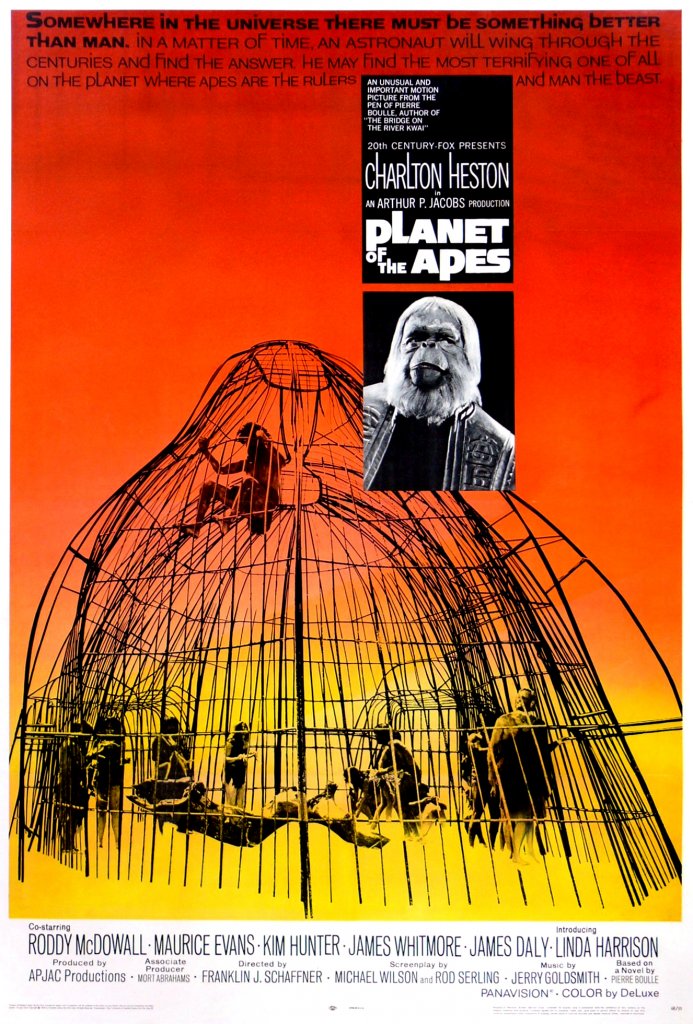
16. E.T. THE EXTRA-TERRESTRIAL (1982)
Steven Spielberg was in his absolute element here, as he gave us a bonding adventure between human and alien that has definitely stood the test of time. From E.T. eating everything in Elliott’s fridge, to bike-riding journeys through the streets of suburban California scored by the legendary John Williams, every scene remains firmly imprinted in the memory. Bringing emotion to the forefront, audiences witnessed something that completely tore at the viewer’s heartstrings, while daring to push the family film genre to a new level. May the phrase “phone home!” continue to be randomly said out loud with a nostalgic acceptance for decades to come. | AD
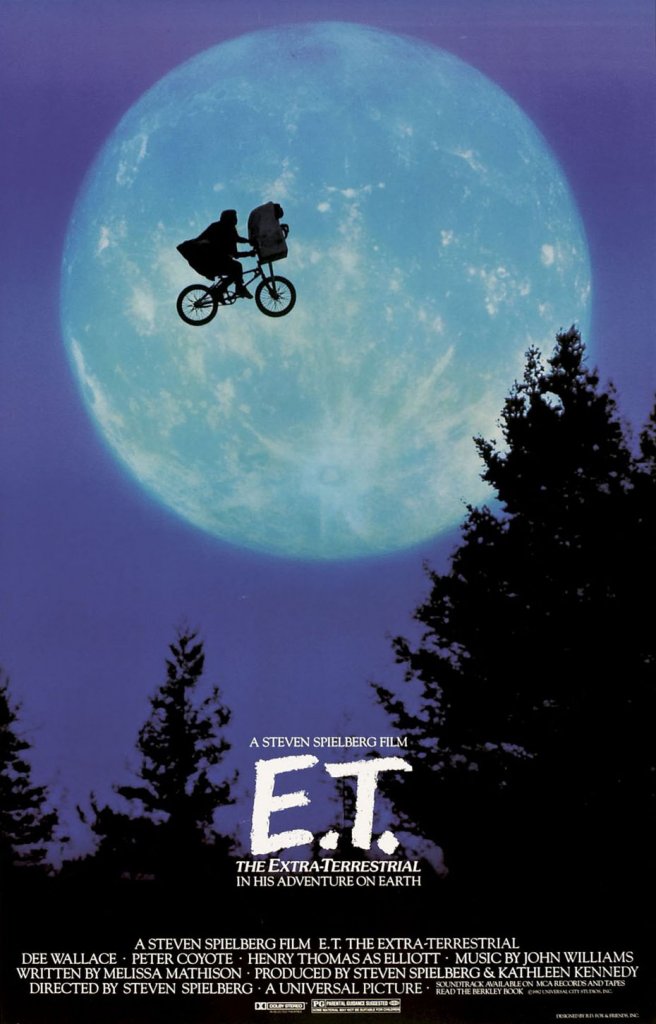
15. ROBOCOP (1987)
A biting political satire, a thoughtful reflection on the nature of identity and personality, and a brilliant sci-fi crime caper – the original RoboCop had to reach the screen in the 1980s: a time when neo-con ideology was ascendant. In crime-ridden Detroit, police officer Murphy is fatally shot while on duty. Megacorporation OCP reconstructs his body as a crime-fighting cyborg. A spearhead for the technology-driven privatisation of the police, RoboCop tackles a crimewave and pursues the criminal gang led by Boddicker. RoboCop’s human side begins to reassert itself through his yearning for restorative justice, while director Paul Verhoeven foregrounds the script’s clever and acerbic social commentary. It’s only in retrospect that it becomes clear that the masterful RoboCop will be Verhoeven’s most intelligent and perceptive film. | RC
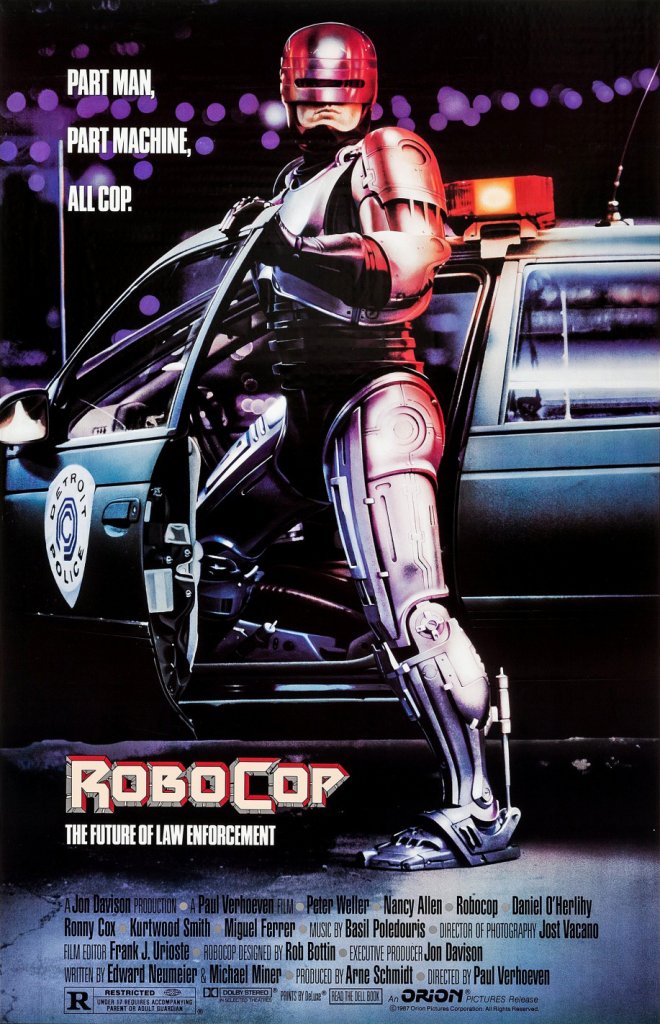
14. ARRIVAL (2016)
Many sci-fi stories brush over the language barrier with a universal translator or Babel fish, but here it’s front and centre as we follow Louise Banks, a linguist figuring out how to talk to an alien race whose ships have appeared across Earth. It’s sci-fi that takes its science seriously – that science being linguistics – but it’s also a poignant drama, with a heartbreaking performance from Amy Adams as Banks struggles with dreams about her daughter’s death. Eric Heisserer’s script intricately ties together that intelligent, geeky angle and that emotional, human side, so that they complement and build on each other; when you watch Arrival a second time, the jaw drops at how perfectly the big twist is set up. It’s ultimately optimistic about humanity and science’s ability to overcome staggering odds, and Denis Villeneuve’s visuals are gorgeous; the introduction of the Magritte-like floating spaceship lingers long in the mind. | KM
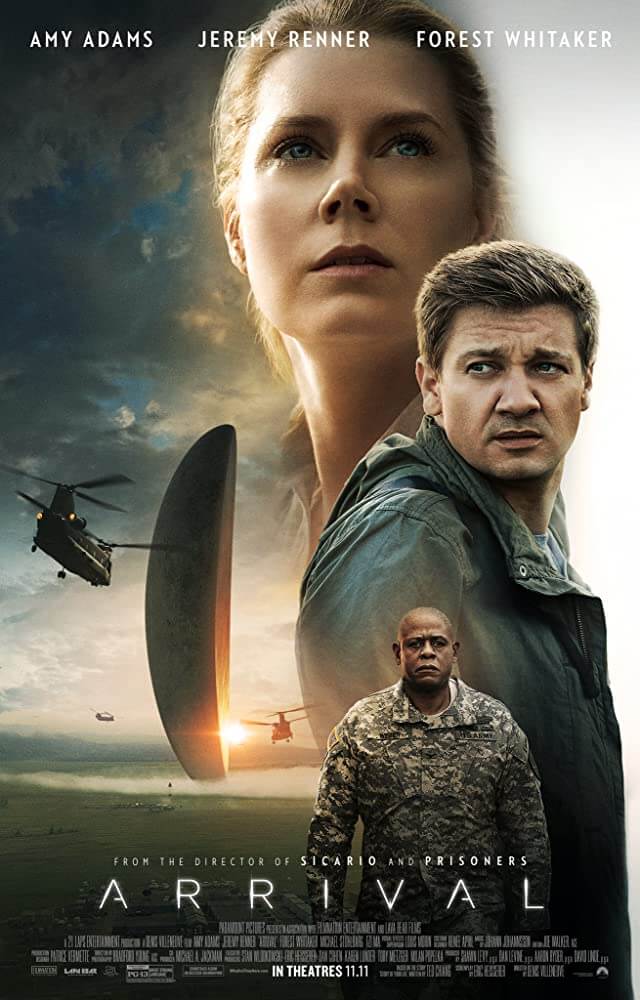
13. MAD MAX: FURY ROAD (2015)
Director George Miller revives his iconic series with one of the best action films of all time. Delivering something close to a two-hour car chase, the incredible thrill ride still makes time to reflect on contemporary anxieties – scarcity of natural resources, the climate crisis, class conflict, and general fears about the end of civilisation as we know it – in no small part thanks to incredible performances by Charlize Theron as the slave-liberator Imperator Furiosa and Tom Hardy as the titular Mad Max. Interestingly, given the film’s title, Max takes a backseat to Furiosa and the wives’ call to arms and liberation, which makes Mad Max: Fury Road an unexpectedly progressive action thriller without being tokenistic. Besides its feminist overtones, it’s also some straight-up, kinetic fun. Besides, any movie where a guy plays a flame-throwing electric guitar while strapped to a war rig has got to make this list. | LP
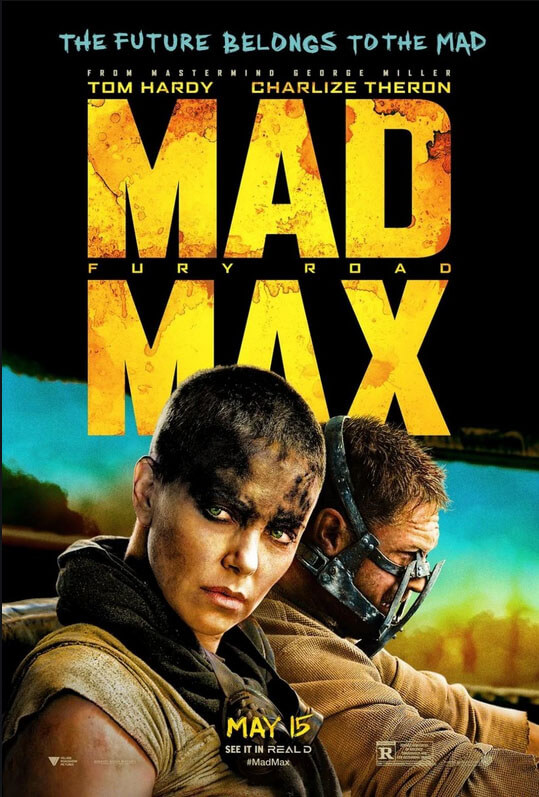
12. THE MATRIX (1999)
Rewatching The Matrix, it’s staggering how much it both feels like a product of its time and yet somehow has aged perfectly all the same. Capturing everything from Internet paranoia to complex philosophy and an enviable cyberpunk style, there remains nothing else quite like The Matrix. A brilliantly told story and aesthetic are lifted to legendary status by eye-popping visuals and groundbreaking camera work, ‘bullet time’ merely the highlight of all these. At the centre of it all is a great cast led by the one and only Keanu Reeves, arguably his best role to date. No other film has used his look and played to his strengths quite like this – only the John Wick films even come close. The Matrix has inspired a whole franchise and endless debate over its meaning and legacy. Perhaps the true moral of the story is this: always accept pills from strangers… | JH
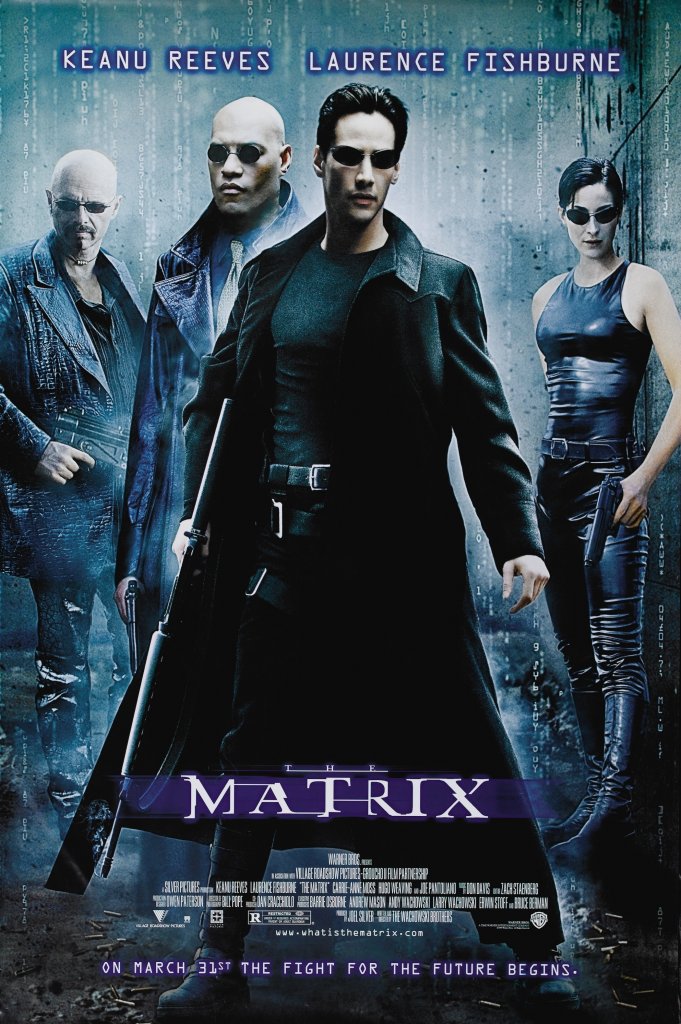
11. THE DAY THE EARTH STOOD STILL (1951)
“Gort! Klaatu barada nikto!” It’s hard to conceive that even those who haven’t seen Robert Wise’s classic science fiction masterpiece will not have at least heard the immortal phrase. It’s a stalwart of popular culture, after all. Based on Farewell to the Master by Harry Bates, The Day the Earth Stood Still tells the story of Klaatu, who visits Earth with an ultimatum: the human race must cease hostilities between itself or be destroyed. Hollywood A-listers Spencer Tracy and Claude Rains were both originally considered for the role of Klaatu before Michael Rennie was cast. It was believed that audiences would more readily accept Rennie as an alien due to him being relatively unknown. The realistic portrayal of an alien amongst us has lost none of its impact during the intervening decades. If anything, the film is more relevant now as it was seventy years ago. | CJ
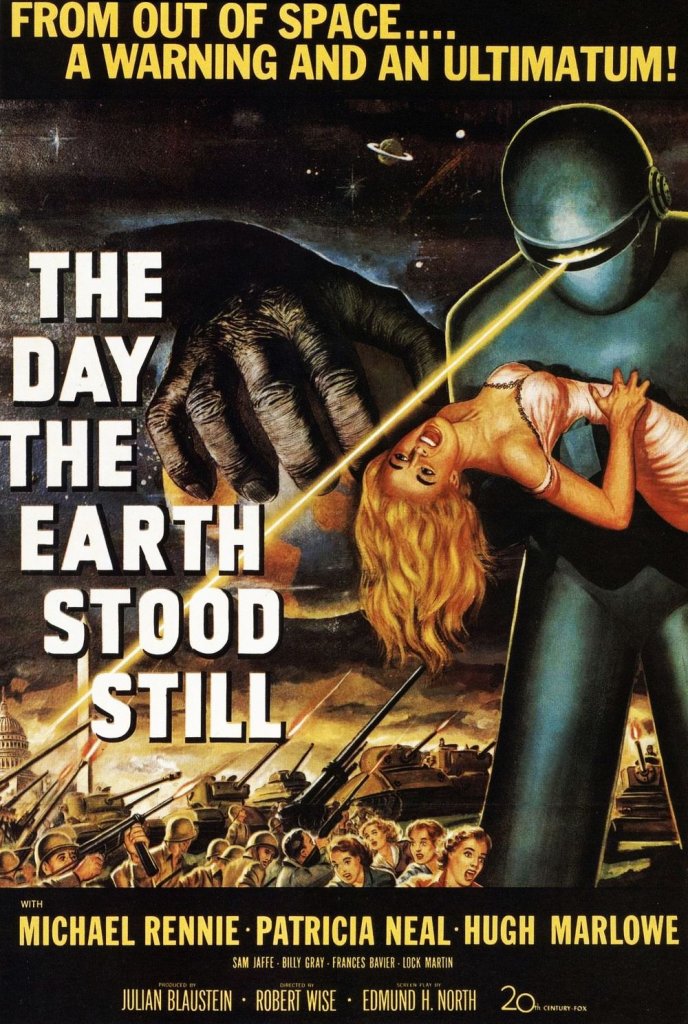
10. STAR WARS: EPISODE V – THE EMPIRE STRIKES BACK (1980)
How does one follow a film that changed the very landscape of cinema? Well, it heightens every aspect of that game and delivers something new, unexpected, and legendary. Director Irvin Kershner’s The Empire Strikes Back did just that and enjoys a reputation as one of the best sci-fi films and greatest sequels ever made. Lucas’ story grew in its reach and was fine-tuned by Lawrence Kasdan and Leigh Brackett’s screenplay, which took daring dark turns on the way to a soul-shaking twist that is one of the most influential and memorable in cinema history. Mark Hamill, Harrison Ford, Carrie Fisher, and Billy Dee Williams (alongside many returning and new actors) delivered top-drawer performances, as the franchise lore grew, creating characters and moments that have stood the test of time on the silver screen. Empire is the film all sequels are compared to. | JB
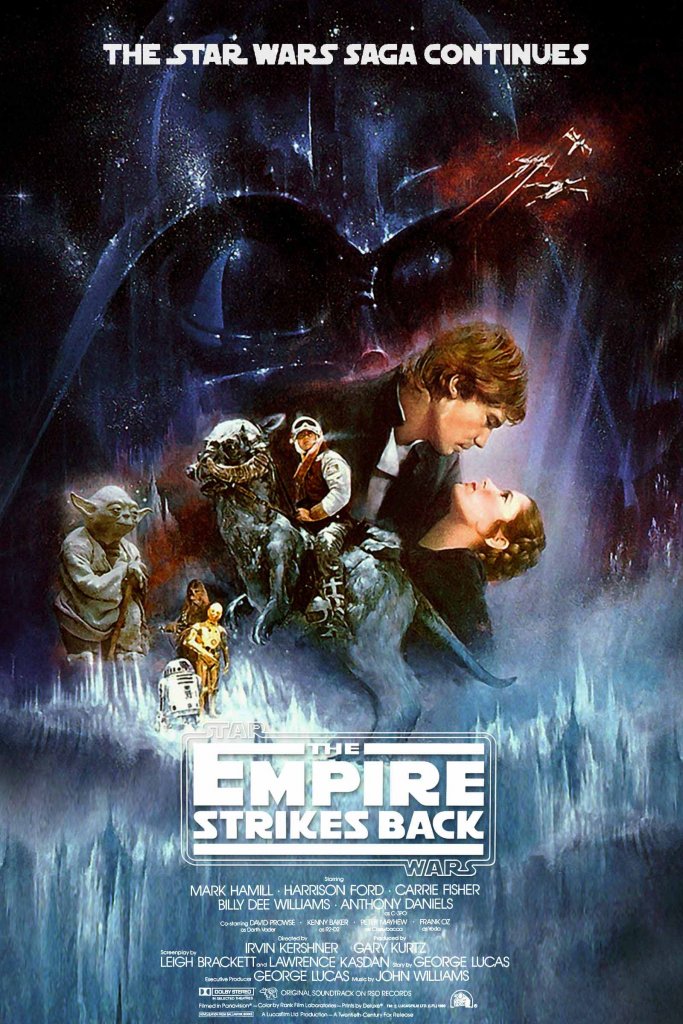
9. CLOSE ENCOUNTERS OF THE THIRD KIND (1977)
In 1964, a 17-year-old Steven Spielberg made his first feature film Firelight. Now lost, the plot revolved around the investigation into several disappearances connected to strange lights in the skies over Arizona. In his 1972 book, The UFO Experience: A Scientific Enquiry, astronomer and researcher J. Allen Hynek defined a classification system for UFO encounters, with the third category involving contact with an actual entity. Then, in 1977, Spielberg released Close Encounters of the Third Kind and presented aliens to the world. In truth, it wasn’t just the ‘realistic’ depiction of alien encounters but the manner in which he did it. Straight-faced, both horrific and enthralling, Spielberg gave credence to a niche subgenre combining awe-inspiring visuals with a truly glorious soundtrack. Close Encounters is the realisation of a dream; of a teenage filmmaker coming of age. And doing so in career-defining style. | JT
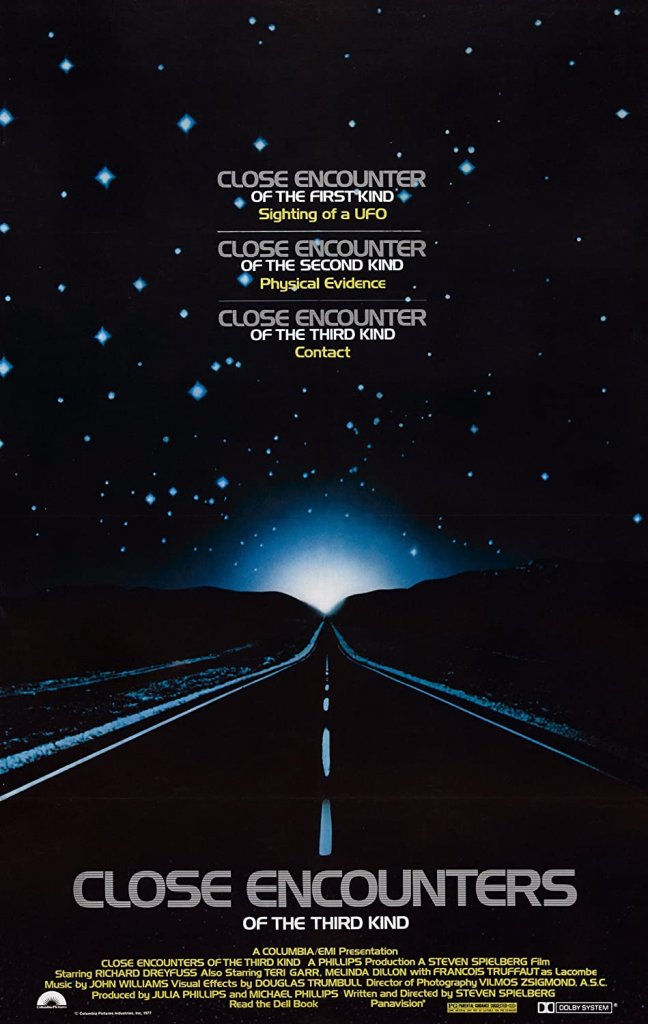
8. 2001: A SPACE ODYSSEY (1968)
Stanley Kubrick’s epic, co-written with Arthur C. Clarke, takes the hypothesis that alien life would be so unlike anything we recognise that an encounter would be indescribable, then visually describes that encounter. It begins with prehistoric hominids encountering an alien monolith, then, via the most famous cut in cinema, skips forward millions of years. Astronaut David Bowman must deal with his ship’s haywire AI before his own seriously trippy monolith meeting. A masterpiece upon its release, it’s still a masterpiece fifty years later. 2001’s science holds up (the astronauts use what seems to be an iPad), HAL’s breakdown is tense and terrifying, and it explores timeless themes and bold scientific ideas through pure cinematic imagery; dialogue may be sparse but almost every shot is iconic. Kubrick’s film is not as cold as his critics suggest; moments of emotion, not least Dave’s despair as HAL spirals out of control, show human players within this vast backdrop. | KM
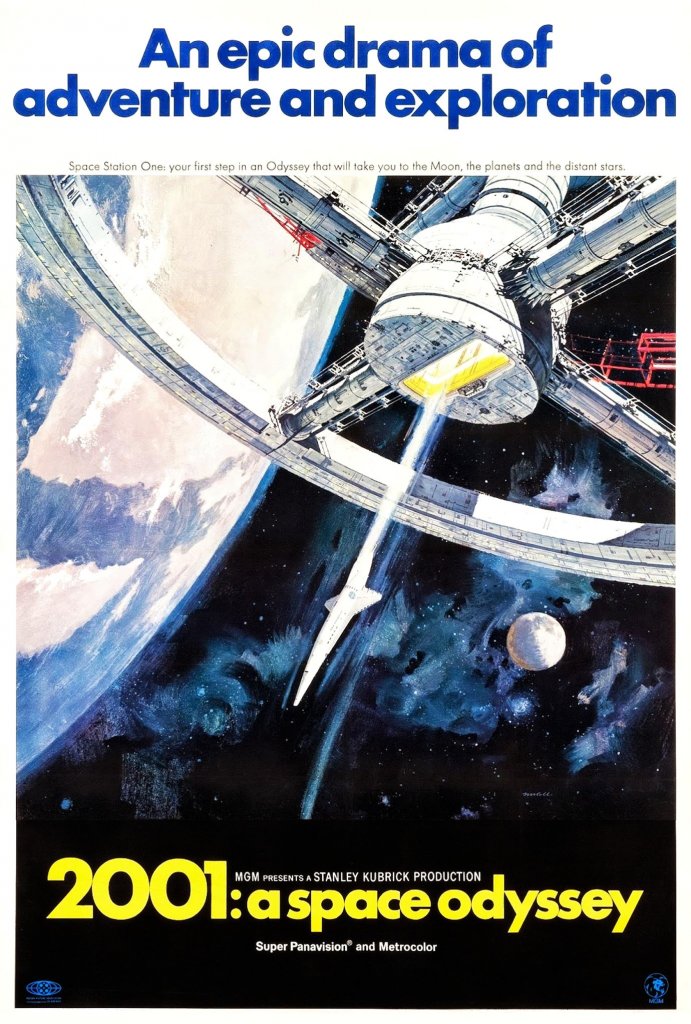
7. BACK TO THE FUTURE (1985)
Every aspect of Robert Zemeckis’ time-travel tale is just perfect, from its tight screenplay to the wonderful dynamic between its stars Michael J. Fox and Christopher Lloyd. Alan Silvestri’s score balances beautiful love melodies with adrenaline-fuelled horn numbers, and every scene has something to like about it, adding up to a film that is so much more than the sum of its parts. Given this, it also managed to spawn two great sequels, which is a rare achievement in filmmaking. Back to the Future turns 35 this year, so it’s the perfect time to revisit this classic. | SV
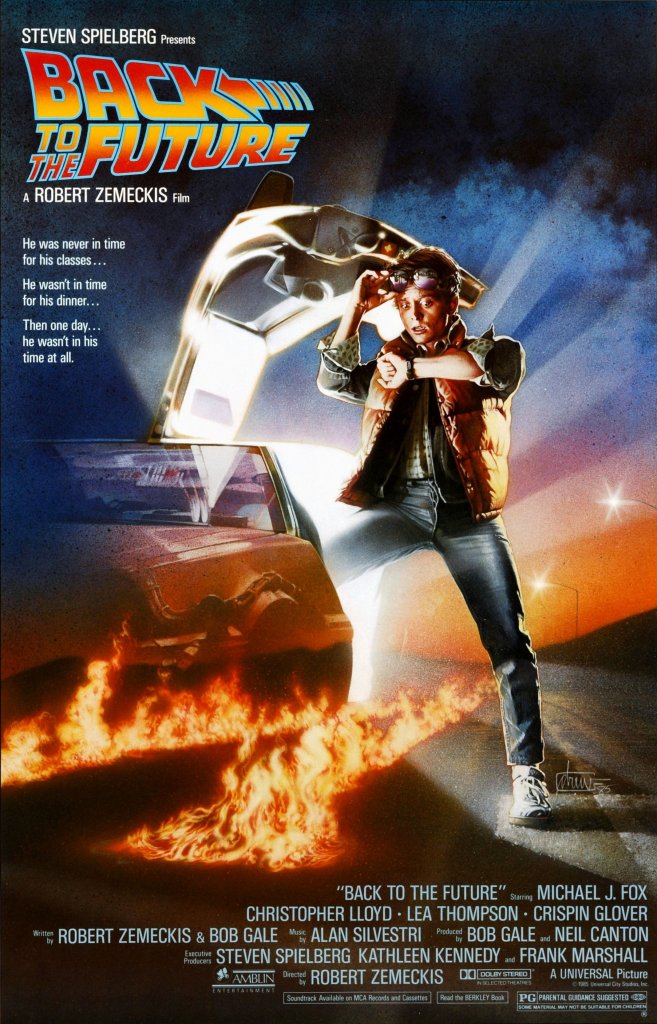
6. TERMINATOR 2: JUDGMENT DAY (1991)
Thanks to the special effects heralded by his previous film, The Abyss, T2 became one of the few films to prove that sequels can be better than the original. Arnie’s killer cyborg has now switched sides, with events taking place ten years after the original, and the Terminator Skynet has sent back this time is superior in nearly every way, to the point of it even being able to mimic humans to lure our heroes out, causing the T-800, Sarah, and John to be smarter in their choices. The set pieces are bigger, characters and the film universe are expanded, and seeing the original killer now become the saviour and trying to learn human emotions puts a very different spin on the film in comparison to the first. The ending may be the perfect swansong for the franchise. Forget any of the sequels that followed; this is the quintessential Terminator movie. | JG
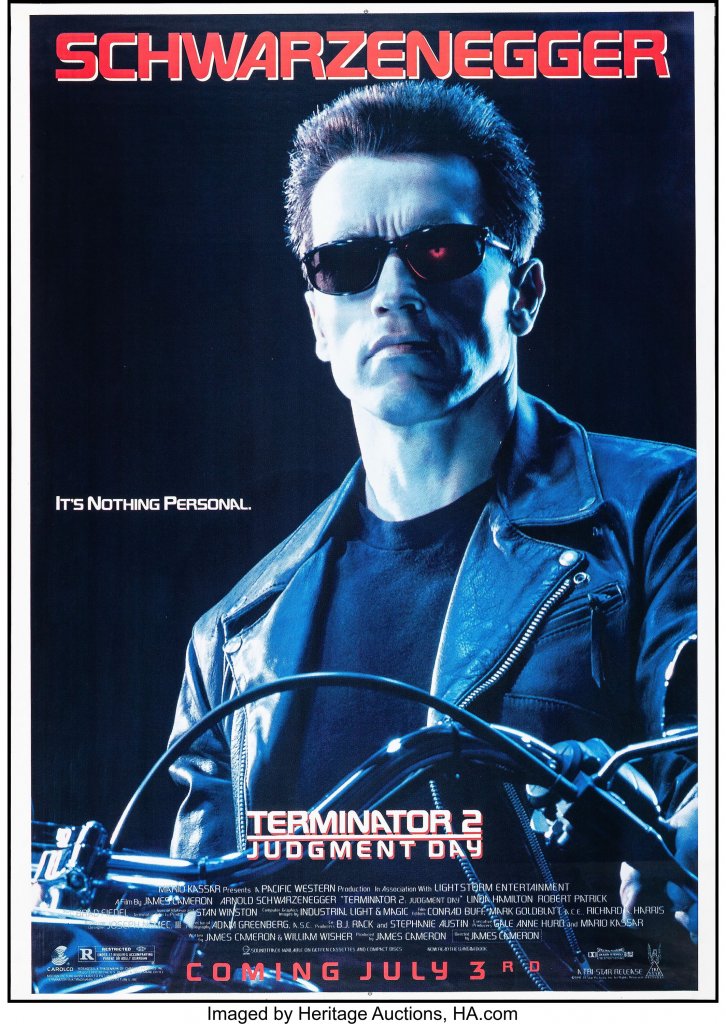
5. THE THING (1982)
Alien parasite that can take the form of anyone you know? Check. Claustrophobic Antarctic research station setting? Check. Kurt Russell with a flamethrower? Oh, hell yes. John Carpenter’s adaptation of John W. Campbell’s novella Who Goes There? was, unbelievably, a critical and commercial failure upon release. Justifiably, it has since been revised as not just one of the best sci-fi films ever made, but also one of the best horrors, and another addition to John Carpenter’s ridiculously impressive resume. Not only is it intense and nihilistic, there’s also an element of a ‘whodunnit’ genre in here. Or rather, a ‘who is it’, with the audience (and characters) constantly questioning who may have been infected as their anxiety rises. And let’s not forget the innovative, gory special effects that would make David Cronenberg squirm. Norris head spider anyone? Once viewed, you’ll never look at a blood test the same way again. | JA
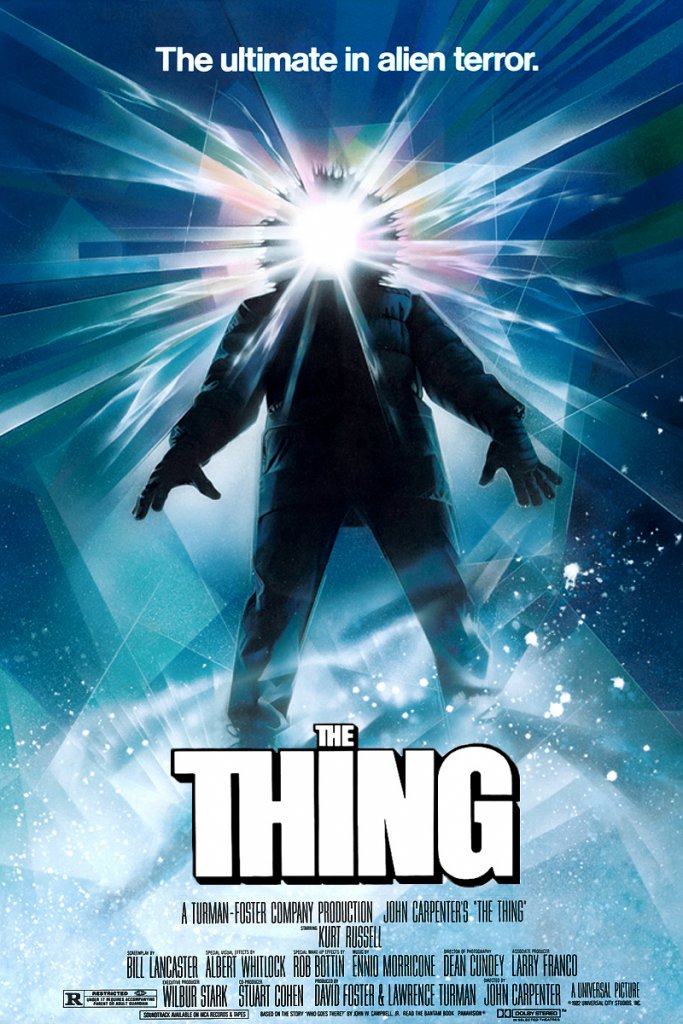
4. STAR WARS: EPISODE IV – A NEW HOPE (1977)
The film that started it all and transported us to a galaxy far, far away. George Lucas’ Star Wars was a huge risk and one that almost all but a select few saw as a sure-fire failure and the movie that would destroy his reputation. However, in a triumphant story befitting one of its characters, Star Wars not only succeeded, it changed the face of the industry. Since Star Wars, movies have opened out into more than just cinema, their stories bleeding into other media and even further than that. This simple tale of hope and heroism has become a modern myth and its iconic characters, visuals, and score have become ingrained in our culture, as have all the films and shows that have followed since. Star Wars is an acclaimed work of classic sci-fi fantasy that shook the genre like a Death Star blast, dominating pop culture ever since. As much a movement as a film, Star Wars and the franchise it created will live forever. | JB
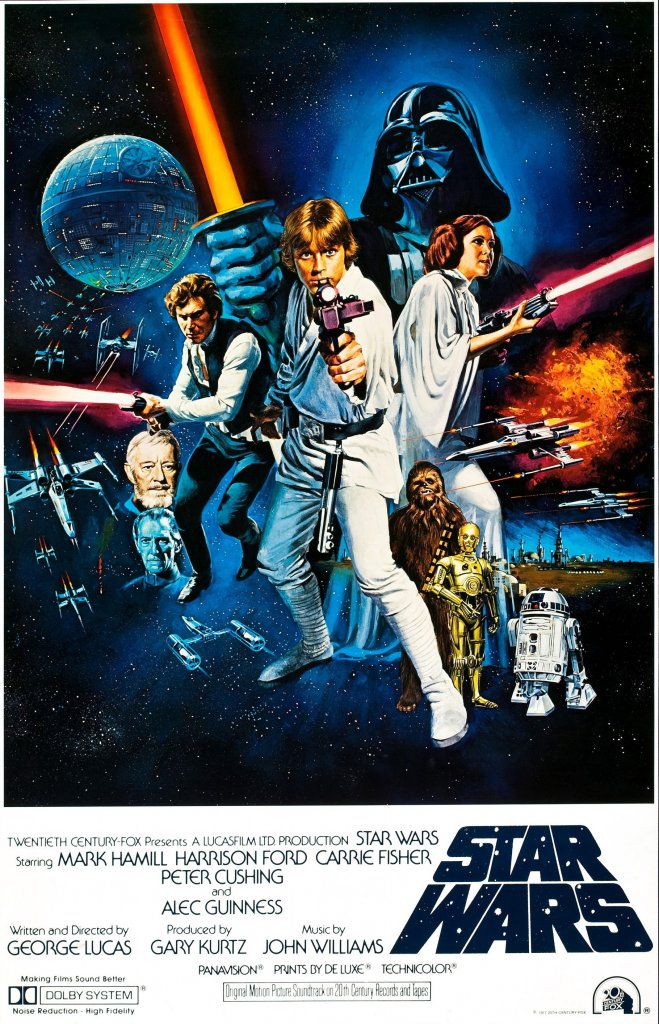
3. ALIEN (1979)
A seminal classic of sci-fi horror, Alien bucked the trend to phenomenal effect. Coming in the wake of Star Wars and Close Encounters, Alien toned it down from a grand scale adventure to something more human and claustrophobic, not to mention nightmarish. The crew of the Nostromo (and their cat) stumble across an alien life form and the rest, as they say, is history. We may prefer James Cameron’s gung-ho, guns-a-blazing sequel (just), but the horror show that Ridley Scott perfected still stands unparalleled in its quality and depth. Anyone who caught last year’s documentary Memory: The Origins of Alien will know just how much detail and thought went into making this the iconic film that it is. It made a star of Sigourney Weaver, not to mention giving us one of the most ingenious movie posters and taglines ever devised. Its most iconic ingredients have been recreated and referenced in everything from Red Dwarf to The Muppets. Alien birthed a cult-classic phenomenon that has forged an iconic place in movie history. | JH
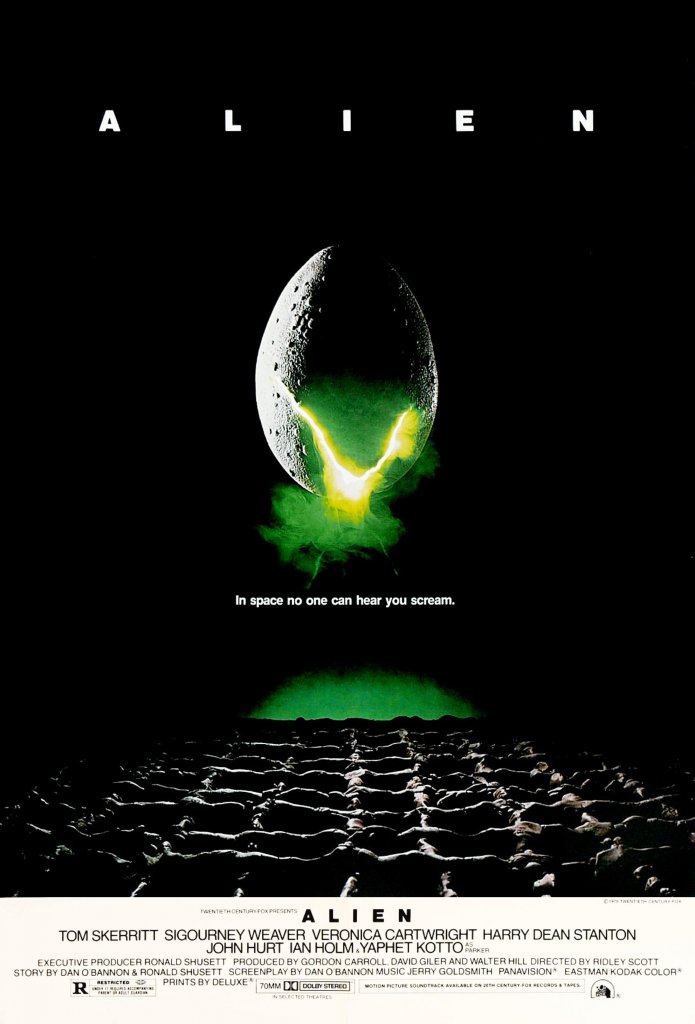
2. ALIENS (1986)
Scott’s Alien influenced countless filmmakers in and out of the genre, so in following one of cinema’s most respected classics, writer/director James Cameron decided to shake up the formula and birthed a new classic himself. Aliens takes the suspense and building dread of the original film and raises the action stakes, as it furthered Sigourney Weaver’s character, elevating Ellen Ripley to one the biggest badasses in all of cinema history. Boasting a cavalcade of dynamite supporting turns, incredible special effects, a riveting James Horner score and still quotable dialogue, Aliens is a perfect example of what a sequel can and should achieve, and is an engrossing piece of science-fiction craftsmanship that advances the lore of its franchise and brings audiences into its fight for survival against “the perfect organism”. Dramatic, intense, brutal, and exciting, with much to say about corporate greed and facing fear, Aliens – like its predecessor – is a titan in filmmaking, one that the franchise has struggled to match ever since. | JB
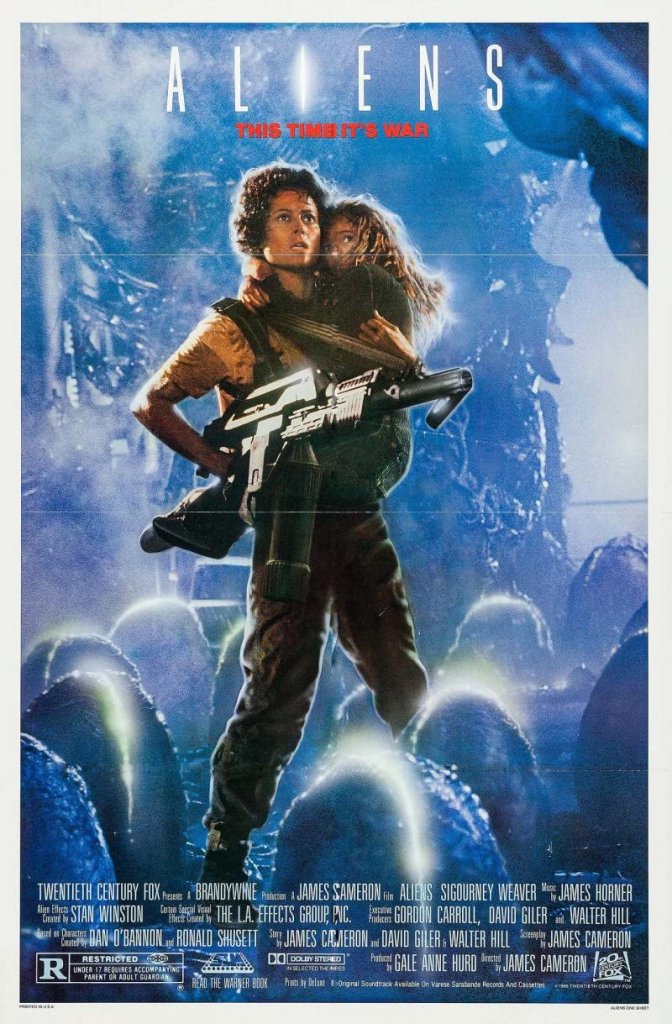
1. BLADE RUNNER (1982)
What makes a film influential? Jaws heralded an age of the summer blockbuster and like King Kong and Psycho before it has entered the cultural mindset. Lawrence of Arabia and 2001: A Space Odyssey demonstrated the true power and scope of cinema, while the latter changed forever how we view science fiction. We could go on. But what if a film has encompassed all this, left an indelible mark on cinema itself and influenced some of today’s most visionary filmmakers? There is one, and that film is Blade Runner. Ridley Scott’s cyberpunk masterpiece is as bold as it is brilliant. Presenting a bleak, strangely nostalgic view of the future glazed in neon and rain, Blade Runner tackles moral quandaries, explores forbidden love, and questions mortality. It is absorbingly atmospheric, and Scott’s use of light is revolutionary. And it has an addictive soundtrack by Vangelis. There are many reasons why Blade Runner is our number one, but above all, it is simply an astonishing piece of filmmaking. But don’t just take our word for it. To quote Guillermo del Toro, “…when I first saw it, I never saw the world the same way again”. Precisely. | JT
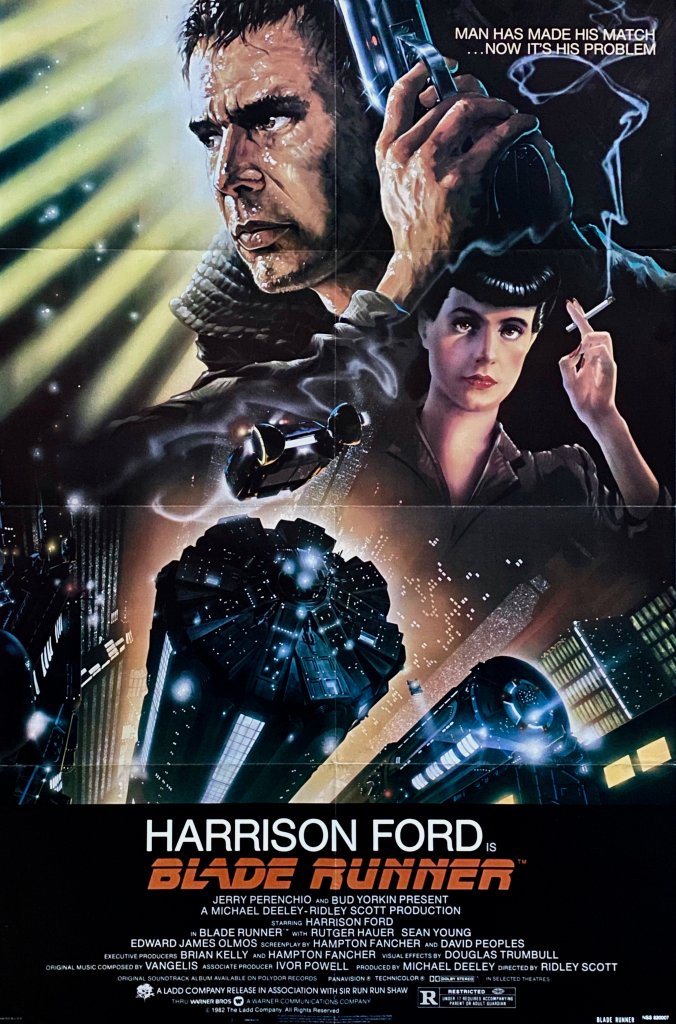
THE TOP 100 SCI-FI FILMS OF ALL TIME (AND SPACE) was voted for by STARBURST’s entire team, and as such the results are final, making resistance futile. That said, should you really want to argue your case for the inclusion of WATERWORLD or whatever you think we’ve unfairly omitted, head over to our social channels!
You can buy the films in this list by heading over to the STARBURST Amazon Storefront!
WORDS: ED FORTUNE | PAUL MOUNT | KIERON MOORE | ROBIN PIERCE | LAURA POTIER | JAMES HANTON JD GILLAM | VANESSA BERBEN | JOHN TOWNSEND | RICH CROSS | SCOTT VARNHAM | CHRISTIAN JONES JONATHAN ANDERSON | ALAN BOON | ANDREW DEX | ALEC FAZIER | KRIS HEYS | ANDREW POLLARD | NICK BLACKSHAW | JORDAN ROYCE | ANDREW MARSHALL | RACHEL KNIGHTLEY | STEPHEN PIERCE
This article was originally published in issue 473, September 2020.

